- The Top 10 Things To...

The Top 10 Things to See and Do in Brandenburg, Germany

A tour of Germany’s Brandenburg state takes you to several nature parks, beautiful gardens, pompous palaces and some haunting remnants of the Nazi era. We compiled a list of the top things to see and do, so you can get started on planning your trip.
Explore the state capital.
Brandenburg’s state capital is first and foremost known for Sanssouci Palace (which we’ll get to in a bit) but the city has more to offer. Potsdam is composed of a wide range of notable sights: the smaller rendition of Berlin’s Brandenburg Gate and St Nicholas Church, which was meticulously reconstructed after Allied bombing heavily damaged the church in World War II, for example. Or the Lindenstraße memorial site, a former-Nazi prison, which was later used by the Russian secret service and the Stasi, and which commemorates the harrowing experiences the inmates went through. Round the day off with a stroll past the red-brick, gabled houses of the Dutch Quarter and some fantastic food.

Marvel at the grandeur of Sanssouci Palace and Gardens
This Potsdam attraction deserves its own mention. Also known as Germany’s Versailles , the palace was built as an opulent summer residence for the Prussian king Frederick the Great in 1745. It’s smaller than its French cousin but lacks nothing in terms of beauty and grandeur. The imposing complex is an ensemble of the Sanssouci Palace , the Neues Palais and 600 acres (243 hectares) of sprawling parklands, with chateâux , monuments, temples and statues, grottoes, an obelisk and a picture gallery. You can easily spend an entire day here, touring the lavishly decorated rooms and roaming the parks and gardens.
Sanssouci Palace, Maulbeerallee, Potsdam, Germany

Become a Culture Tripper!
Sign up to our newsletter to save up to $800 on our unique trips..
See privacy policy .
Hide out in the romantic Spreewald forest
Honeymooners , loved-up couples and everyone else looking for idyllic landscapes should plan a visit to the Spreewald forest. Halfway between Berlin and Dresden , the Spree River has carved a magical labyrinth of waterways, moorlands and pastures into the countryside, which is best explored on board a rustic, wooden barge or paddle boat. If you have more than just a day to spare, book yourself into one of the thatched roof cottages or guesthouses that are tucked away behind large weeping willows along the burbling stream.

Chill under palm trees
Palm trees, humidity and waterfalls are probably not what you associate with Brandenburg, or Germany for that matter, but one place offers you exactly that. Modelled after Balinese themes, the Tropical Islands Resort was designed as a tropical oasis just one hour south of Berlin. The indoor pool occupies a former-aircraft hangar and comes with a spa, lush green trees and bushes, several pools and water slides, bars and restaurants, hammocks and even overnight accommodation. So, if you’re looking to escape one of those brutal Brandenburg winter days, you know where to go.
Tropical Islands, Tropical-Islands-Allee, Krausnick, Germany
Be humbled by a tour of KZ Sachsenhausen
Throughout Europe, countless memorial sites, internment camps and monuments commemorate the horrors of the Third Reich, purposely keeping them in the public consciousness of coming generations to help ensure history doesn’t repeat itself. The Sachsenhausen concentration camp played a unique role during the Nazi era: due to its vicinity to Berlin, which lies only 40 kilometres (25 miles) south, Sachsenhausen was not only one of the first camps to open, but its grounds also served as a training facility for SS personnel. In an ironic post-war turn of events, the Soviet government used the facilities to detain Nazi prisoners of war. A guided tour is humbling, educating and eye-opening at the same time.
Memorial and Museum Sachsenhausen, Straße der Nationen 22, Oranienburg, Germany

See where German television is made
What Universal Studios are to Los Angeles, the Babelsberg Studios are to Potsdam. They rank among the world’s first major film studios and even to this day see Hollywood stars use the facilities for their productions – Quentin Tarantino shot bits of Inglourious Basterds here, and George Clooney shot scenes for The Monuments Men . A guided tour grants a glimpse behind the scenes of filmmaking and tours the sets of widely popular German TV shows, shows props, costumes and technical equipment of renowned productions, and introduces you to several people working on set. You can even test your skills as a weather forecast presenter and take a seat in a 4D action cinema.
Filmpark Babelsberg, August-Bebel-Straße 26-53, Potsdam, Brandenburg, Germany
Explore a part of England within Germany
The Babelsberg Park on the banks of the Havel River bears more lush nature for you to explore. Across 280 acres (114 hectares), the flawlessly maintained grounds are studded with sculptures and mosaics, Gothic fountains, a landscaped English garden and stunning views of the bordering Jungfernsee and Tiefer See lakes. The 1833 Babelsberg Palace is currently undergoing renovations and is closed to the public, but adds to the serene charm with its Gothic Revival façade.
Park Babelsberg, Park Babelsberg, Potsdam, Germany

Go birdwatching
The Lower Oder Valley National Park encompasses 60 kilometres (37 miles) of riverside meadows along the Oder River, both on the German and Polish side. The enchanting landscape is a significant resting and wintering ground for many bird species, and the arrival of more than 13,000 cranes attracts wildlife enthusiasts and photographers every year. Other common wildlife sightings involve otters, beavers and eagles, which you might see if you follow the hiking trails and cycling routes that traverse the park.
Rise above the abandoned Beelitz-Heilstätten hospital
Once a prestigious clinic for pulmonary diseases, the Beelitz-Heilstätten were used as military hospitals in World War I and II, and at one time also helped save the lives of both Adolf Hitler and Erich Honecker. For years and years, the spookily abandoned complex of the Beelitz-Heilstätten hospital near Potsdam attracted so-called ‘Lost Places’ photographers and curious travellers, but the increasing incidents of vandalism forced the local government to take action to prevent nightly visits. Since 2015, tourists get the chance to explore the site completely legally, by following a canopy walk around the grounds, or by booking additional photo tours of the iconic interior.
Baumkronenpfad Beelitz Tree & Time, Straße nach Fichtewalde 13, Beelitz, Germany

Stroll around Barnim Nature Park
Covering 750 square kilometres (75,000 hectares) north of Berlin, the Barnim Nature Park is the ideal refuge if you want to get out of the buzzing city and reconnect with nature. The diverse landscape of mystical alder and beechwood forests, stunning lakes, pastures and moorlands can easily be explored as a day trip from both Berlin and Potsdam.
Culture Trips launched in 2011 with a simple yet passionate mission: to inspire people to go beyond their boundaries and experience what makes a place, its people and its culture special and meaningful. We are proud that, for more than a decade, millions like you have trusted our award-winning recommendations by people who deeply understand what makes places and communities so special.
Our immersive trips , led by Local Insiders, are once-in-a-lifetime experiences and an invitation to travel the world with like-minded explorers. Our Travel Experts are on hand to help you make perfect memories. All our Trips are suitable for both solo travelers, couples and friends who want to explore the world together.
All our travel guides are curated by the Culture Trip team working in tandem with local experts. From unique experiences to essential tips on how to make the most of your future travels, we’ve got you covered.

Guides & Tips
Top tips for travelling in germany.

See & Do
10 reasons why you should visit bavaria.

Places to Stay
The best hotels to book in garmisch for every traveller.

The Best Hotels to Book in Thuringia, Germany

The Story Behind Germany's Neuschwanstein Castle

Craft and Culture in the Lesser-Known Gems of Eastern Germany

The Best Hotels in Germany for Every Traveller

Places in Germany for History Lovers

Architecture
Breathtakingly beautiful buildings in germany.

Stay Curious: Experience Germany From Your Living Room

The Best Spa Hotels in Baden-Baden

A Voyage Through Germany: the Lowdown on River Cruising
Culture trip spring sale, save up to $1,656 on our unique small-group trips limited spots..

- Post ID: 1000100218
- Sponsored? No
- View Payload
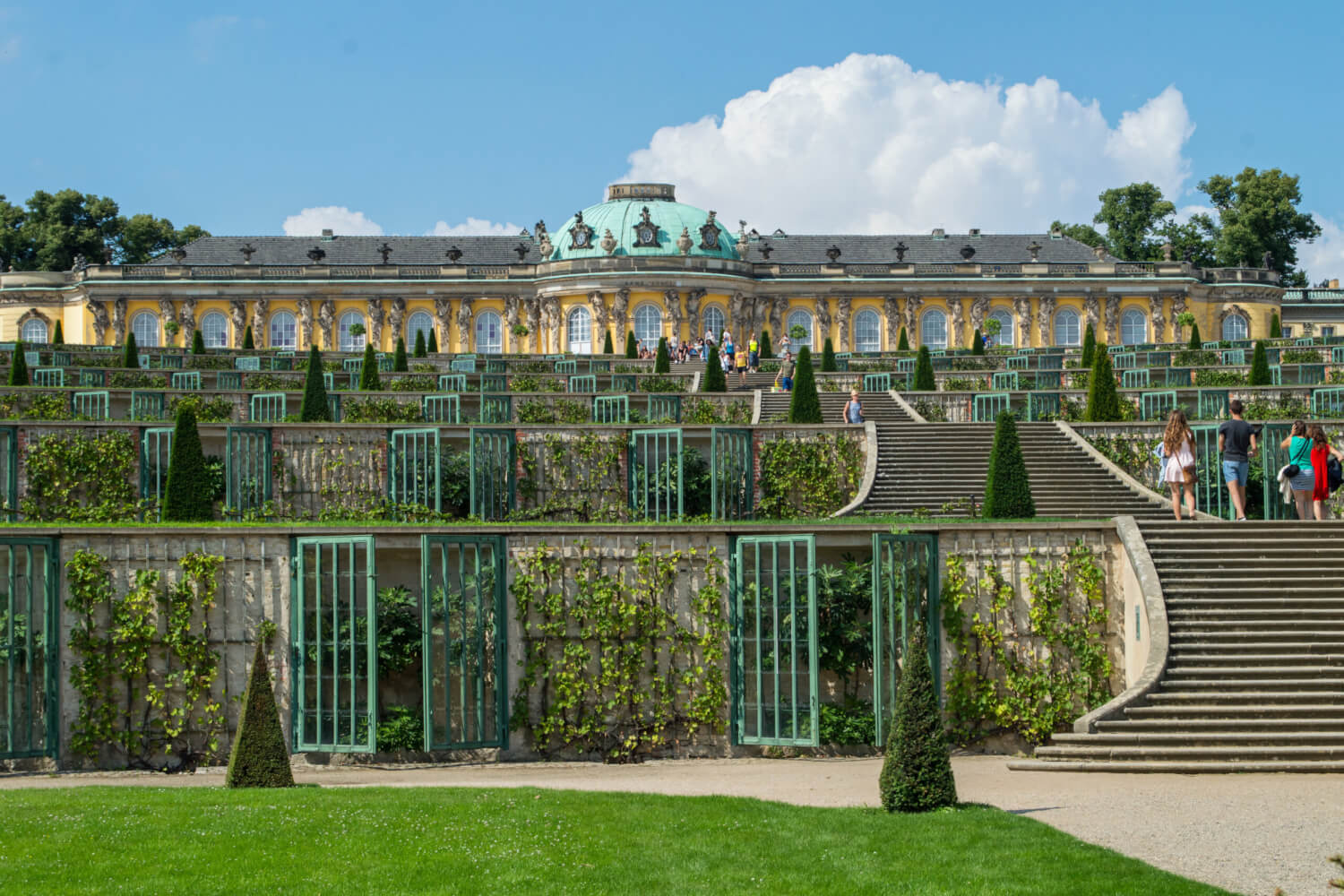
11 Interesting & Beautiful Places to Visit in Brandenburg
*FYI - this post may contain affiliate links, which means we earn a commission at no extra cost to you if you purchase from them. Also, as an Amazon Associate I earn from qualifying purchases. Check out our Privacy Policy and Disclosure for more info.
From beautiful castles and palaces to indoor tropical islands, there are many unique things to discover in the German state of Brandenburg!
Brandenburg surrounds the capital city of Berlin , as well as the cities of Potsdam and Brandenburg, meaning yes, there is indeed a city called Brandenburg within the state of Brandenburg… but there’s a lot more to the state than that!
In this list of fascinating places to visit in Brandenburg, we’ll be sharing some of our favorite destinations in this German state, including both man-made and natural attractions.
We hope you enjoy our recommendations, and be sure to let us know in the comments if there are any must-see Brandenburg places you would add to our list!
Directly next door to Berlin is Potsdam, the capital city of the state of Brandenburg and one of the most popular Brandenburg attractions.
Potsdam was originally the home of the Prussian Kings, is over 1,000 years old and home to Germany’s largest World Heritage Site; the Sanssouci Palace (more on that in the next section). There are actually a number of beautiful palaces to explore in Potsdam, as well as a Roman Baths complex and a Chinese Tea House.
The entire city is filled with beautiful historic architecture, including three remaining city gates from the original city wall, the Neoclassical dome of St. Nicholas’ Church and the Gothic revival Babelsberg Palace.
There are also two unique street quarters, one featuring Dutch architecture and the other Russian, built by the many immigrants who came to Potsdam from all over Europe. We also recommend experiencing the waterways of Potsdam via one of the Weisse Flotte steamboats!
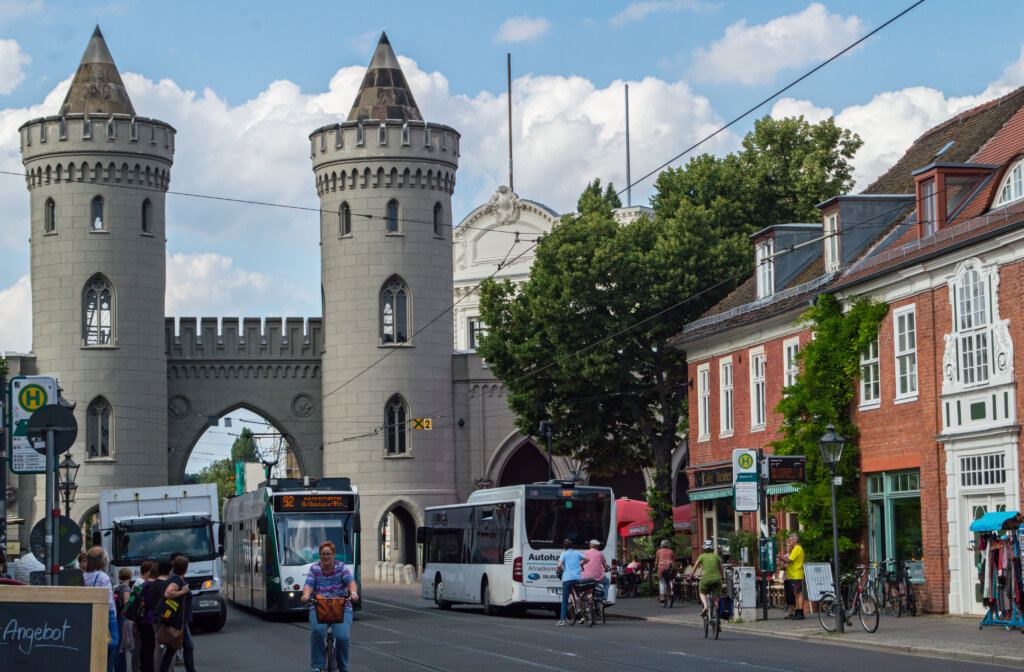
2. Sanssouci Palace and Gardens
The incredible Sanssouci Palace and Gardens is easily one of the most beautiful places in Brandenburg, often considered a German rival to Versailles in France.
Sanssouci was built as the summer palace of Prussian King Frederick the Great between 1745 and 1747. While it’s smaller than Versailles, it still features many charming follies, temples and fountains in the surrounding gardens.
The French phrase sans souci means ‘without concerns’ and that is exactly how King Frederick felt whenever he retreated from the royal court to relax here. Today, more than 2 million people come from around the world to enjoy his favourite home.
PRACTICAL INFORMATION FOR VISITING: Make sure you check the opening times for Sanssouci Palace ahead of time as they vary throughout the year. You can also save €5 by booking your tickets online instead of at the palace!
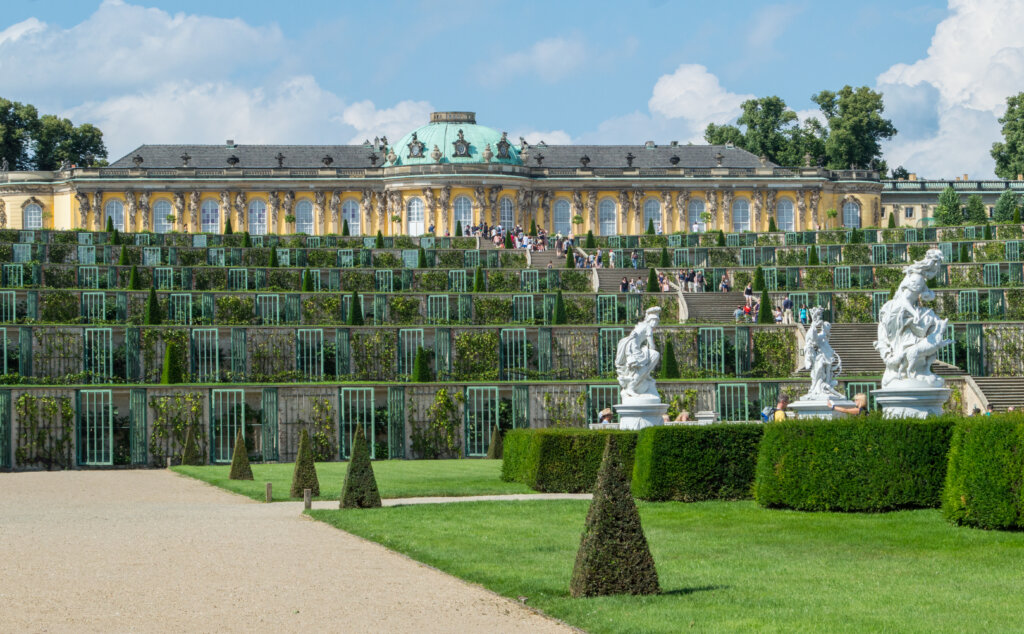
3. Schloss Cecilienhof
Another example of beautiful places to see in Brandenburg is Schloss Cecilienhof; which is also a palace in Potsdam, although it’s built in the style of an English Tudor manor house.
Kaiser Wilhelm II had Schloss Cecilienhof built for his oldest son, Crown Prince Wilhelm and his wife Cecilie, for who it was named. It was constructed between the years 1914 to 1917 and was the last palace built by the House of Hohenzollern – who ruled Prussia and the German Empire until the end of WWI.
Both Crown Prince Wilhelm and Cecilie were very impressed by the Tudor-style homes of England, and while Schloss Cecilienhof looks like a small manor, it actually holds 176 rooms.
Cecilienhof was also famously the location of the Potsdam Conference, where the leaders of the Soviet Union, the United Kingdom and the United States met to discuss the plan for peace after WWII.
PRACTICAL INFORMATION FOR VISITING: It’s possible to book a combined ticket to explore both Sanssouci and Cecilienhof on the same day. Make sure you also check the opening times as they change seasonally.
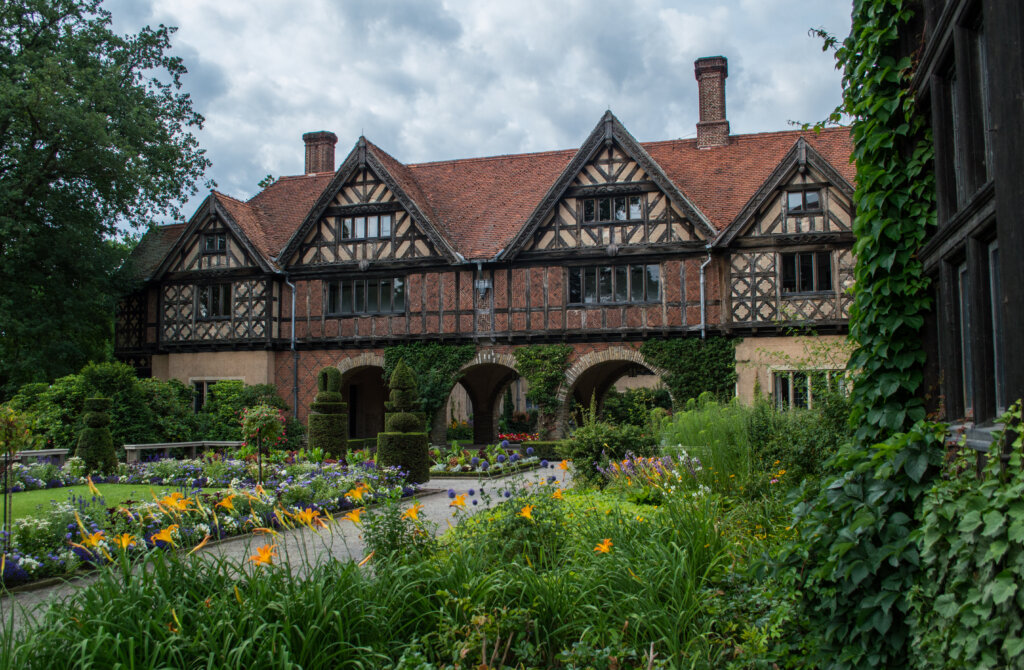
4. Tropical Islands
One of the most unique Brandenburg places to visit is the Tropical Islands Resort, which is located within a massive former airship hangar!
The Tropical Islands Resort is a fascinating attraction, holding records for being located in the largest free-standing hall in the world as well as being the largest indoor waterpark in the world. Additionally, it’s the largest tropical holiday resort in Europe and houses the largest sauna complex in Europe.
Yes, it’s all a pretty big deal.
In 2004, the converted airship hangar was opened as a theme park, sauna, spa and hotel where the temperature inside is kept at a humid 26 °C (78 °F). Inside the hangar are multiple swimming pools, slides, fountains, tents, rooms, lodges, restaurants, bars, a beach and the biggest indoor rainforest in the world.
There are different themed areas for visitors to explore as well as different admission options, whether you want to spend a day or stay a few nights with the entire family. If you’re looking for a truly unique place to visit in Brandenburg, be sure to put this one on your list!
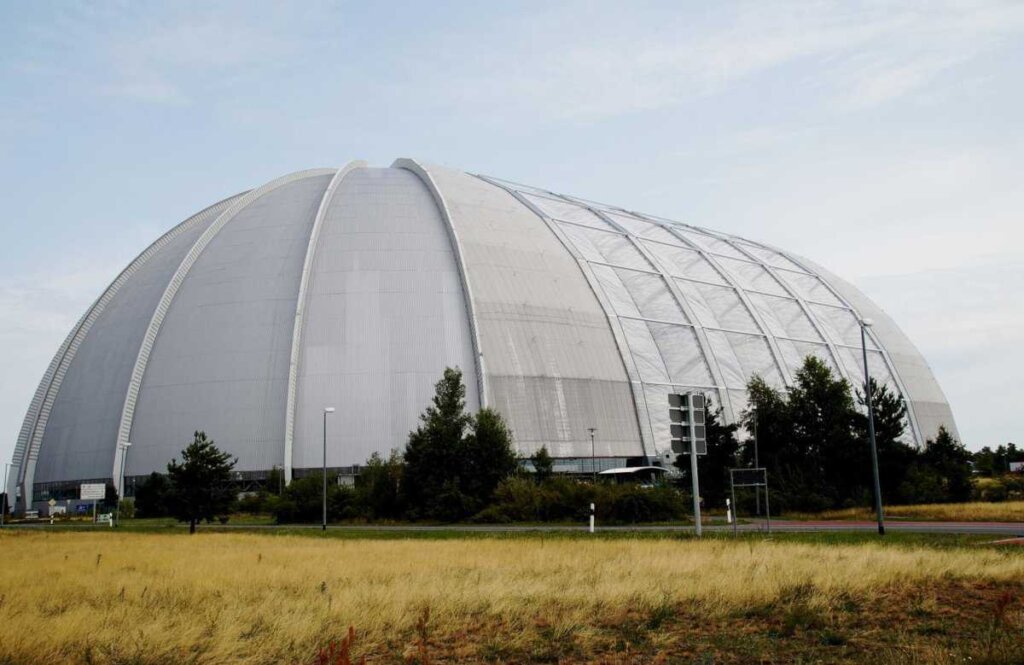
5. Beelitz Treetop Walkway
Another example of more unusual things to see in Brandenburg is the Beelitz Treetop Walkway, where visitors can stroll 23 metres high amongst the trees that have gradually taken over the grounds of what used to be a sanatorium.
The Beelitz Sanatorium was once a site for people from Berlin with tuberculosis to come and recover in the fresh air. It was then used as a military hospital in WWII, before being left to decay. While the buildings have been left to crumble, in 2015 a treetop walk was opened for visitors to enjoy seeing the ruins and surrounding trees from up on high.
It’s an eerie place, but popular with locals and tourists alike who come to relax or get some exercise. There’s also a 36-metre-high observation tower where you can see all the way to Berlin on a clear day.
PRACTICAL INFORMATION FOR VISITING: The main park is open every day for different hours depending on the seasons, except winter when it’s closed. Entry costs €13.50 for adults and it’s also possible to join a guided tour of the hospital grounds for an additional cost.
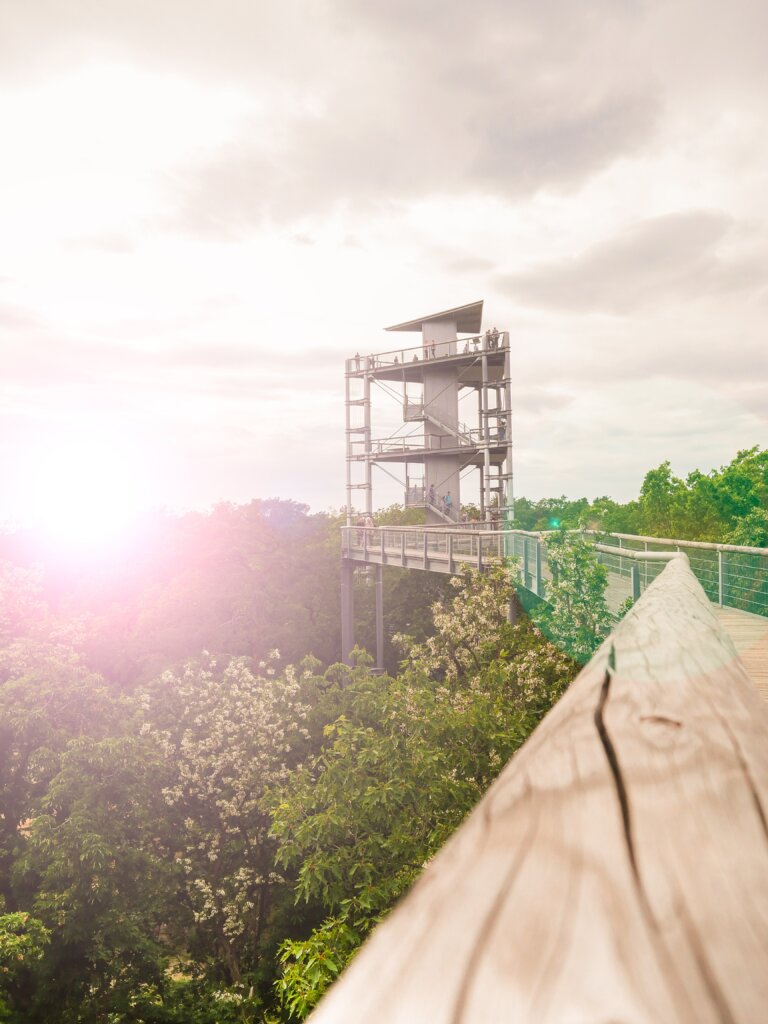
6. Spreewald Forest
The state of Brandenburg is filled with forests, and Spreewald Forest is our pick as one of the best places to visit in Brandenburg if you want to get close to nature.
Translated to the ‘Spree Forest’ in English, Spreewald is located on an inland delta of the River Spree, about 100 km southeast of Berlin. It’s a UNESCO-designated Biosphere Reserve due to the traditional irrigation system which features more than 200 canals, usually traversed by the traditional flat-bottomed boats known as Spreewaldkähne.
Within this area are a number of small villages with canals instead of streets, in particular Lehde, which is also home to an open-air museum where visitors can learn about 19th-century life in the Spreewald. There’s also a Pickle Museum ( Gurkenmuseum ) in Lehde since the region is well-known for producing cucumbers!
If you can time your visit for the annual pickle festival (in summer) you’ll get to see locals showcasing their best pickle recipes in hopes of being crowned Pickle Queen for the year but the region is very magical no matter when you visit.
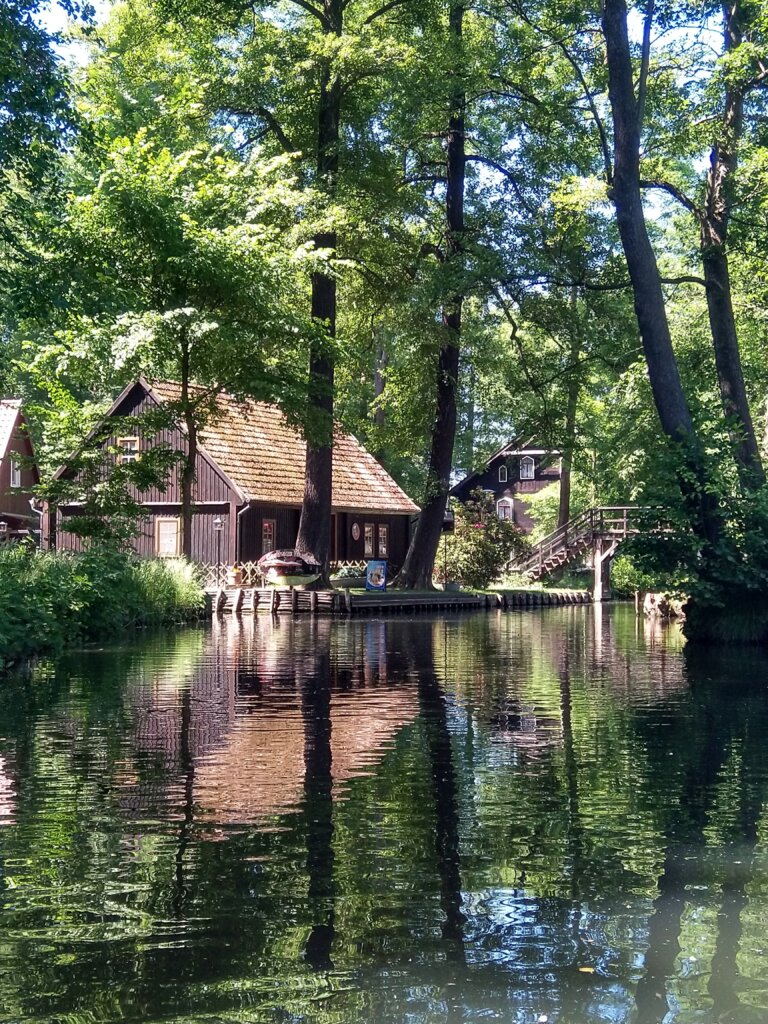
7. Chorin Monastery
About an hour’s drive from Berlin is the first brick Gothic building to be built in Brandenburg – the Chorin Monastery.
Founded in 1258, this former Cisterian abbey fell into decay during the 19th-century but was restored by the Prussian architect Karl Friedrich Schinkel. Since its restoration, Chorin Monastery has become a popular destination for artists, partly since it looks similar to the cathedrals of Paris but also since it’s surrounded by stunning forests and the Amtsee lake.
Today the monastery hosts many interesting events, including a Summer Music Festival, New Year’s concerts, an Easter festival and a herbs and ceramic festival. Visitors can join a guided tour to learn about the monastery’s history or view art on display in the abbot’s house.
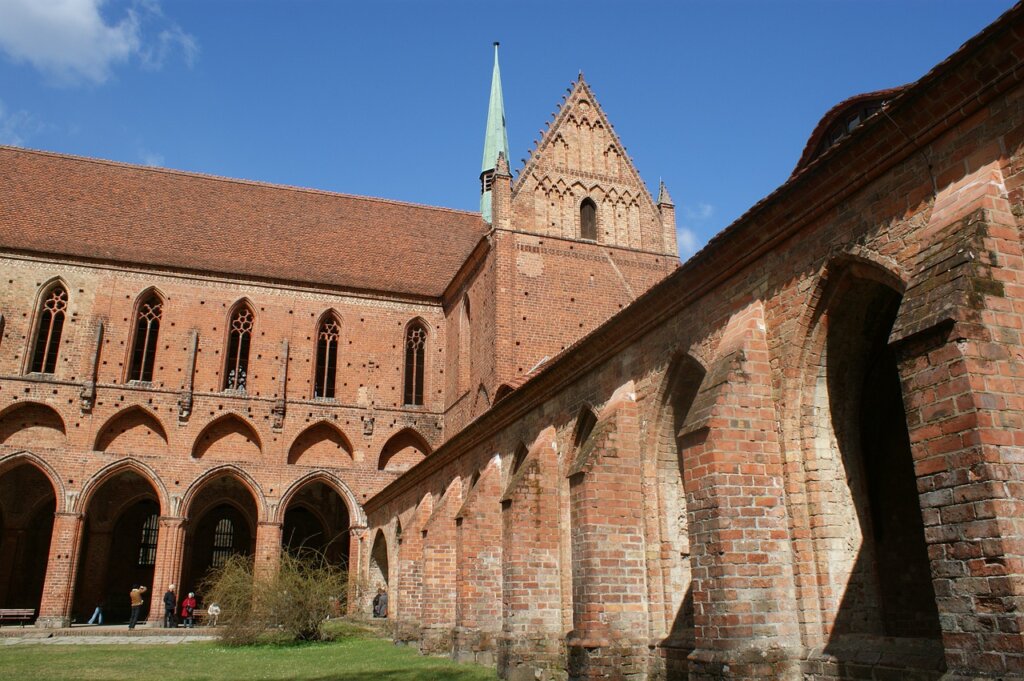
8. Sachsenhausen Memorial
Sachsenhausen-Oranienburg was a Nazi concentration camp between the years 1936 until the defeat of Nazi Germany in May 1945.
Generally used to hold political prisoners (such as Joseph Stalin’s oldest son) today Sachsenhausen is a memorial and museum open to the public so they can learn more about Germany’s dark past. Sachsenhausen was mainly a labour camp, but also contained a gas chamber and a medical experimentation area.
While it can be harrowing to be confronted by the horrors of the past that occurred at Sachsenhausen, visiting places like this is still important to remember the victims of Nazism and ensure it’s never allowed to happen again. The memorial is free to visit, and Christmas Day is the only time the visitor’s center and museums are closed.
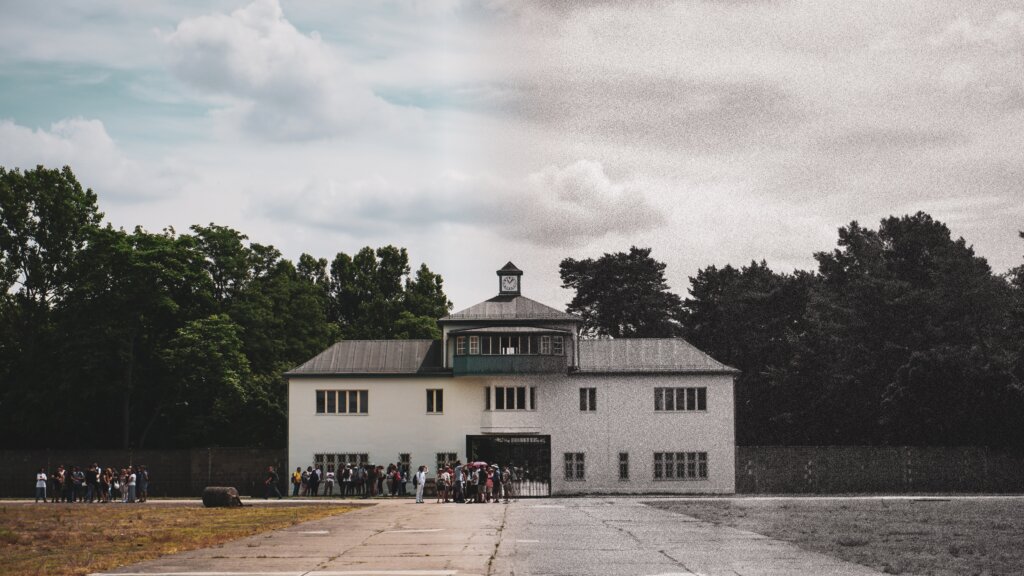
9. Schloss Rheinsberg
Schloss Rheinsberg is another gorgeous German palace, which both predates and served as the inspiration for Sanssouci Palace.
There was originally a moated castle on the site, which was updated to a Renaissance-style water castle in 1566. It changed hands a number of times before being bought by the Prussian King, Frederick William I. He gave the castle to his son, who later became King Frederick the Great (and built Sanssouci) who lived there with his wife until he ascended the throne in 1740.
While Frederick the Great had Sanssouci built as his ultimate pleasure palace, he apparently called his years at Rheinsberg the “happiest of his life”. Today the castle and its impressive gardens are open to the public, although do be aware that most of the staff don’t speak English… so come ready to practice your German!
While Sanssouci might now be more famous, Schloss Rheinsberg remains one of the best Brandenburg tourist attractions for visitors who love castles and is well worth a trip!
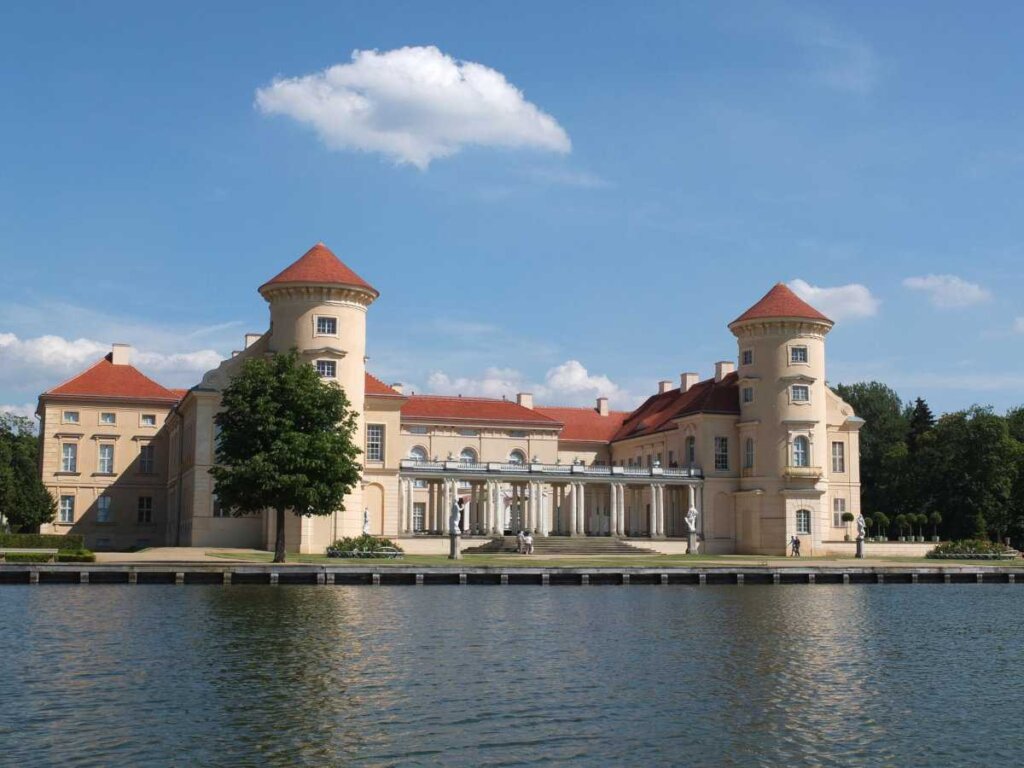
10. Cottbus
Cottbus is the second-largest city in Brandenburg and contains many interesting attractions that make it worth exploring.
Located about 125 km southeast of Berlin, on the banks of the River Spree, Cottbus is a university city most famous for the stunning Branitzer Park and Branitz Castle. Schloss Branitz is a pretty Baroque-style castle, surrounded by the English-style landscape park designed by Prince Hermann von Pückler-Muskau in 1845.
Two earth pyramids are the most iconic parts of the park, one of which is located in the middle of an artificial lake and also serves as the prince’s mausoleum. The Cottbus Zoo also adjoins the park, separated by a road.
The medieval city centre of Cottbus shouldn’t be missed, with charming buildings watched over the by Spremberger Turm (pictured below); a 13th-century tower in Cottbus’s southern medieval gate.
For those keen on a leg workout, visitors can also climb the tower for epic views over the surrounding countryside.
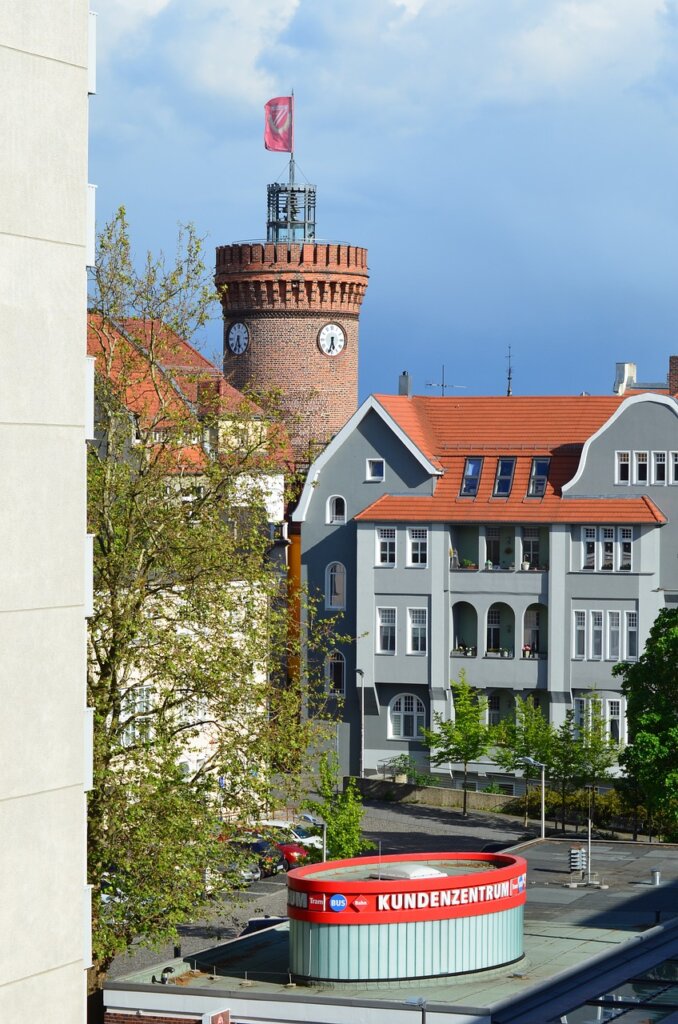
11. Frankfurt an der Oder
Not to be confused with the more well-known Frankfurt am Main in the state of Hesse, Frankfurt an der Oder is a city in Brandenburg located on the west side of the Oder River, which forms the border between Germany and Poland.
Sometimes just called Frankfurt (Oder), this city is most notable for the red-brick Gothic buildings such as the Rathaus (town hall, pictured below) and Marienkirche (St. Mary’s Church) which famously displays stained-glass windows depicting the life of the Antichrist, among other biblical images.
As well as these historic examples of Gothic architecture, Frankfurt (Oder) is also home to a very cool and unique fountain, known as the “ Comic Fountain “. Standing in this fountain is a colourful giant, with two clocks for eyes.
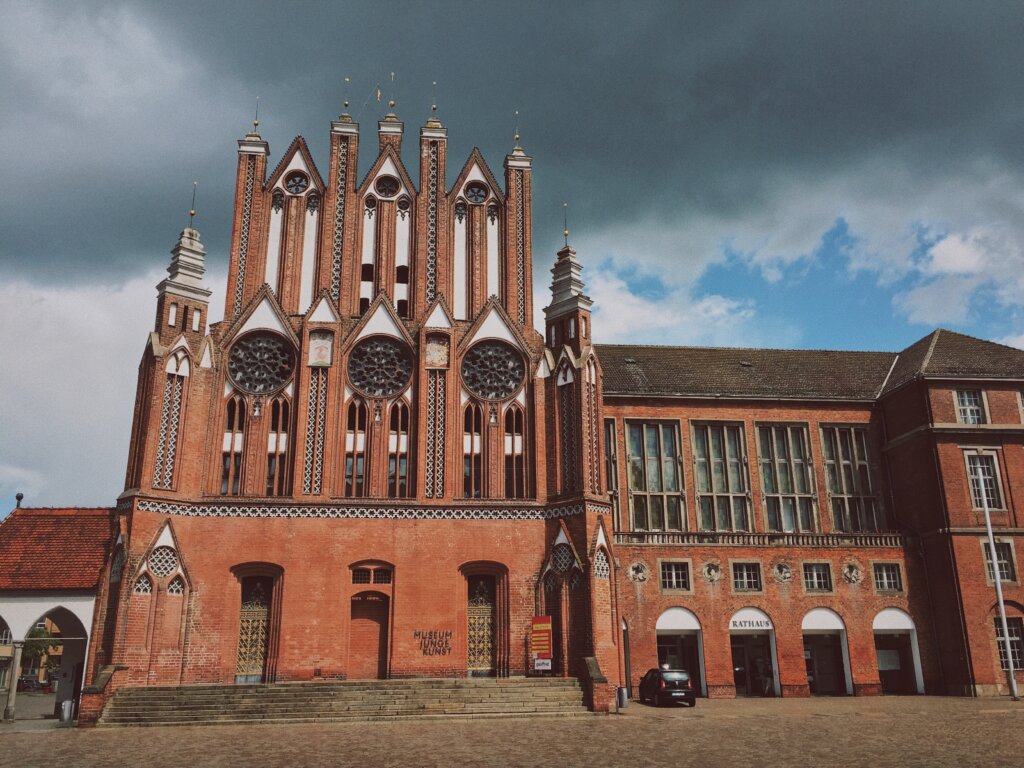
Did we miss any of your favorite places to visit in Brandenburg?
Let us know in the comments so we can add more to our list!
Leave a Comment Cancel reply
Save my name, email, and website in this browser for the next time I comment.
- Route planner
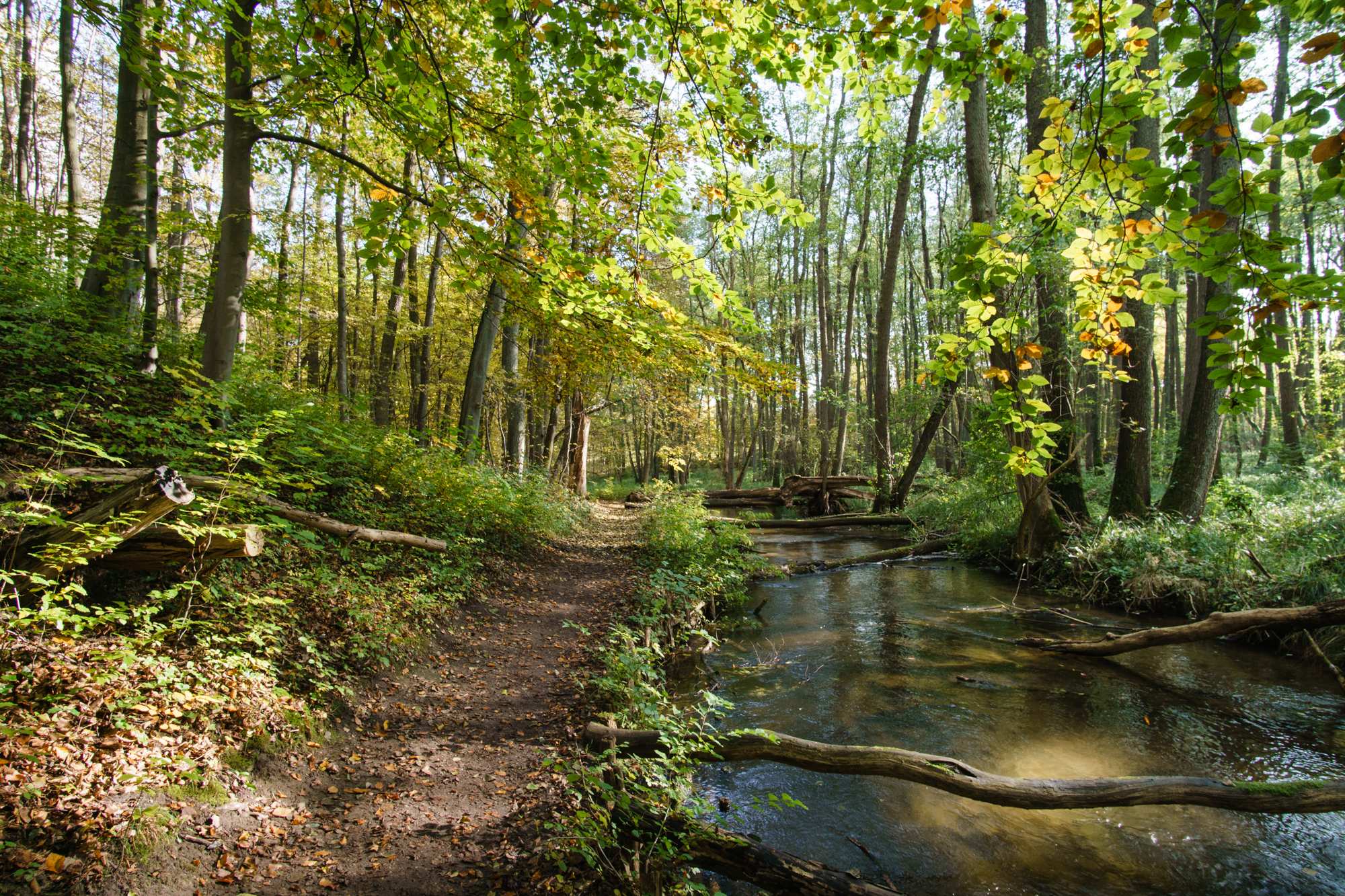
Brandenburg
The Top 20 Attractions in Brandenburg
Plan. Save. Navigate. Your best adventures await.
Start today with a free komoot account.
Glienicker Brücke
Bike Touring Highlight
The Glienicker Bridge was built in 1907 as a connection between Berlin and Potsdam. The building, along with the surrounding palaces and parks, has been part of the UNESCO World … read more
Cucumber cycle path between Lübbenau and Leipe
Bike Touring Highlight ( Segment )
Beautiful and idyllic path between Leipe and Lübbenau. Partially along the canal. Do not drive too fast as you will also meet many hikers here. Then you can enjoy the landscape better.
Sign Up To Discover Places Like This
Get recommendations on the best single tracks, peaks, & plenty of other exciting outdoor places.
Hafen Lübbenau
A round trip on a Spreewald punt is a "must do". The boatmen tell interesting and funny stories, while you can taste the famous Spreewald gherkins. In addition, the landscape along the canals is very secluded.
View of Werder
From the bridge you have a clear view of the Havel. In the background you can see the "flower city" Werder. The tower of the Maria Mariastern church towers far up into the sky.
Wall cycle path on the Teltow Canal
Very nice to drive on and the trees provide pleasant shade on hot days. The entire Berlin Wall Trail is, apart from a few sections, very easy to cycle on … read more
Uferweg am Schwielowsee
A café, a playground, a pier, a green field. What more is needed for a nice sunday?
Eichwerder Steg im Tegeler Fließ
Hiking Highlight ( Segment )
Beautiful footbridge over the Tegeler Fliess. Quite crowded at the weekend, of course, so it's better to come here during the week.
Schloss Sanssouci
Hiking Highlight
No visit to Potsdam is complete without a detour to the most famous sight, Sanssouci Palace. Built in the Rococo style from 1745 to 1747 according to King Frederick II's … read more
Wooden footpath through the moor
Here you can experience the moor up close and dry feet. There are many explanations on boards from NABU.
Fähre Caputh
Here is the current link to the page: faehre-caputh.de .
Popular around Brandenburg
Hiking Collection by komoot
Road Cycling Collection by komoot
Mountain Biking Collection by komoot
Running Collection by komoot
Mountain Climbing Collection by komoot
Explore the most popular Tours in Brandenburg
Discover the most popular attractions in brandenburg.
Are you keen on exploring more awesome places nearby? Browse our guides:
- Märkisch-Oderland
- Dahme-Spreewald
- Barnimer Land
- Ruppiner Lakeland
- Fläming Heath
- Lakeland Oder-Spree
- Lower Lusatia
- Brandenburg an der Havel
- Frankfurt an der Oder
Still not found the Highlight you’re looking for? See guides of the top attractions in other regions:
- Saxony-Anhalt
- Rhineland-Palatinate
- Baden-Württemberg
- Lower Saxony
- North Rhine-Westphalia
- Mecklenburg-Vorpommern
- Schleswig-Holstein
- Mühlenberger Loch/ Neßsand
- Brandenburg Tourism
- Experiences
- Experience culture
Cultural attractions in Brandenburg From museums and palaces to industrial culture
Brandenburg is full of culture. Palaces, castles and museums are waiting to be explored. Another defining feature is the state's industrial culture. Theatres and concerts provide a broad spectrum of cultural entertainment. Whether you attend the concerts of the “Potsdamer Schlössernacht”, the “Choriner Musiksommer” or the “Brandenburgische Sommerkonzerte” – outdoor concerts and theatre performances in natural surroundings are always something special.
Palaces and landscaped parks, museums and industrial monuments, churches, monasteries and castles: exciting pieces of history await visitors on their trip to Brandenburg. A cultural landscape with incredible backdrops to enjoy concerts, operas or theatre performances.
The more recent history can be discovered at fascinating locations of industrial culture. Brandenburg's galleries and art studios feature exhibitions ranging from contemporary art, paintings to sculpture. Those who prefer animated pictures should visit the famous shooting locations of classic Hollywood productions.
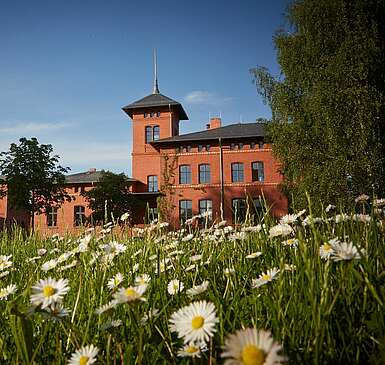
Museums & theme parks Museums & theme parks Museums & theme parks Museums & theme parks
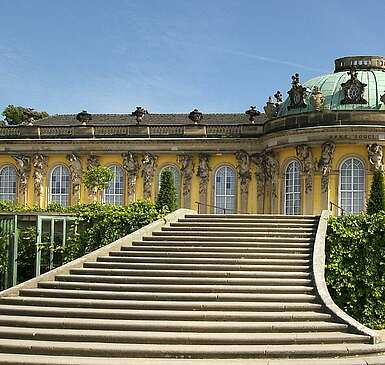
Palaces & Parks Palaces & Parks Palaces & Parks Palaces & Parks
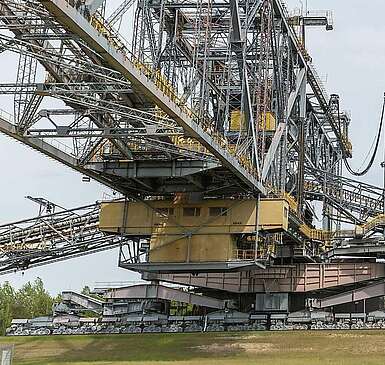
Industrial culture Industrial culture Industrial culture Industrial culture
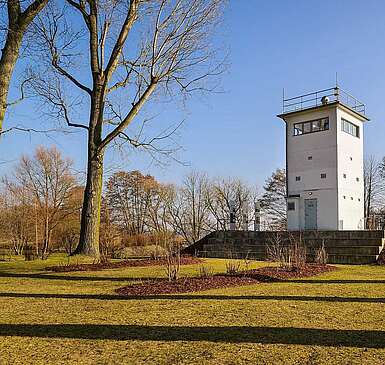
Places of remembrance Places of remembrance Places of remembrance Places of remembrance
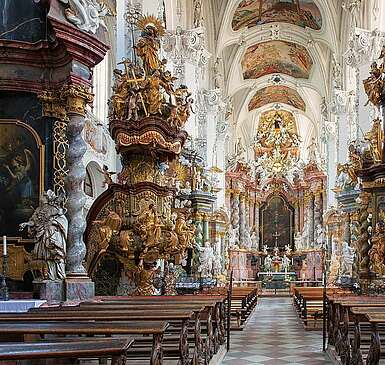
Churches, monasteries & castles Churches, monasteries & castles Churches, monasteries & castles Churches, monasteries & castles
Museums & theme parks museums & theme parks, places of remembrance places of remembrance, churches, monasteries & castles churches, monasteries & castles, thank you for your enquiry.
In case your enquiry did not result in a booking, we will be getting in touch with you as quickly as possible during our service hours from Monday to Friday from 9 a.m. - 6 p.m.
We are also glad to answer all of your questions surrounding the State of Brandenburg at (+49)(0)331- 200 47 47. Please send us an e-mail at [email protected].
Your information and travel agency service Brandenburg
Your request was not successful!
Please try again later. Thank you.
Thank you for visiting www.brandenburg-tourism.com
This website has been developed with the latest technology. Unfortunately, you are using a browser that does not meet the latest technical requirements.
We therefore ask you to use an alternative browser (E.g. Google Chrome , Firefox or Edge ) and we hope you enjoy browsing our website.

- Brandenburg Tourism
- Brandenburg Itineraries
- Brandenburg Hotels
Top Tourist Attractions in Brandenburg
- Brandenburg
- Things To Do In Brandenburg
Best Things To Do in Brandenburg, Germany
Have you ever visited a new place and felt ‘wow’ about it? For many visitors, it happens at Brandenburg.
Brandenburg may not be as popular as other cities in Germany, but don’t let that fool you. Brandenburg is a smaller but beautiful upcoming tourist destination that is worth a visit. You will be surprised by some of the unique things to do and places you can explore at this hidden destination.
You can definitely plan a few hours of a side trip here while traveling to Leipzig or Potsdam. You might wish to revisit it someday again, to take a break and relax at Brandenburg.
If you have plans to visit Germany and are not sure if Brandenburg should be included in your itinerary, keep reading. In this list, we have put together some of the things to do in Brandenburg and around. We have a hunch that if you include this city in your travel plans, you will be thrilled you did so.
- Things to do with Family & Kids in Brandenburg
- Leisure Activities in Brandenburg
Tourist Attractions in Brandenburg
Here is the list of things to do in Brandenburg and tourist attractions in city.
Nostalgie-Museum
Address: Steinstraße 52
Dommuseum Des Domstifts Brandenburg
Address: Burghof 9
B. Kuhlmann
Address: Siedlertrift 2
Industriemuseum
Address: Magdeburger Landstraße 11
Gedenkstätte Für Die Opfer Der Euthanasie-Morde
Address: Nicolaiplatz 30
Naturpark Westhavelland
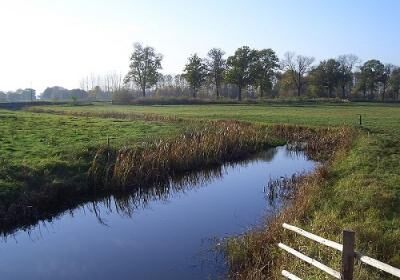
Park, Nature
Address: 14715 Brandenburg, Germany
Brandenburger Einkaufszentrum Wust
Fc stahl brandenburg, st.-katharinen-kirche.
- Things to do in Leipzig
- Things to do in Potsdam
- Things to do in Berlin
- Things to do in Frankfurt
- Things to do in Munich
- Things to do in Hamburg
- What to do in Brandenburg in 1 day
- What to do in Brandenburg in 2 days
Most Popular Tourist Attractions in Brandenburg - Places to be
6 best tourist attractions in brandenburg, tourist attractions in brandenburg.
- Share your personal insider tip and create new entries
- Explore fantastic outdoor destinations when and where you want
- Find your dream destination or discover the world on the interactive map
- Destinations Guide
- Tourism in Europe
- Tourism in Asia
- Tourism in Africa
- Tourism in North America
- Tourism in South America
- Tourism in Australia and Oceania
- Explore article categories
- Travel tips and general articles
- Privacy Policy
- who are we ?
- Advertise with Us
- Terms of Use
- اللغة العربية | Arabic version
Uncover Brandenburg (Germany) ‘s Hidden tourist attractions 10 Must-Visit Places
- Brandenburg

Our guide features 10 can’t-miss tourist attractions in Brandenburg (Germany) for your next adventure. Explore the best of Brandenburg (Germany) with our list of top-rated tourist attractions. For thrill-seekers, we’ve compiled 10 exciting tourist attractions. Journey through Brandenburg (Germany) and discover 10 fascinating tourist attractions with unique stories.

Information about Brandenburg (Germany)
Brandenburg is located in eastern Germany, and it also shares a border with Poland. It is considered one of the prominent tourist destinations in Germany because it has a charming nature, as many rivers pass through the state, including the Spree and Oder, and it also includes a large group of lakes estimated at about 3,500 lakes, in addition to about 6,700 kilometers of waterways and straits, along with many parks. National and botanical parks and nature reserves. The state also includes many archaeological and historical monuments, such as cathedrals, churches, castles, bridges, and others.

A list of the best Tourist attractions in Brandenburg
Looking for the best tourist attractions in Brandenburg (Germany) ? Look no further than our carefully curated list, selected by our team based on visitor ratings and reviews to help make your trip planning a breeze.
1- Dutch Quarter

Dutch Quarter – The Dutch Quarter is located in the city of Potsdam, and it was built between the years 1733-1740 AD. The neighborhood is distinguished by its red brick houses that extend along its length. It is considered one of the most famous tourist destinations in the city, as it includes many stores, shopping centers, and galleries, in addition to A group of various restaurants and cafes.
Place address: Benkertstraße 6-12, 14467 Potsdam, Germany
Click here to go to the coordinates of the place on Google Map
Looking for more : The best Tourist neighborhoods in Brandenburg
2- Straupitz windmill

Straupitz windmill – The Straubitz windmill is considered one of the archaeological and historical monuments in Lübbenau. It was built in 1850 AD, and since then many facilities have been added to it, such as an oil press, a sawmill, and others. It was restored in 1994 and returned to work again at the beginning of the 2000s. It is considered the last triple operating windmill. in Europe; Which gives it historical importance and makes it a focus for tourists.
Place address: Laasower Str. 11a, 15913 Straupitz, Germany
Looking for more : The best Tourist attractions in Brandenburg
3- Friedenswarte tower
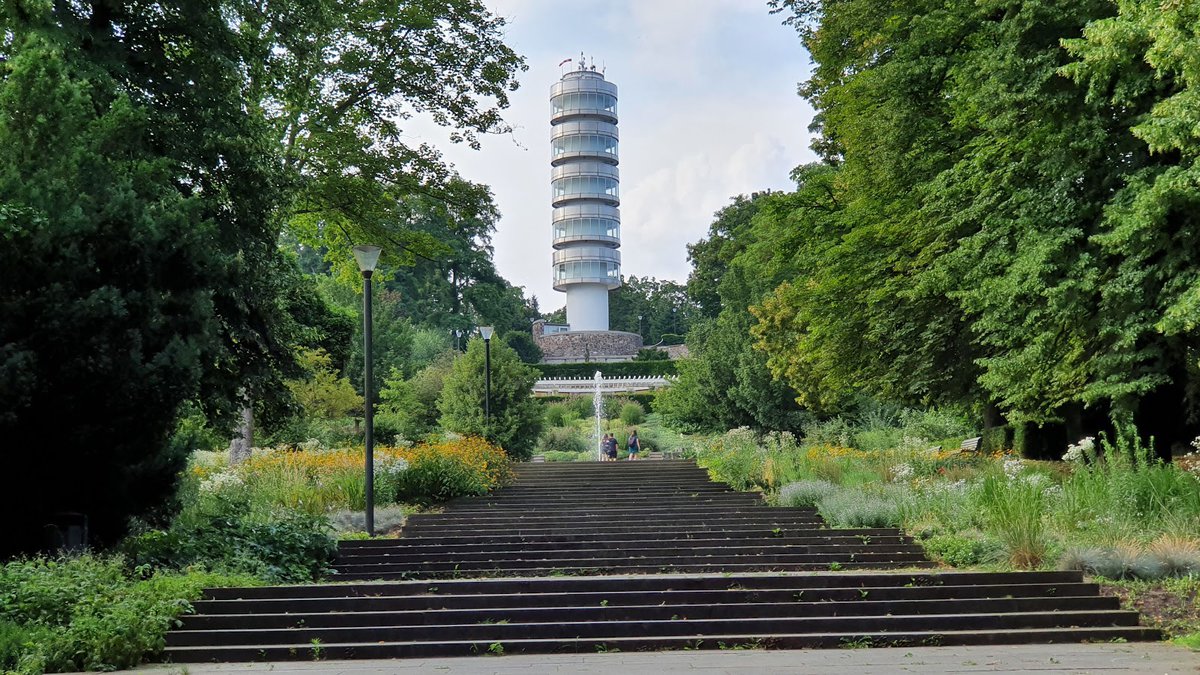
Friedenswarte tower – Vredenswart Tower is a watchtower located in the city center of Brandenburg and has a height of about 32.5 meters, as it can be seen from a distance, and it consists of a circular concrete tower that includes internal stairs for ascent and descent. The descent is counterclockwise and painted red. Since 1997, it has been classified as a national monument.
Place address: Marienberg 3, 14470 Brandenburg an der Havel, Germany
Looking for more : The best Tourist towers and beacons in Brandenburg
4- Marmorpalais

Marmorpalais – This marble palace is located in a romantic and quiet location by the lake in the New Park in Potsdam, and this palace served as the summer home of King (Friedrich Wilhelm II). The interior of the marble palace is influenced by classical antique shapes and designs, and many marble fireplaces and ancient statues were purchased from Italy, and the stunning banquet hall is one of the most prominent early classic rooms in the castle, which has been largely preserved in its original form. And you can go on a tour around this amazing palace where the natural beauty and beautiful tranquility.
Place address: Marmorpalais, Im Neuen Garten 10, 14469 Potsdam, Germany
Looking for more : The best Tourist palaces in Brandenburg
5- Chinese House in Sanssouci Park

Chinese House in Sanssouci Park – The Chinese Tea House was built between 1755 AD and 1764 AD in Sanssouci Park, which is one of the most famous tourist attractions in the city. This beautiful restored historical building includes many beautiful artifacts such as stunning golden statues, distinctive carvings, and exceptional porcelain masterpieces from the eighteenth century. It is an ideal place to visit, especially in the spring and summer seasons, when it is surrounded by beautiful green trees. The interior is characterized by its beautiful design that combines different building styles from the East Asian region, and includes from the inside a central room and small separate rooms that contain tables for drinking tea. Join the organized tours and enjoy an unparalleled beautiful experience.
Place address: Chinese House in Sanssouci Park, Am Grünen Gitter, 14469 Potsdam, Germany
6- Brandenburg Gate

Brandenburg Gate – The Brandenburg Gate is located in Potsdam on the western shelf of Brandenburger Street, and this historic gate was built in the eighteenth century in 1733 AD. The reason for building this gate is due to the desire of Frederick the Great to symbolize the rise of Prussia to the ranks of the major European powers through a wonderful and new victory gate at the entrance to the garrison city, according to this, this amazing gate was built on the model of the Roman triumphal arch, and the gate was organized with classic columns designed in a shape Lively and western. In the 19th century the smaller side aisles were opened, where the guardhouse and the royal customs house had formerly stood, and with the city wall demolished the gate became freestanding.
Place address: Brandenburg Gate, Luisenpl., 14471 Potsdam, Germany
Looking for more : The best Distinguished and famous landmarks in Brandenburg
7- Stone gate tower
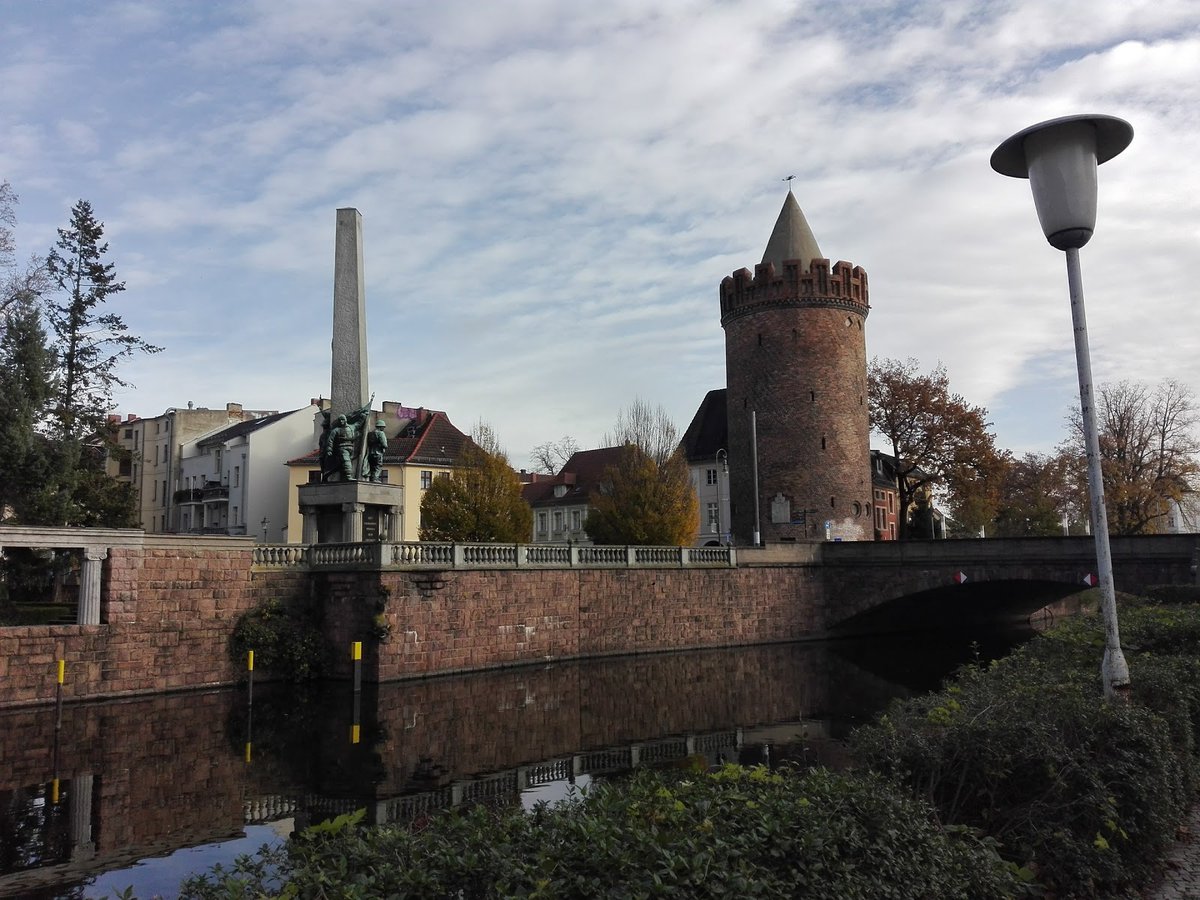
Stone gate tower – The Stone Gate Tower is considered one of the strongest stone towers in the city of Brandenburg, and it is one of the eight towers of the city and part of its defense system that was built in the Middle Ages, as only four towers and a stone gate remain from it today, and the gate was the most important trade route in the city during the ages Central, and the tower still maintains its current shape today as it is considered one of the important historical buildings in the city.
Place address: Steinstraße, 14776 Brandenburg an der Havel, Germany
8- Memorial to the victims of euthanasia murders
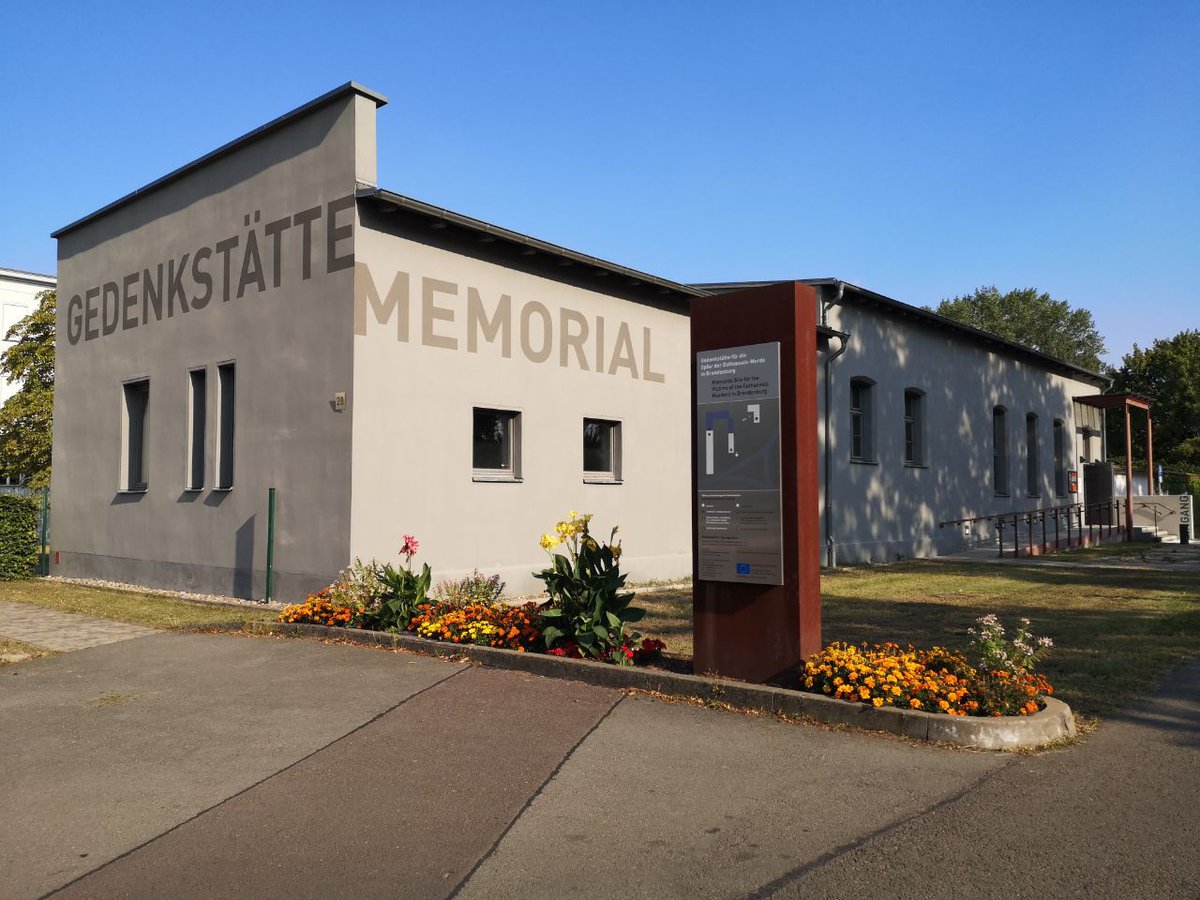
Memorial to the victims of euthanasia murders – The exhibition of euthanasia victims presents a historical picture of the euthanasia policy practiced by the Nazi movement in Brandenburg in the 1940s, where you can learn about the policy of euthanasia and watch the propaganda posters that were used during that period, in addition to displaying testimonies on the exhibition screens about the murders. Collectivism that was committed at the time, and the exhibition was opened in 2012.
Place address: Nicolaipl. 28/30, 14770 Brandenburg an der Havel, Germany
Looking for more : The best Statues and memorials in Brandenburg
9- The Slavic village
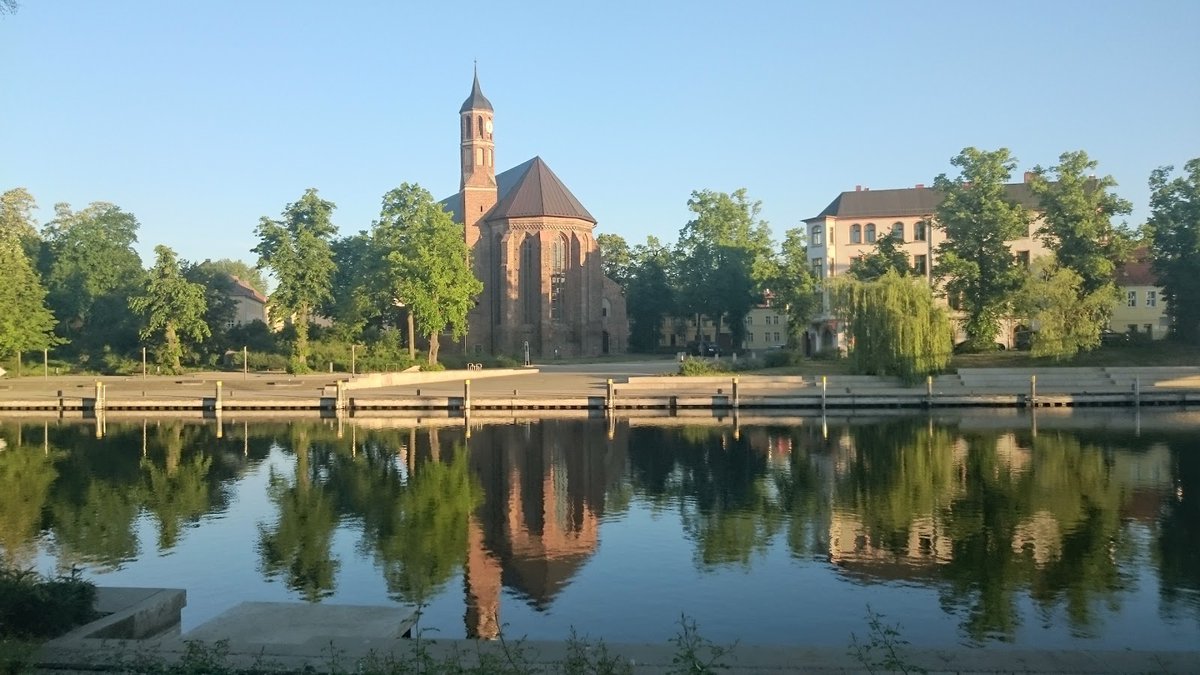
The Slavic village – The Slavic village in Brandenburg is a reconstructed Slavic settlement dating back to the eleventh century, with an area of more than 10,000 square meters where tourists can see many historical excerpts that illustrate the living conditions and activities that were carried out by the villagers, as there is a group of Cottages housed bakeries, abattoirs, weaving sites, pottery and other crafts.
Place address: Neuendorfer Str. 89, 14770 Brandenburg an der Havel, Germany
Looking for more : The best Tourist villages and towns in Brandenburg
10- Bassinplatz
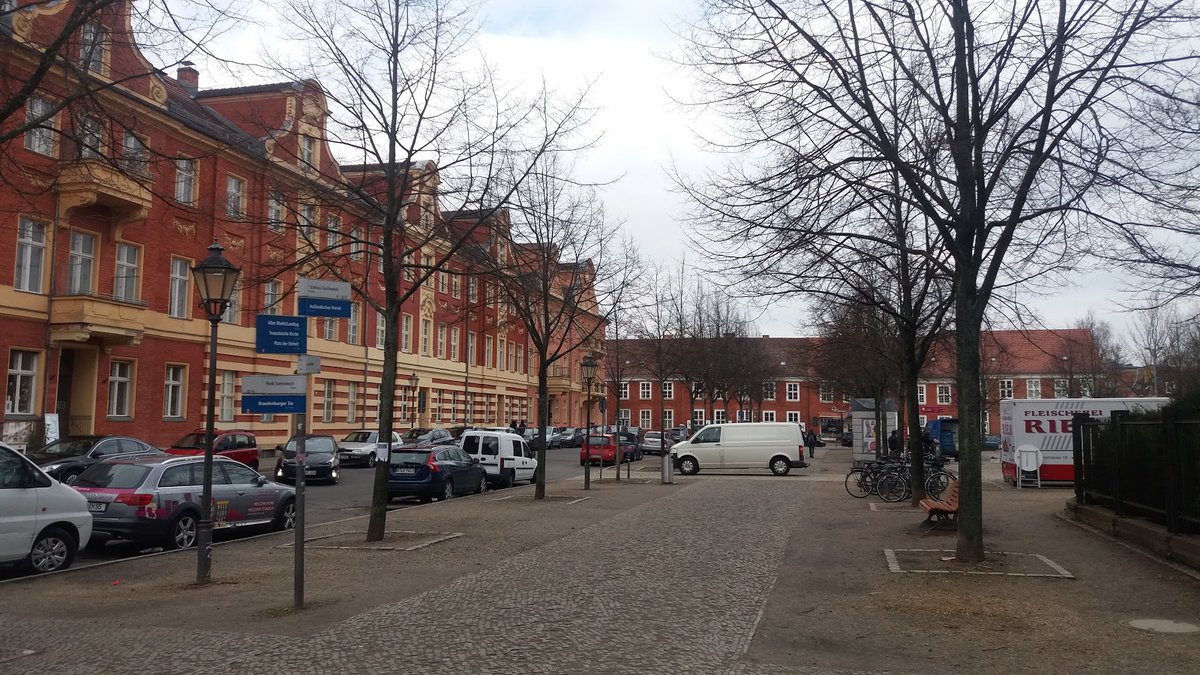
Bassinplatz – Bassen Platz Square is the largest square in the city of Potsdam and is located in the Dutch Quarter. It is considered one of the most famous tourist destinations in the city where you can wander and learn about its most important features. It is also surrounded by many restaurants, cafes and various food stalls. The square also hosts many open markets. The Christmas market is one of the most famous.
Place address: Innenstadt, 14467 Potsdam, Germany
Looking for more : The best Things to do in Brandenburg
As you embark on your journey to explore Brandenburg (Germany) , we hope you discover new perspectives, make unforgettable memories, and form deep connections with the people and places around you. Our guide is just the beginning of your adventure, so be sure to keep an open mind and heart as you explore this wonderful region. Remember to take in the sights, sounds, and flavors that make Brandenburg (Germany) so unique, and don’t be afraid to step off the beaten path and discover the hidden gems that await. Whether you’re traveling solo, with friends or family, or on a romantic getaway, Brandenburg (Germany) promises to be a destination that will leave you enchanted and inspired. Thank you for choosing to explore Brandenburg (Germany) with us, and we look forward to hearing about your travels. Safe travels and happy exploring!
Related posts:
- The Ultimate Brandenburg (Germany) Adventure: 4 Exciting tourist attractions to Explore
- 5 Things to Do in Potsdam (Germany) for All Ages
- Explore Potsdam (Germany) ‘s Finest: 5 Top-Rated shopping places
- Uncover Brandenburg (Germany) ‘s Hidden museums 6 Must-Visit Places
- Lübbenau (Germany) Explored: 11 Must-See gardens and natural places to Add to Your Bucket List
- Tourist attractions in Brandenburg tourism in Brandenburg

Home » Travel Guides » Germany » 15 Best Things to Do in Cottbus (Germany)
15 Best Things to Do in Cottbus (Germany)
Germany’s easternmost city is in the state of Brandenburg. Cottbus is the unofficial capital of Lower Lusatia, home to a minority known as the Sorbs, who have their own Western Slavic language and culture.
Someone who left a lasting impression on Cottbus was the nobleman Prince Pückler, an accomplished 19th-century landscape architect who designed his own whimsical gardens. Brantizer Park is one of a line of parks flowing from the southeast of the city.
The old centre was built from the 12th century at the nexus point of Medieval trade routes, and much later became one of Europe’s big textiles producers. A reconstruction after fires in the 17th century left Cottbus with lots of Baroque architecture, best enjoyed at the cultured Altmarkt square.
Let’s explore the best things to do in Cottbus :
1. Branitzer Park

The finest of the city’s parks was the work of Prince Hermann Ludwig Heinrich von Pückler-Muskau.
This nobleman was one of the foremost landscape architects of the day, and Branitzer Park is regarded as his masterpiece.
Enveloping Schloss Branitz is the “pleasure ground”, which was intended by Prince Pückler as a continuation of the palace and is embroidered with little flowerbeds.
Away from the house, a great deal of work was needed to turn the flat terrain into a rolling landscape, etched with waterways.
The most extraordinary project of all was the Pyramidensee: Here Prince Pückler is buried, along with his wife Lucie, in an earthwork pyramid in the centre of a man-made lake.
2. Schloss Branitz

The palace on the eastern end of the of the gardens was built in the Baroque style in the early 1770s and then restored some 80 years later by the feted architect Gottfried Semper.
The rooms have been faithfully restored to their appearance when Prince Pückler lived here in the 1800s, and the salons, music hall, breakfast room, oriental rooms and library all offer a glimpse of his and Lucie’s lifestyle.
In the palace there’s also an exhibition of paintings by the Cottbus-born Romantic landscape painter Carl Blechen.
3. Spremberger Turm

One of the city’s wayfinders, the Spremberger Turm is the tower of Cottbus’s southern Medieval gate.
The structure dates from the 13th century, and was remodelled in the 15th century and then again in the 1820s when it was given its crenellations.
Now this 31-metre tower is open to the public seven days a week.
There are 131 steps to the observation deck where you can look as far as 50 kilometres into the distance, picking out landmarks like the cooling towers of Schwarze Pumpe power station.
Closer in, you can look over the streets of Cottbus’s old town to find your bearings.
4. Altmarkt

The city’s old marketplace was drawn up in the 1200s, and the location is no accident as it at the intersection of three ancient trading routes.
Home to all kinds of local and independent shops, there’s a captivating ensemble of historic buildings framing the square.
The oldest of these is only from the last decades of the 17th century as before then Cottbus was almost totally wiped out by fires in 1600 and then 1671. The plots meanwhile are much older, so while the upper floors maybe no more than 300 years old, the basements go back to Medieval times.
Seek out the two cute gabled houses at no. 14, dating to 1693 and the grand Baroque merchant houses at 22, 25 and 27.
5. Kunstmuseum Dieselkraftwerk

East of the old town in the Goethepark is a contemporary art museum in a Bauhaus-style power station from 1927. The plant was decommissioned in 1958 and would lay idle until the 2000s when it was chosen as the new home of the city’s contemporary art collection.
The museum was founded at a different location in 1977 and at first only exhibited works of artists who had remained in East Germany or had moved to the GDR. After 1990 the collection was enhanced and now has 30,000 pieces of painting, poster art and sculpture, from Dresden Expressionism to the 21st century.
But the main reason to pay a visit is for the temporary shows, which in the last decade have featured famous names like Otto Dix, Picasso, Emil Nolde, Edvard Munch and Emil Schumacher.
6. Spreeauenpark

Near the zoo and Branitzer Park in the southeast of the city is a dreamy 55-hectare park redesigned for the Bundesgartschau (Federal Garden Show) in 1995. The park is sprinkled with exotic trees and framed by venerable oak avenues.
There are large, flowing meadows, and a medicinal herb garden, farmer’s garden, rose garden, sound garden and rhododendron grove, all around a 1.2-hectare pond.
When it’s warm there will be families out enjoying the sunshine on the terrace next to the water.
7. Brandenburgisches Apothekenmuseum

At Altmarkt 24 there’s a museum in the historic pharmacy, founded back in 1568. At the only pharmacy museum in the state of Brandenburg you’ll take a whistle-stop tour of healthcare over the last 400 years.
There are intact pharmacy ensembles from the 1830s and the start of the 20th century, as well as equipment used during the GDR. Also fascinating are the individual chambers for herbs and poisons, as well as a laboratory for “Galenic” medicine.
Out back in the courtyard is a preserved well from the 1600s.
8. Cottbuser parkreisenbahn

For more than 60 years, the string of parks in the southeast of Cottbus has been linked to a narrow gauge railway.
This is a Pioniereisenbahn, first set up to be operated by youth organisations to help train the next generation of train drivers and other railway employees.
The train sets off from the Sandower Dreieck station by the Stadion der Freundschaft and makes a 3.2-kilometre trip to the Branitzer Park via the zoo and the Spreeauenpark.
Since the Federal Garden Show in 1995 the trains have been pulled by bright green electric-powered locomotives.
9. Staatstheater Cottbus

Even if you’re not in the mood for an opera or ballet performance, the Staatstheater is a sight worth sizing up from the outside.
The theatre is a monument to the wealth and aspiration of Cottbus at the turn of the 20th century, when a roaring textiles trade gave rise to a bourgeoisie that was hungry for culture.
Opened in 1908, the theatre has the organic curves of the Art Nouveau style and is held as the greatest achievement of its architect, Bernhard Sehring.
And if you would like a bit of high-class entertainment there’s a programme of opera, ballet, musical theatre, soloists and philharmonic concerts throughout the year.
There are also two-hour guided architectural tours every Sunday.
10. Oberkirche St. Nikolai

The largest church in Lower Lusatia, the Oberkirche is a three-aisled Late Gothic church constructed with bricks in the 15th century.
The nave and choir walls are perforated by tall lancet windows with dainty tracery, and although the church was burned out in 1945 there’s a lot of art and interesting things to be found inside.
Most memorable of all is the 11-metre early Baroque altarpiece from 1664, etched with figurative reliefs and an image of the nativity on its pedestal.
In the choir you can browse a few 16th and 17th-century ledger stones, while the richly gilded organ case in the gallery is from 1759.
11. Flugplatzmuseum Cottbus

The airfield on the city’s western outskirts was used by the military from the 1930s right up to Reunification.
And as the base was used by the GDR’s Air Forces of the National People’s Army for 40 years you’ll encounter a lot of Soviet technology at this museum.
In the 40-strong aircraft collection there’s a Yakovlev Yak-11, a Mil Mi-24 helicopter and a newly acquired Tupolev Tu-134 airliner, which had the distinction of being able to land and take off on grass runways.
Many of the exhibits are open so you can sit inside the cockpit.
There are also ground vehicles and all kinds of equipment, together with weapons like the S-75 Dvina surface-to-air missile.
12. Klosterkirche

The oldest surviving church in Cottbus was given its current Late Gothic design in the 15th century, but was founded around the year 1300. In the Middle Ages it was attached to a Franciscan monastery, but this was disbanded during the Reformation in the 1500s.
Unaffected by the war, the church has a lot of historic fittings for antiquarians to browse.
Inside and out there are a number of ledger stones from the 14th to the 17th centuries.
The most beautiful of these is for the 14th-century couple, Fredehelm of Cottbus and Adelheid of Colditz, and has a sandstone high relief Fredehelm in armour embracing his wife, whose hands are raised in prayer.
Some other pieces to take in are the baptismal font (1500), a crucifix from 1720 and a pulpit from the first half of the 17th century.
13. Stadtmuseum Cottbus

Cottbus’s city archives and municipal museum are in the same building, a former printworks at Bahnhofstraße 52. Since 2015 there has also been an additional building in an old bank directly opposite.
The museum recounts the city’s history from both social and natural angles.
There’s a lot of detail about the city’s Medieval Sorbian culture (Western Slavic), Cottbus’s status as a trading hub, as well as its cloth and carpet-weaving industries that exploded in the 1800s.
In the galleries are black and white photographs, clothing made in Cottbus, models of steam turbines and pieces of Sorbian folk art.
The natural history rooms have fossils, minerals and taxidermies of regional birds.
14. Tierpark Cottbus

Tucked between the Spree and Branitzer Park, Cottbus’s zoo has 1,200 animals in quiet parkland.
Children will be particularly pleased to find a host of exotic animals like elephants, zebras, a variety of monkeys, tapirs and ostriches.
Big cats have always been the main attraction at the zoo, and in 2014 the new predator enclosure was completed for leopards and Malayan tigers.
Always popular are the feeding times, during which you can observe lemurs, elephants, penguins, dwarf otters, leopards and tigers at close quarters.
15. Burg (Spreewald)

Minutes from Cottbus is the spa town of Burg, lying in the UNESCO Spreewald Biosphere Reserve.
Burg dates back to the 13th century and was built on a salt spring, which bubbles to the surface from a depth of more than 1,300 metres.
These mineral-rich waters continue to attract visitors who come for treatments at the thermal baths.
But there’s more to Burg besides its spring, as the landscape in the northwest of the town is exceptionally picturesque.
On a canoe or typical wooden boat you can discover Burg-Kauper, a low-lying rural settlement scattered on the many narrow arms of the River Spree.
In old times this maze of waterways edged by willow trees and meadows was the only means of transport.
15 Best Things to Do in Cottbus (Germany):
- Branitzer Park
- Schloss Branitz
- Spremberger Turm
- Kunstmuseum Dieselkraftwerk
- Spreeauenpark
- Brandenburgisches Apothekenmuseum
- Cottbuser parkreisenbahn
- Staatstheater Cottbus
- Oberkirche St. Nikolai
- Flugplatzmuseum Cottbus
- Klosterkirche
- Stadtmuseum Cottbus
- Tierpark Cottbus
- Burg (Spreewald)

24 Top-Rated Tourist Attractions in Berlin
Written by Bryan Dearsley and Lura Seavey Updated Dec 22, 2023 We may earn a commission from affiliate links ( )
Berlin, the capital of Germany and the country's largest city, is also a major center of politics, culture, media, and science.
Noted for its cultural attractions, Berlin is home to the world-famous Berlin Opera and Berlin Philharmonic Orchestra, while its diverse art scene encompasses numerous events, galleries, and museums , including those on Museum Island , a UNESCO World Heritage Site.
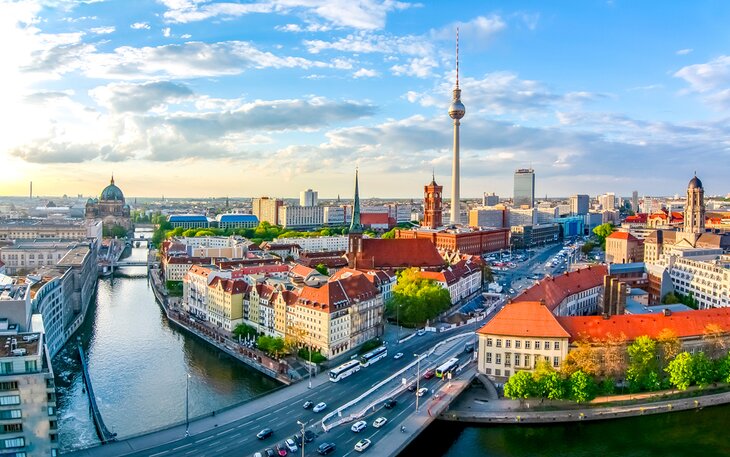
Despite the devastation of WWII, and following decades of decay to the east of the infamous Berlin Wall, the city has been rebuilt in a way that celebrates its successes while acknowledging a dark past.
Today, Berlin has earned a reputation as something of a youthful, hip tourist destination that offers an eclectic mix of places to visit, including new and classic architectural landmarks, dynamic entertainment, shopping, and a wide variety of sports and cultural institutions.
Whatever your interests, to help you get the most out of your sightseeing adventures, be sure to refer often to our list of the top tourist attractions in Berlin, Germany.
1. The Brandenburg Gate
2. the rebuilt reichstag, 3. museum island, 4. the berlin wall memorial, 5. german historical museum, 6. berliner fernsehturm: berlin's television tower, 7. mauer museum (checkpoint charlie museum), 8. charlottenburg palace and park, 9. gendarmenmarkt, 10. jewish museum berlin, 11. the german museum of technology, 12. memorial to the murdered jews of europe, 13. grosser tiergarten and the victory column, 14. pergamon museum, 15. the humboldt forum, 16. berlin cathedral church, 17. the topography of terror, 18. berlin zoological gardens, 19. tierpark berlin, 20. berlin-dahlem botanical garden and botanical museum, 21. ddr museum, 22. the nikolai quarter, 23. kaiser wilhelm memorial church, 24. französischer dom and the huguenot museum, where to stay in berlin for sightseeing, tips and tours: how to make the most of your visit to berlin, berlin, germany - climate chart.
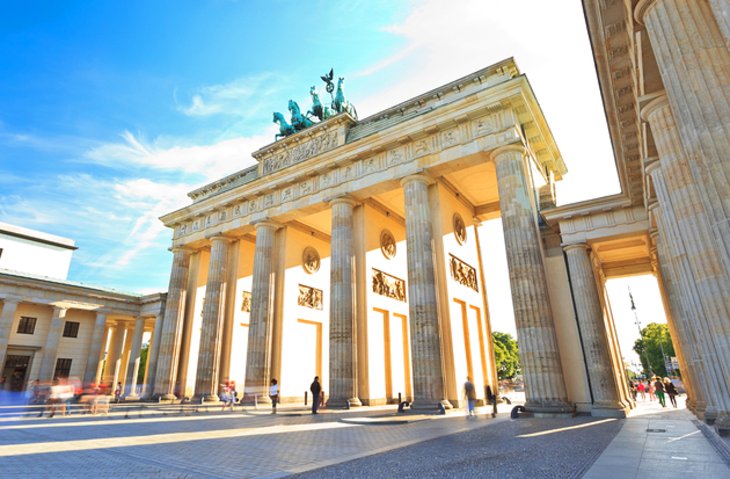
Berlin's most famous historic landmark is undoubtedly the Brandenburg Gate (Brandenburger Tor). Once a symbol of a divided nation, it now stands as a symbol of unity and peace.
This impressively large Neoclassical gate was commissioned by King Frederick Wilhelm II in 1788, and its design was inspired by the Propylaea in Athens' Acropolis. The sandstone monument is 26 meters tall, standing in the Mitte district's Pariser Platz , just a block from the Reichstag building.
During the Cold War, its physical and symbolic position as a blocked gate along the Berlin Wall made it a frequent site for demonstrations by West Berliners. It's also famous for being the backdrop of US President Ronald Reagan's 1987 entreaty to Soviet leader Mikhail Gorbachev to tear down the wall.
It was also the scene of a poignant gesture in 1999, when political leaders from a variety of countries—including Germany's Angela Merkel, Russia's Mikhail Gorbachev, and Poland's Lech Walesa—together walked through the gate to commemorate the tearing down of the Berlin Wall 10 years earlier.
Visiting the Brandenburg Gate at night is a special treat, and undoubtedly one of the top free things to do in Berlin .
Address: Pariser Platz, 10117, Berlin
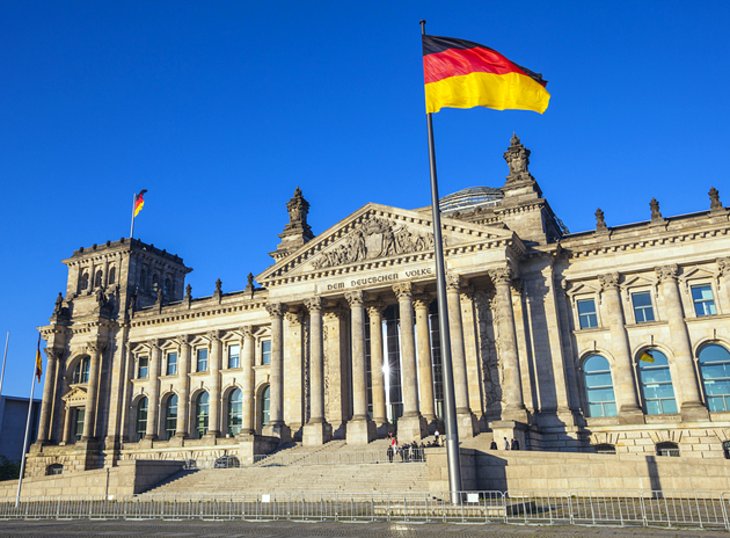
The Reichstag (Reichstagsgebäude) was originally completed in 1894 where the Neo-Renaissance palace served as the home of the German Empire's Imperial Diet until it burned in 1933. It was not used again until after the reunification of Germany, at which point it underwent a 10-year reconstruction and finally became the home of the German Parliament in 1999.
A highlight of this magnificent reconstruction is the replacement dome, the Kuppel. Made of glass, it offers superb views of the surrounding city, especially at night from the Rooftop Restaurant. If you're visiting in the summer months, be sure to check into the schedule of light shows and film nights for a memorable Berlin experience.
Note that entry to the Dome and Terrace is ticketed, and due to demand, it's recommended that tickets be requested in advance . While registration is available on the day, you should expect a two- or three-hour wait. Free English language audio guides are available.
Address: Platz der Republik 1, 11011, Berlin
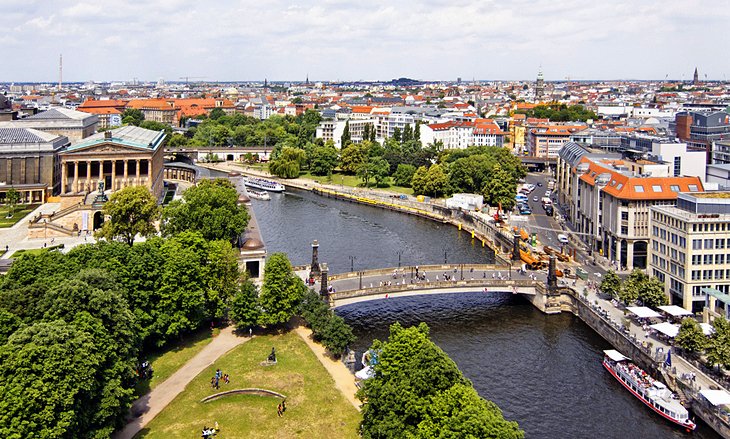
Sandwiched between the River Spree and the Kupfergraben in a 400-meter-long canal, Spree Island—better known as Museum Island (Museumsinsel)—is one of the city's most important UNESCO World Heritage Sites .
Here, you'll find many of Berlin's oldest and most important museums , including the Old Museum (Altes Museum), built in 1830 to house the Crown Jewels and other royal treasures.
The New Museum (Neues Museum), destroyed during WWII, was rebuilt and opened again in 2009. It serves as the home of extensive collections from the Egyptian Museum, the Papyrus Collection, and the Collection of Classical Antiquities.
The Old National Gallery (Alte Nationalgalerie), opened in 1876, displays Neoclassical sculpture and paintings from 1815-1848, as well as Impressionist and early Modernist pieces. The Bode Museum houses a collection of Byzantine art, as well as a large sculpture collection spanning from medieval times to the late 1700s.
The city's most popular museum, the Pergamon features a Museum of Islamic Art, the Ishtar Gate, and reconstructed historic buildings from the Middle East. The newest museum attraction, the Humboldt Forum opened here in 2019 and houses the Ethnological Museum of Berlin and the Museum of Asian Art.
Address: Bodestraße 1-3, 10178 Berlin

The Berlin Wall originated in 1961 when East Germany sealed off that half of the city to prevent citizens from fleeing to West Germany. By the time it was torn down in 1989, the four-meter-high wall extended 155 kilometers, dissected 55 streets, and possessed 293 observation towers and 57 bunkers.
Today, only small stretches of this graffiti-covered travesty remain, including a 1.4-kilometer stretch preserved as part of the Berlin Wall Memorial (Gedenkstätte Berliner Mauer). It stands as a chilling reminder of the animosity that once divided Europe.
Highlights of a visit include the Marienfelde Refugee Center Museum, with its exhibits relating to the one-and-a-half million people who passed through Berlin as refugees; the Günter Litfin Memorial, a former watchtower now set up as a memorial, which pays tribute to the first civilian killed trying to cross from east to west; and the Monument in Memory of the Divided City and the Victims of Communist Tyranny.
Be sure to also check out the Window of Remembrance and the Visitor Center with views over the remains of the wall. Guided tours are available in English.
Address: Bernauer Straße 111, 13355 Berlin
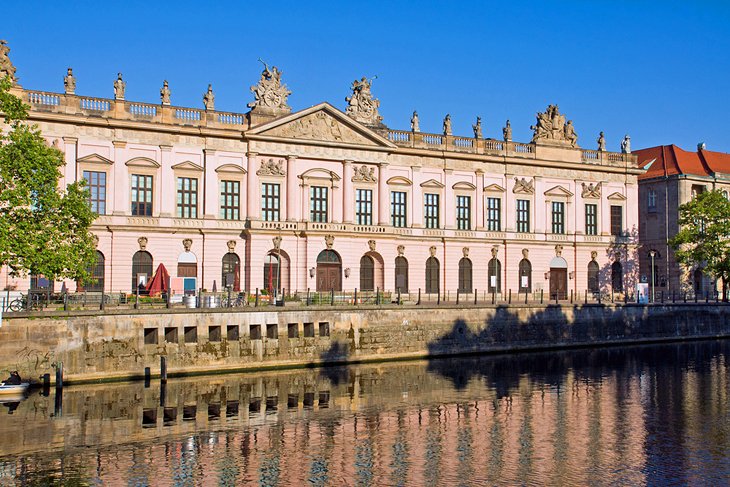
Established to mark Berlin's 750th anniversary in 1987, the German Historical Museum (Deutsches Historisches Museum, or DHM) is a must-visit for those interested in learning more about the city's remarkably rich history.
This much-visited attraction consists of a number of historic exhibition halls jam-packed with fascinating displays of artifacts relating to various periods and events from the country's founding right up to the fall of the Berlin Wall.
Other highlights include exhibits relating to medicine, fashion, religion, printing, art, and photography. Military buffs are also well catered to with the museum's vast collection of historic armor, weapons, and uniforms.
There's also a cinema located on-site, and a research library that's open to the public. English language guided tours are available, and for those expecting a longer stay (you'll want to, there's that much to see), there's a handy cloakroom and café.
Address: Unter den Linden 2, 10117 Berlin
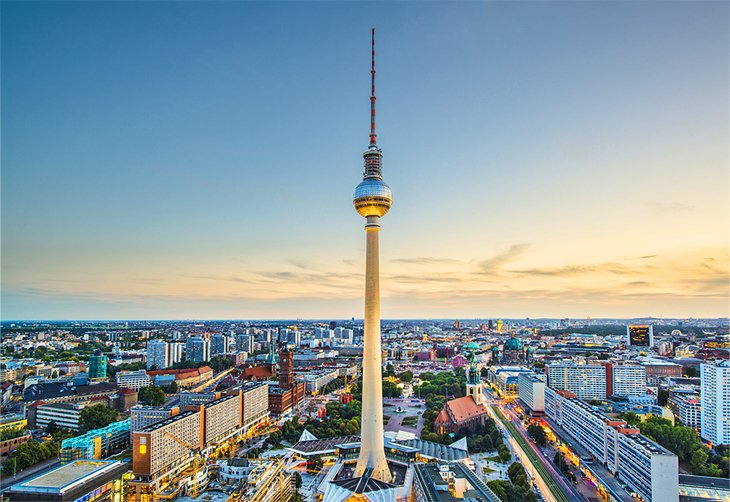
Despite its age—it celebrated its 50th anniversary in 2020—the 368-meter-tall Berliner Fernsehturm (Berlin Television Tower) has lost none of its appeal to visitors to the city.
Since opening in 1970, Europe's third-tallest freestanding structure has attracted over 60 million visitors, most of them drawn for the spectacular views over Germany's capital.
Originally constructed to mark the prowess of communism (it's located in the former East Berlin district), the landmark can be picked out from pretty much every corner of the city, making it more significant as a symbol of the city's reunification in the 1980s.
Be sure to include the structure's observation deck in your visit, and if you're able to linger awhile, book a reservation at the 207-meter-high revolving restaurant.
Address: Panoramastraße 1 A, 10178 Berlin
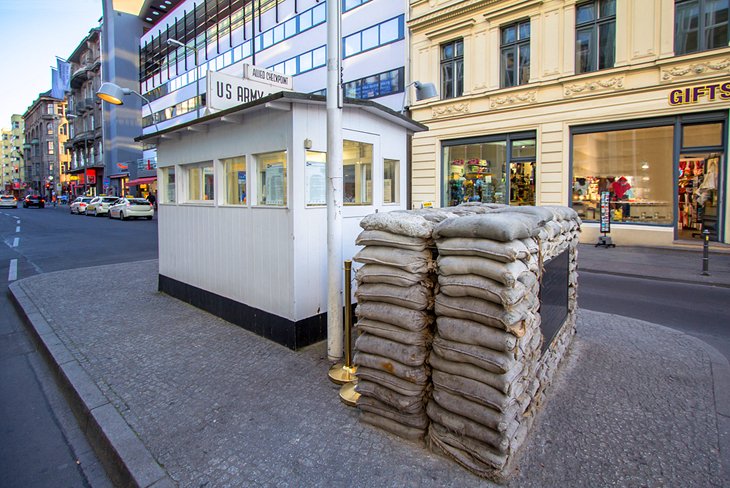
Also of interest is the Checkpoint Charlie Museum (Museum Haus am Checkpoint Charlie). Marking the best-known crossing point between East and West Berlin, this fascinating tourist attraction features numerous displays and artifacts tracing the history of human rights, along with exhibits dealing specifically with the history of the Berlin Wall, and Checkpoint Charlie.
Situated next to the original guardhouse, the museum also highlights some of the most interesting attempts made by those trying to escape communist rule. These include an original homemade air balloon used in one successful attempt.
Also of interest is the nearby open-air BlackBox Cold War exhibit , which features sections of the Berlin Wall and related information stations.
Address: Friedrichstraße 43-45, 10969 Berlin
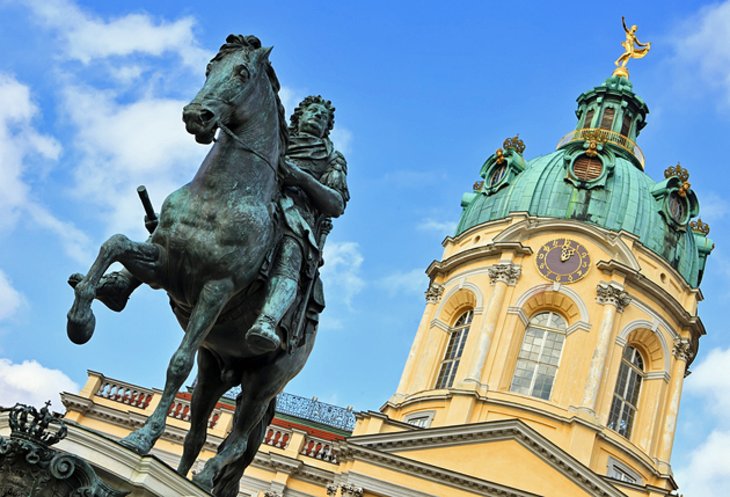
Berlin's oldest and largest Prussian estate, the late 17th-century Charlottenburg Palace was for decades the primary residence of German royalty.
Now beautifully restored, this huge palace has many extraordinary features, including a massive 50-meter-high central dome, opulent Baroque and Rococo décor throughout its expansive rooms, and a large garden that was inspired by the gardens at Versailles.
A highlight of the property's tour program is a visit to the New Wing , with its State Apartments and fine Banqueting Halls. Built in 1746, it's here visitors get a glimpse of the splendor in which the Prussian Kings and Electors lived, from Frederick I's bedroom and study with their fine furnishings and paintings, to the State Dining Room and 42-meter-long Golden Gallery with its rich, gilded stucco.
Over in the Old Palace is the Porcelain Cabinet, a room dedicated to a large historic porcelain collection and special exhibits, including the Crown Jewels and other royal items.
Other highlights are the Palace Park dating from 1697 and home to the New Pavilion (Neue Pavilion), built in 1788 in the style of a Neapolitan villa, and the Belvedere Teahouse with its fine collection of Berlin porcelain.
Be sure to visit the Mausoleum with its royal tombs, as well as the Grand Courtyard with its large statue of the Great Elector, Frederick William of Brandenburg. One of the top things to do in Berlin in winter is visit the Charlottenburg Palace Christmas Market , a spectacular display of more than 250 vendors and artisans exhibiting seasonal wares.
Address: Spandauer Damm 10, 14059 Berlin
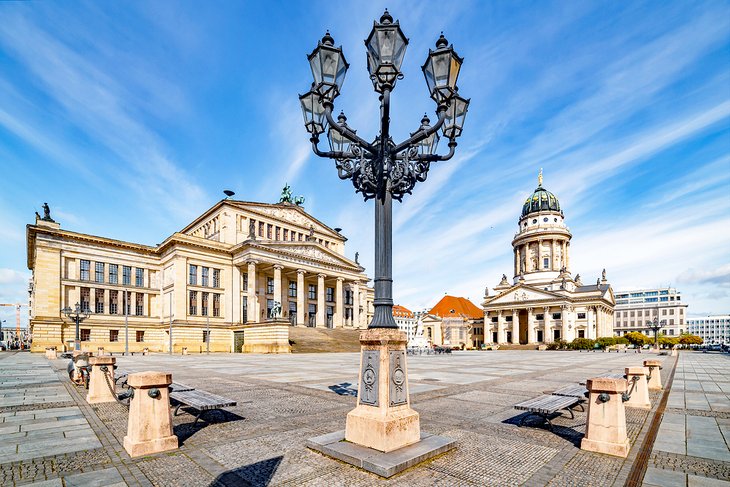
The Gendarmenmarkt, one of Berlin's largest squares, is dominated by three historic landmark buildings: the Konzerthaus, the French Cathedral (Französischer Dom), and the German Cathedral (Deutscher Dom).
This picturesque 17th-century square is now one of Berlin's top tourist attractions and hosts numerous public events each year, including classical concerts on the steps of the Konzerthaus theater in the summer.
Come winter, the entire plaza becomes one of the most famous Christmas markets in Germany .
Konzerthaus : The Konzerthaus , built in 1821, is as famous for its architectural splendor as it is for the first-rate performances of Konzerthausorchester Berlin, one of the country's most popular symphony orchestras.
In front of the building stands a statue of the German poet Friedrich Schiller surrounded by four female figures who represent the artistic elements of Lyric Poetry, Drama, History, and Philosophy.
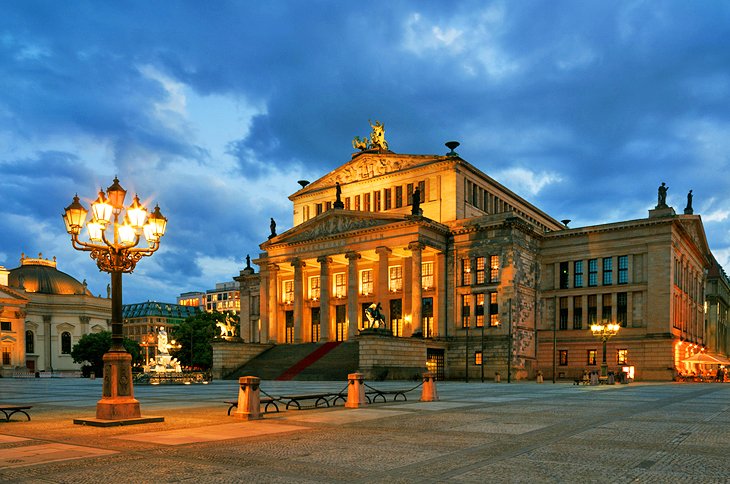
Cathedrals: The cathedrals are so named for their domes ("dom" is also the German word for cathedral) and are in fact not churches. The French Cathedral is home to the Huguenot Museum , and the German Cathedral exhibits the history of the German Parliament.
Alexanderplatz : Another well-known square in Berlin, Alexanderplatz was the center of East Berlin life and is now home to the World Time Clock, a popular meeting place. Nearby is the Television Tower (nicknamed Telespargel) with panoramic views of the city.
Address: Gendarmenmarkt, 10117 Berlin
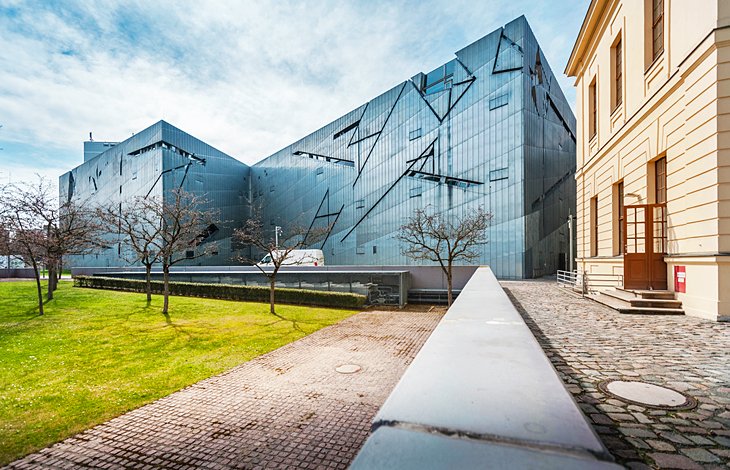
Designed by architect Daniel Libeskind, the Jewish Museum Berlin (Jüdisches Museum Berlin) features a distinctive zinc-paneled exterior that makes it one of Berlin's most striking landmarks.
It was established in 2001, and inside visitors will find a wide range of historical artifacts and donated collections that illustrate the long history and struggle of Jewish Germans, from the Middle Ages to the present.
Exhibits include artwork, religious objects, and 24,000 photographs that have been preserved and recovered. Especially poignant is The Memory Void, where you'll find an installation called "Shalekhet," or "Fallen Leaves," a collection of some 10,000 iron faces spread across the ground. Sobering, to say the least.
The museum is also home to an extensive library and archives at the Academy of the Jewish Museum Berlin , where there are frequent educational programs. Museum galleries include sections dedicated to Hanukkah, anti-semitism, Middle East conflict, the history and culture of Jerusalem, and the life of Munich rabbi Leo Baerwald.
A variety of themed tour options are available, along with English language audioguides.
Address: Lindenstraße 9-14, 10969 Berlin
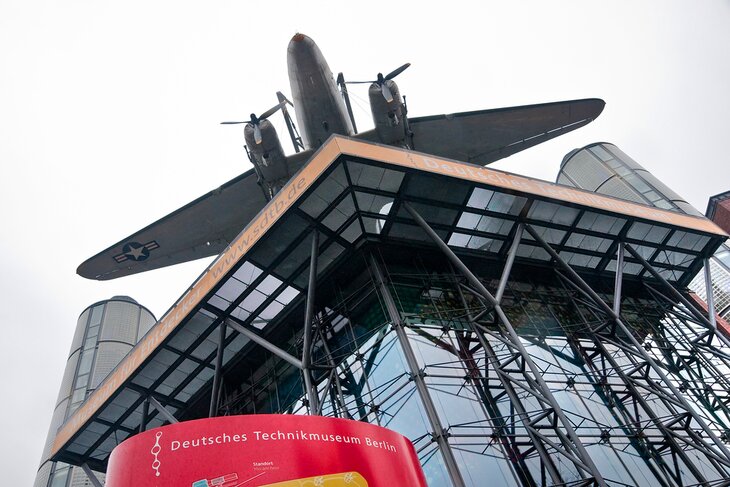
The must-see German Museum of Technology (Deutsches Technikmuseum Berlin) was established in 1983 to showcase and celebrate Germany's industrial and technological prowess.
There are plenty of fun things to do for kids and families in this popular museum, including taking in displays related to the Industrial Revolution, getting some hands-on experience in a reconstructed workshop. In addition, the museum offers a fascinating look at the vehicles that evolved alongside this rise in mechanization.
There are plenty of vehicles and aircraft on display, including a number of preserved steam engines dating back as far as 1843. Other highlights include riding in a vintage 1930s train from the museum to its locomotive depot on the weekends.
Guided tours are available in English. For those wanting to make a day of it (which is recommended), there's a restaurant and picnic spot located on-site.
Address: Trebbiner Straße 9, D-10963 Berlin-Kreuzberg
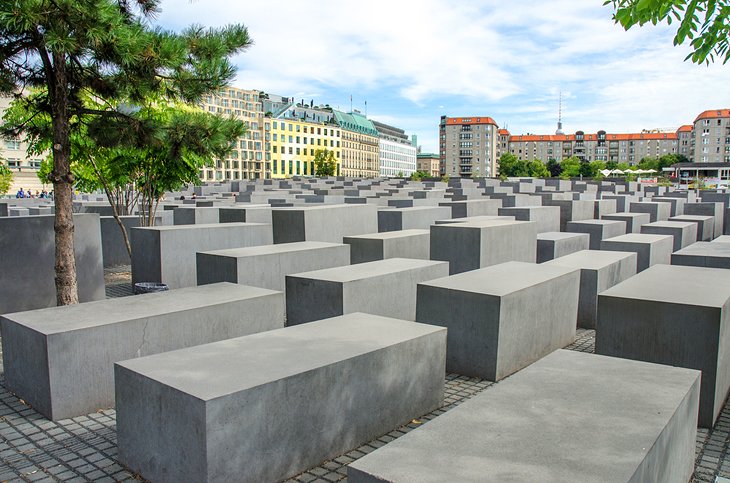
A remarkable testament to the people of Germany and their commitment to never turn a blind eye to the atrocities of the past, the Memorial to the Murdered Jews of Europe (Denkmal für die ermordeten Juden Europas)—also known as the Holocaust Memorial —is another Berlin landmark that attracts tourists from all over the world.
Sitting on the eastern side of Tiergarten, this collection of 2,711 concrete slabs covers 19,000 square meters of uneven ground. Below the sprawling memorial is an information center that houses the letters, diaries, and photographs of Holocaust victims. An audioguide is available in English.
Address: Cora-Berliner-Straße 1, 10117 Berlin
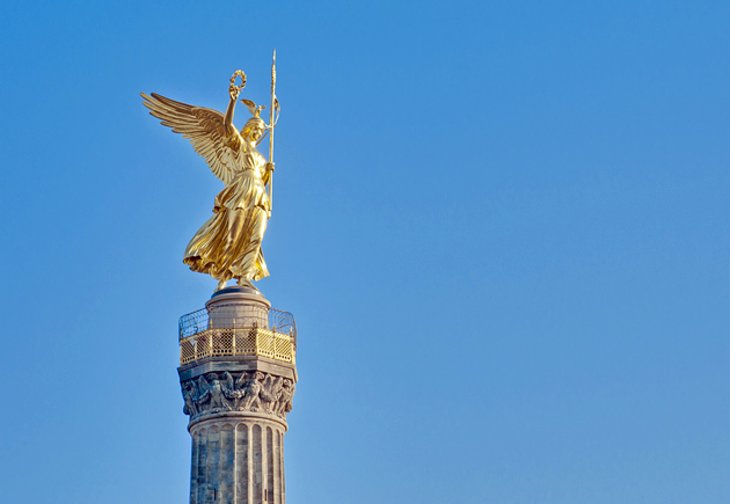
Literally translated as the "Large Animal Garden," Berlin's Grosser Tiergarten has long been a major tourist attraction. Originally a royal hunting reserve in which deer, wild pigs, and other game were kept, it was transformed into a public park in 1700.
Attractively laid out with an abundance of trees and shrubs and expanses of grass and flower borders, the Tiergarten covers 210 hectares and is a favorite spot for relaxation, walking, and boating.
The park also contains numerous statues and monuments, including the 1880 Statue of Queen Luise , which depicts her with a relief recalling her care of wounded soldiers during the War of 1806. There's also an 1849 Monument to Frederick Wilhelm III , with reliefs reflecting the King's peace-loving disposition.
The most famous of the Tiergarten's monuments is the massive Victory Column (Siegessaule), a 70-meter-tall structure crowned by an eight-meter-high gold statue of Victoria. The statue, dubbed Golden Lizzy by locals, was completed in 1873.
It's well worth climbing the 285 steps to the top of this magnificent monument for the views over the Tiergarten . And if you look closely, you'll still see evidence of bullet damage caused during WWII.
Address: Str. des 17. Juni, 10785 Berlin
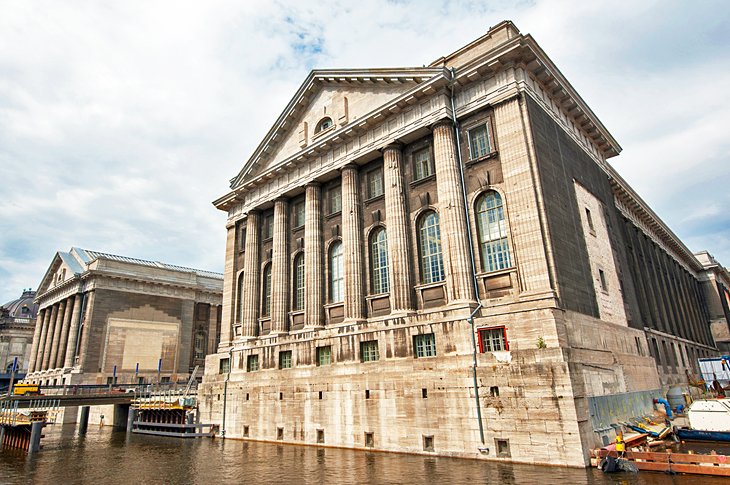
The Pergamon , the most visited of the Museum Island attractions, is also one of Berlin's top sightseeing destinations. It is home to three main galleries, each occupying a wing of the massive building, including the Middle East Museum, the Islamic Art Museum, and the Antiquity collection.
The artifacts, which narrowly escaped harm during WWII, were collected by German archaeologists during the 19th and 20th centuries from excursions to Egypt, the Middle East, and Asia.
Primarily focused on architectural marvels, including ornate façades and gates, some of the museum's most famous pieces are the Ishtar Gate of Babylon, the Roman Market Gate of Miletus, and the Mshatta Façade. A café and bookshop are located on-site.
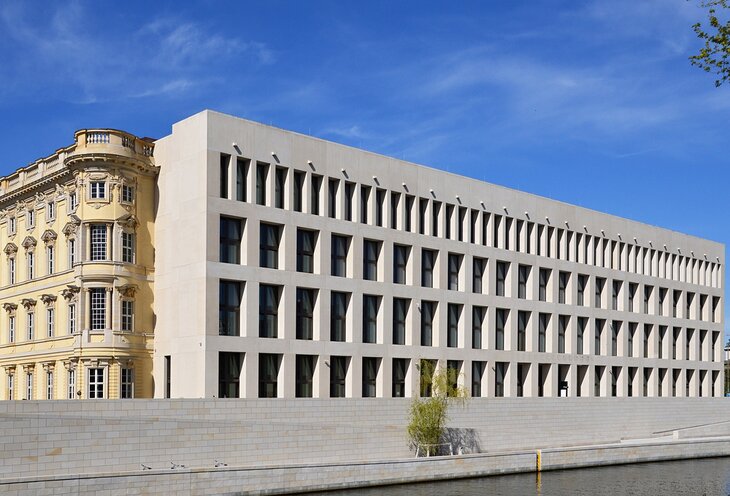
One of the most popular attractions on Museum Island—a place that's already busting at the seams with great sightseeing opportunities—is the newly opened Humboldt Forum .
Established in 2019, this remarkable feat of construction sees two of Berlin's leading museum collections —the Museum of Ethnography (Ethnologisches Museum) and the Museum of Asian Art Museum (Museum für Asiatische Kunst)—now housed under a single roof: that of a completely reconstructed Berlin Palace. Both are considered to be the equal of leading museums around the world.
Visitors can now easily explore Germany's largest collections of non-European treasures , including a trove of more than 400,000 artifacts from across the globe.
Notable highlights include displays of ancient art from Asia, along with sizable collections focusing specifically on China. In addition to its theaters, the facility houses two restaurants and a shop.
Address: Schloßpl. 1, 10178 Berlin
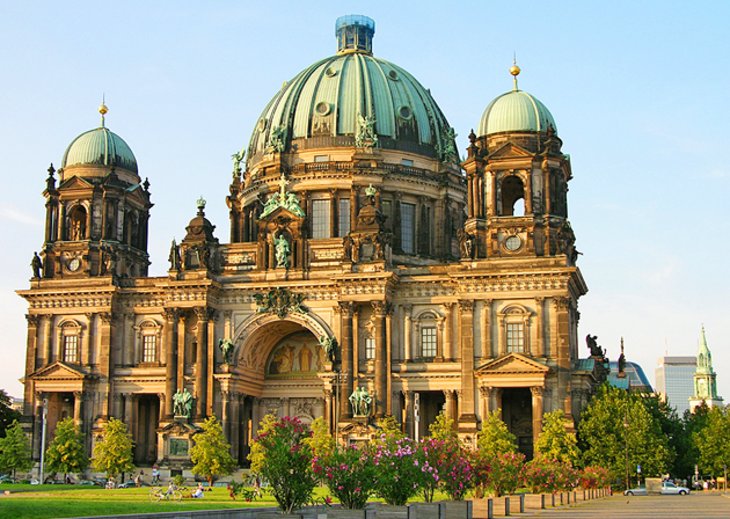
Located on Museum Island next to the Lustgarten , the Berlin Cathedral (Berliner Dom) is one of the complex's most imposing buildings thanks to its 75-meter-high dome.
Built in the New Baroque style, the building is the largest church in Berlin and is divided into three main sections: the Memorial Church, the Baptismal and Nuptial Church, and the Parish Church. After decades of painstaking work to repair war damage, the church has been returned to its former glory.
Highlights of a visit include the Imperial Staircase, decorated with bronze cornices and 13 tempera paintings by Berlin landscape painter Albert Hertel in 1905. You should also plan to see the Imperial Gallery with its splendid views of Berlin.
Another popular feature is the Hohenzollern Crypt, which contains nearly 100 sarcophagi, coffins, and monuments from the 16th to 20th centuries.
Try to time your visit for one of the cathedral's many concerts, organ recitals, or special visitor services, and be sure to climb the 270 steps to the Dome for superb views over Museum Island. English language guided tours are available, and a café and shop are located on-site.
Address: Am Lustgarten, 10178 Berlin
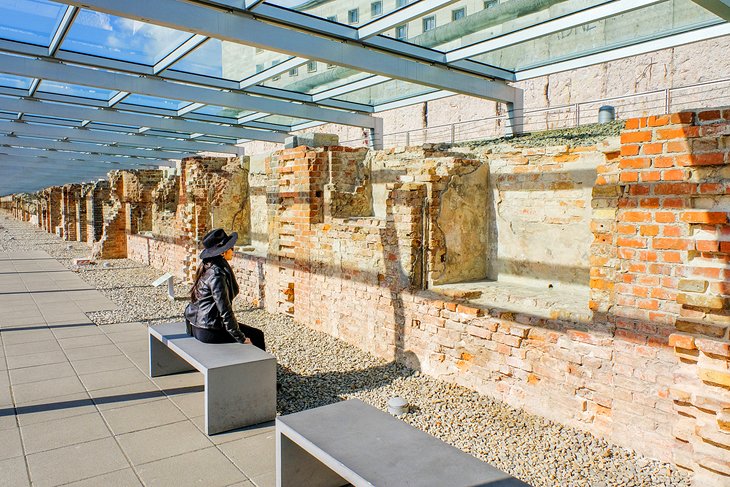
Also known as the Museum of the Gestapo, the Topography of Terror (Topographie des Terrors) occupies the buildings that were once the central offices and prison of the Secret State Police and the headquarters of Gestapo operations during WWII.
The main exhibit focuses on the SS and police during Nazi rule, highlighting the terrible crimes that were committed and giving visitors a sense of the constant state of terror that was everyday life for Europeans under their control.
Exhibits include documents, photographs, audio, and film, and explore various themes, including persecution and extermination, occupied countries, and the postwar era.
Visitors are also invited to tour the historic grounds, which include remains of the Berlin Wall and the outdoor exhibition Historic Wilhelmstraße. Informative English language tours are available on Sundays.
Address: Niederkirchnerstraße 8, 10963 Berlin
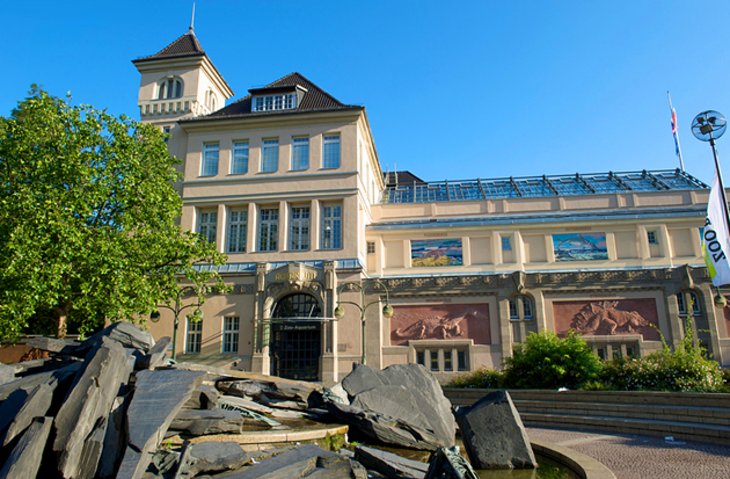
Berlin Zoological Gardens (Zoologischer Garten Berlin) is the oldest zoo in Germany and remains one of Berlin's most popular attractions, welcoming 3.5 million guests each year.
Established in 1844 and completely rebuilt after WWII, the zoo has earned a reputation for its many successful breeding programs and is known for providing authentic habitats for the animals.
The zoo is home to nearly 20,000 animals big and small, from Arctic wolves to zebras. Famous residents include a pair of giant pandas, two species of giraffe, and a flock of diminutive African penguins.
The Zoological Gardens are also home to Europe's biggest aviary, as well as Aquarium Berlin , where you can watch more than 9,000 creatures swim in its 250 tanks, including reef and tiger sharks, jellyfish, tropical fish, reptiles, and insects.
Address: Hardenbergplatz 8, 10787 Berlin
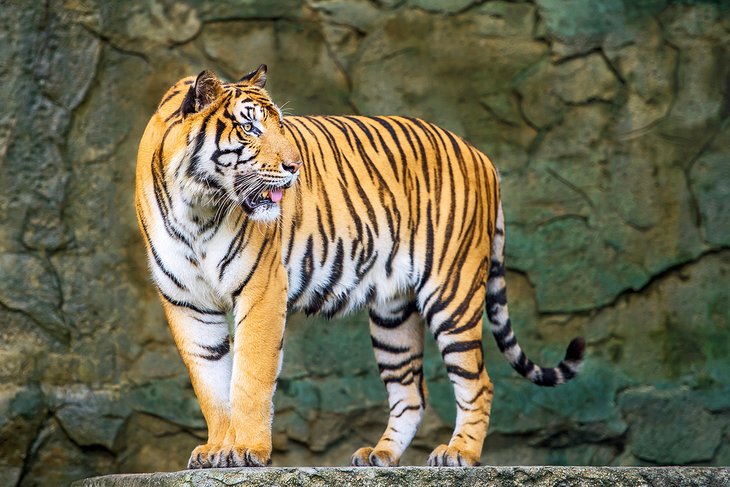
Another zoo of interest is Tierpark Berlin . Spread across 400 acres and home to some 7,250 animals from 846 different species.
Opened in the 1950s, it's very nearly the equal of Berlin Zoo and is well worth a visit, especially if you're traveling with kids. Star creatures include its elephants (the zoo is known for its breeding program), polar bears, as well as a large herd of muskox.
If you're visiting in summer, be sure to time your visit to coincide with one of the regular late openings. And check out the zoo's website for details of special kids' programs, feeding schedules , as well as tours and unique animal experiences.
Address: Am Tierpark 125, 10319, Berlin
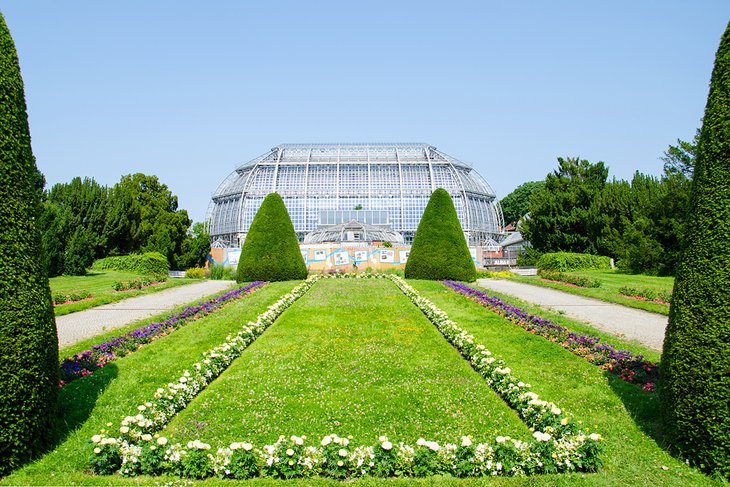
Originally the kitchen and herb garden of the Royal Palace, the Berlin-Dahlem Botanical Garden and Botanical Museum (Botanischer Garten und Botanisches Museum Berlin-Dahlem) was built in 1679 on the instructions of the Grand Elector.
Covering 126 acres, it is one of the world's largest botanical gardens , home to more than 20,000 species of plants that represent the flora of not only Europe but also tropical and subtropical environments in the Great Tropical House.
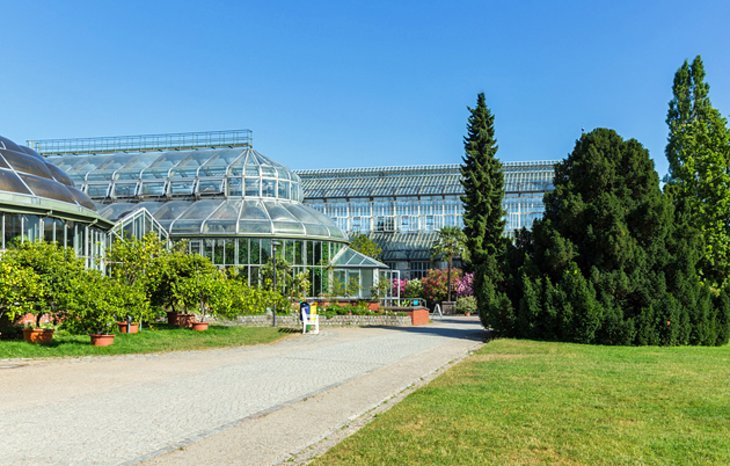
There are also gardens of medicinal plants and a large pond forming the centerpiece of the biotope for marine and marsh plants.
If you can, try to visit at Christmas, or during the attraction's annual "Botanical Night" event, considered one of the most romantic things to do in Berlin in winter.
Also worth seeing is the Electoral Garden with its 17th-century garden greenery, the garden restaurant, and the excellent Botanical Museum with its herbarium featuring more than two million plants and an extensive library.
Address: Königin-Luise-Strasse 6-8, 14195 Berlin
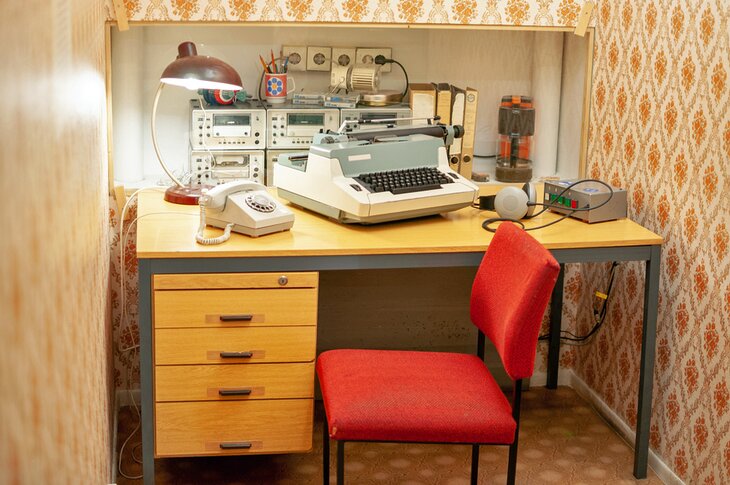
One of Berlin's newer tourist attractions, the DDR Museum opened in 2006 and offers a sobering look at life in East Berlin under communist rule.
Located in the old government district of East Berlin, this popular attraction features a variety of hands-on, interactive exhibits related to such areas of life as surveillance, the privations of everyday life, as well as a replica tower block.
Other highlights of a visit include a replica prison cell, interrogation room, cinema, along with accompanying information. Be sure to try out the Trabant simulator, which provides a realistic driving experience along the Berlin Wall in a classic East German vehicle.
A large collection of authentic artifacts from this time period are also on display.
Address: Karl-Liebknecht-Str. 1, 10178 Berlin
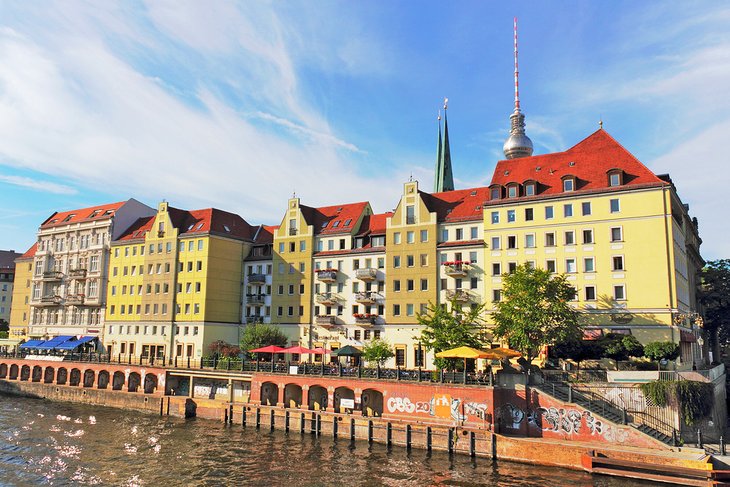
Berlin's Nikolai Quarter (Nikolaiviertel) is in the heart of the old city, and is where you'll find many of its oldest and most popular attractions, as well as plenty of interesting things to do beyond the usual places to visit.
This pedestrian-friendly quarter is known for its many small buildings set along narrow streets full of nooks and crannies, home to restaurants, cafés, and shops, along with craft workshops selling everything from basketry to wooden crafts.
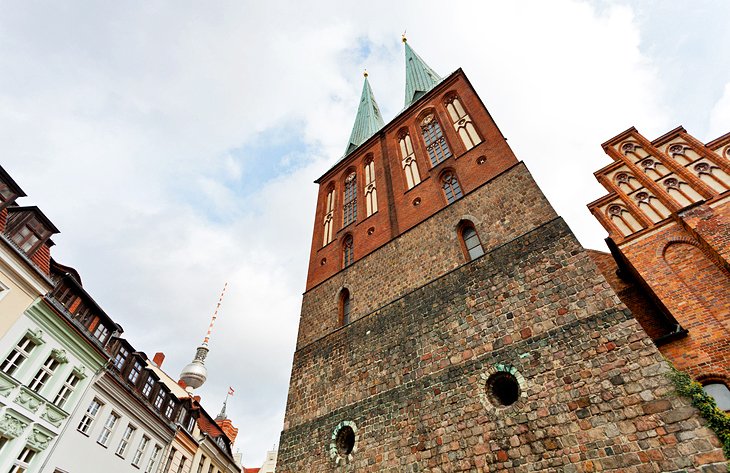
Highlights include the district's many old fountains, lanterns, and lattice-windows on the older houses and historic buildings such as Ephraim Palace , built in the 1760s, which has exhibits dedicated to Berlin's rich artistic and cultural history, as well as an exquisite grand staircase.
Also of note is Knoblauch House , built in 1760 and representative of the former homes of the city's wealthy Jewish merchants and tradesmen.
Another favorite tourist spot is Berlin's most famous street, Unter den Linden . This broad avenue stretches some 1,400 meters and connects Pariser Platz in front of the Brandenburg Gate to the Lustgarten.
Today, the two car lanes on the Unter den Linden are separated by a wide, central pedestrian area that extends much of the street's length and provides a wonderful place to relax and take in the bustling city around you. Popular attractions are the Gendarmenmarkt , the Opera House , and St. Hedwig's Cathedral .
Address: Nikolaikirchplatz, 10178 Berlin
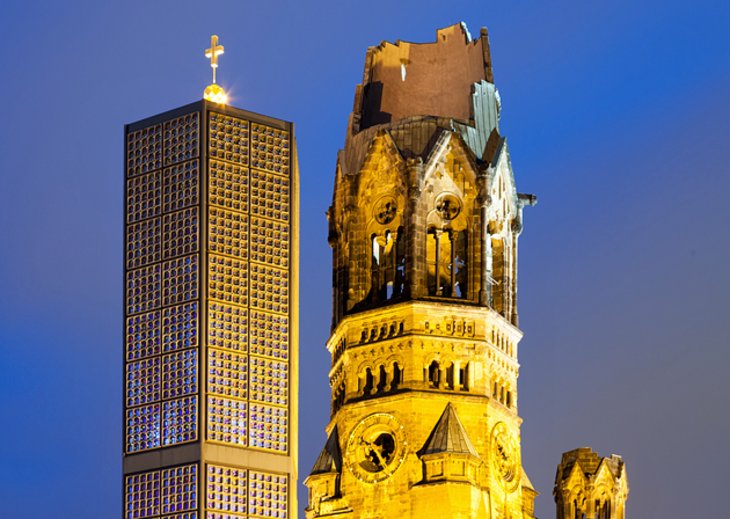
One of Berlin's most interesting landmarks, Kaiser Wilhelm Memorial Church (Kaiser-Wilhelm-Gedächtniskirche) is in many ways two churches: the ultra-modern new church designed in 1961, and next to it, the ruins of the original, including most of the 63-meter-high tower.
Completed in 1895 in honor of Emperor Wilhelm I, the original was destroyed in 1943, but its remains were incorporated into the new complex.
The result is now a major Berlin landmark that also serves as a war memorial, with exhibits installed containing mosaic remains, architectural remnants, and photos. The centerpiece is a figure of Christ from the old church and a Cross of Nails from Coventry Cathedral, destroyed by German bombs earlier in WWII.
Guided tours are available, and visitors are welcome to participate in Sunday services; Evening Music Services featuring cantatas, organ recitals, and choral music; and regular weekday services. A very popular Christmas Market is held outside the church each winter.
Address: Breitscheidplatz, 10789 Berlin
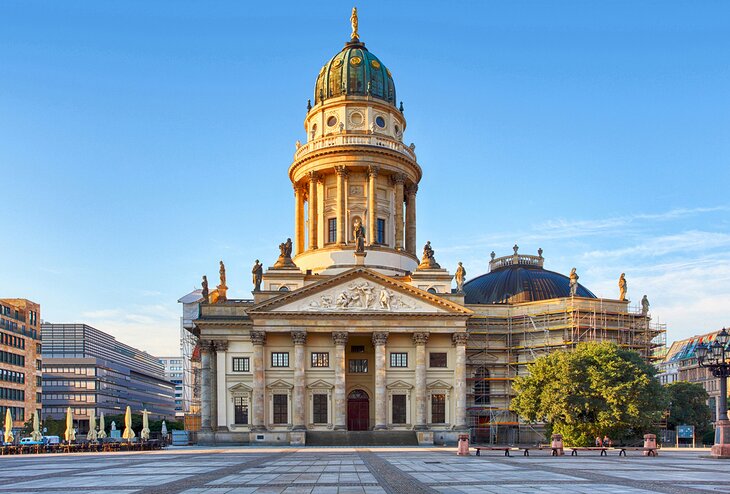
The Französischer Dom (French Cathedral) was constructed in 1705 by and for French Calvinists (Huguenots) who came to Berlin in the late 17 th century seeking religious freedom. Its ornate dome was later added in 1785, and repaired in the 20 th century after sustaining damage during WWII.
The church's tower is one of the best places to get a bird's-eye view of the city of Berlin , offering panoramic views over the Gendarmenmarkt and nearby landmarks like the Berliner Dom and Pergamonmuseum on Museum Island.
The freshly renovated Huguenot Museum is located in the tower of the cathedral, dedicated to the history of those who were forced to relocate as a result of the Reformation. The exhibits focus on the contributions made by these immigrants who, at the time the church was built, made up around 25 percent of the city's population.
The museum includes paintings, photographs, books, and furniture, and also hosts lectures and special programs throughout the year. It is open Tuesdays through Sundays from 12 noon to 5pm.
Address: Gendarmenmarkt 7, 10117 Berlin,
For those wanting to be within walking distance of top attractions such as the Brandenburg Gate and Museum Island, the best place to stay is Berlin's Mitte district, the city's historic center. Here are some highly rated hotels to consider in or near this area:
Luxury Hotels:
- One of Berlin's most iconic hotels is the magnificent SO/Berlin Das Stue , centrally located and overlooking the western section of the beautiful Tiergarten. This boutique hotel features the Michelin-starred Cinco restaurant, as well as high-end amenities like electric vehicle charging, on-site spa services, and in-room breakfast.
- At the Tiergarten's opposite end, the Regent Berlin and Hotel Adlon Kempinski Berlin are just steps away from the historic Brandenburg Gate and are perfectly positioned to explore the city's famous Museum Island. Both are also just a short walk from the tree-lined Unter den Linden, famous for its boutiques, cafés, and restaurants.
Mid-Range Hotels:
- Just minutes away from the Tiergarten and close to excellent dining and shopping, the Hampton by Hilton Berlin City West is a great base from which to explore other areas of Berlin thanks to its proximity to the city's excellent subway (U-Bahn) system.
- Another popular option is The Circus Hotel , just minutes from Museum Island. Renovated in 2020, this eco-conscious boutique hotel offers a lovely garden courtyard, as well as a rooftop terrace.
- Also of note is the funky, modern Hotel Gat Point Charlie , which as its name suggests, is adjacent to one of Berlin's most famous landmarks. It's also just steps away from the Friedrichstrasse shopping area, and guests can rent bicycles on-site for exploring the city.
Budget Hotels:
- For those on a tight budget, city-center options worth considering include the Ibis Berlin Kurfurstendamm Hotel , a short walk from the Tiergarten, and Motel One Berlin-Hackescher Markt , not far from the city's museum district.
- A fun stay can be enjoyed at the unique CUBE Lodges Berlin Mitte , a collection of bungalow-style "cubes" capable of sleeping up to four people and set around activities including volleyball courts and bike rentals, all just a short walk from the Berlin Wall Memorial.
- Sightseeing: There are several great ways to see Berlin, whether by bus, bike, or on foot. One of the easiest ways to get around the city and learn a little about the history is on a double-decker, open-air Berlin City Hop-on Hop-off Bus Tour . This tour offers 20 stops at various points of interest, with the option to get off or stay on the bus. For a more in-depth, feet-on-the-ground experience, the Explore Berlin Walking Tour offers a three-hour guided walking tour that includes major attractions, from the Brandenburg Gate and Checkpoint Charlie to Hitler's former bunker. If you really want to get active, take a 4.5-hour guided Berlin Bike Tour to see the city's top attractions and learn about their history along the way.
- Day Trips: The Sachsenhausen Concentration Camp Tour from Berlin is a six-hour day trip to one of the first concentration camps established by the Third Reich. Today, it is a national memorial. This is a historian-led tour and includes admission to the site. If you would like to visit iconic tourist attractions like Zwinger Palace and Frauenkirche, the Dresden Day Trip from Berlin provides an opportunity to get a guided walking tour of the historic city and then enjoy the afternoon exploring Dresden and the banks of the River Elbe at your leisure.
More Related Articles on PlanetWare.com
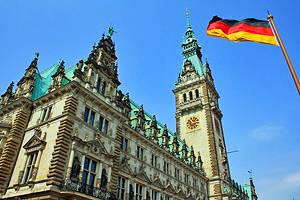
Germany's Other Big Cities : The old imperial city of Frankfurt should be on your Germany itinerary, and in addition to is lovely setting on the River Main is well known for its cultural events, including being home to the Frankfurt Book Fair. Historic Munich is also a must-visit, especially for its stunning cathedral and Marienplatz , the city's central square, popular for people watching and enjoying a picture-perfect, pedestrian-only experience. In the north of the country, the port city of Hamburg -the country's second biggest city-is a delight to explore on foot, especially its old historic quays, canals, and docks.
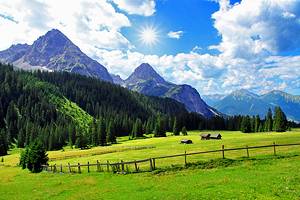
Germany's Incredible Scenery : Picture Germany, and you'll no doubt conjure up the kind of images associated with picturesque Bavaria , the country's largest state and home to the kind of traditional sights of forests, mountains, and quaint little villages. The Black Forest is another area often visited by tourists, and is as famous for its thick forests as it is for its old farmhouses and pretty villages. For the country's most dramatic scenery, head to Garmisch-Partenkirchen , a mountainous region as popular with skiers in winter as it is hikers and mountain bikers in the summer.
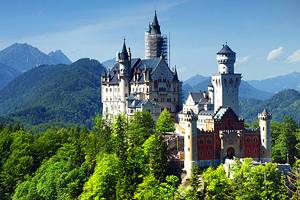
Top Germany Travel Ideas : For a look at old Germany, be sure to include the romantic town of Rothenburg on your travel itinerary, as famous for its old walls and towers as it is for its remarkably preserved medieval architecture. The magnificent Rhine Valley region also makes for a great German vacation, especially one that takes in a Rhine River cruise through the stunning UNESCO World Heritage Site that is the Rhine Gorge. A similar experience can be enjoyed in the equally attractive Mosel Valley , home to the old Roman city of Trier.
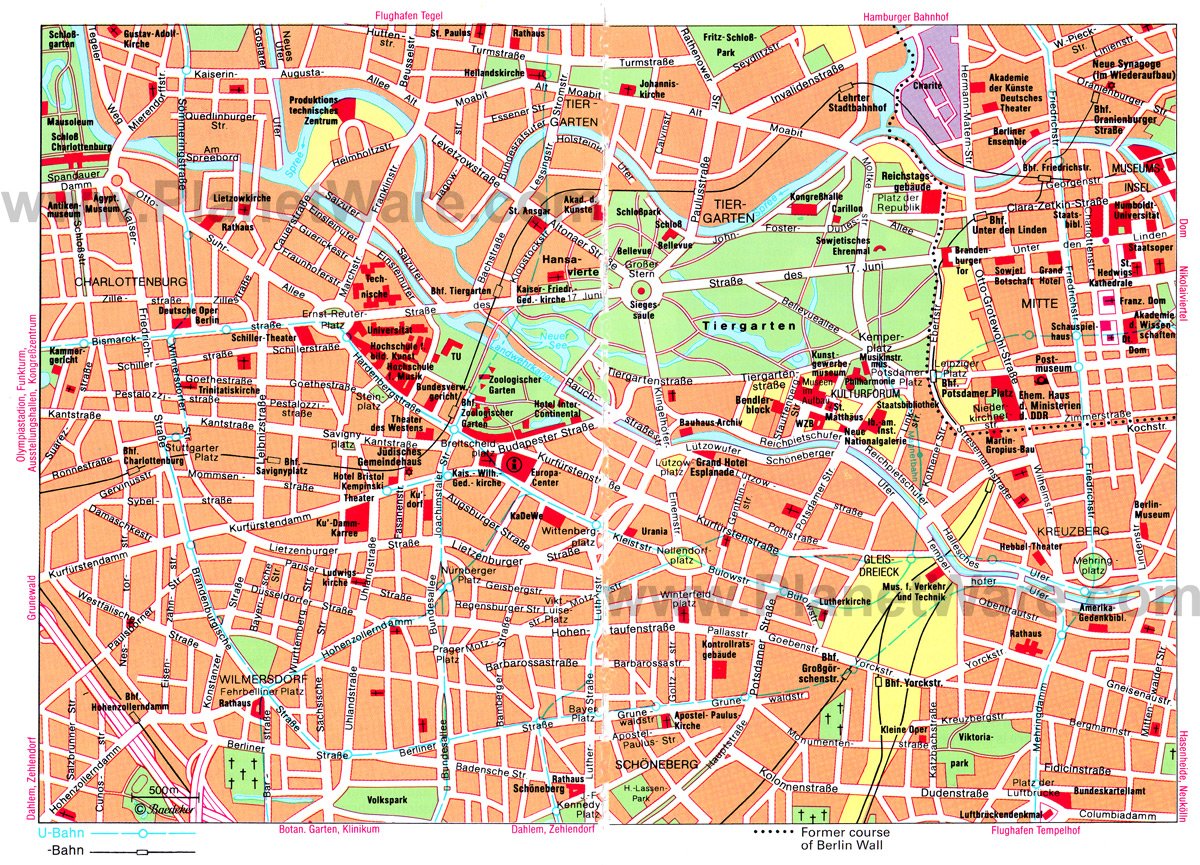
More on Germany


Touropia Travel
Discover the World
27 Top Tourist Attractions in Germany
By Spencer Leasca · Last updated on May 4, 2024
Germany is a fascinating place to visit. Cities like Berlin, Cologne, Dresden, and Frankfurt ooze culture and history. While the stunning mountains, lakes, valleys, and forests of Bavaria, Baden-Württemberg, and Saxony will take your breath away.
Plenty of small towns and villages boast impressive castles and cathedrals that will seduce you with their charm. While the gastronomy and beer in every region will leave your taste buds dancing with delight.
For the tourist, Deutschland – as the locals call it – spoils you for choice. In fact you could spend an entire month in the country and still barely scratch the surface of all the things to do in Germany.
Clearly, you won’t be able to see everything during your visit. But after reading our top tourist attractions in Germany, you should have a clearer idea of where you might want to go.
27. Quedlinburg
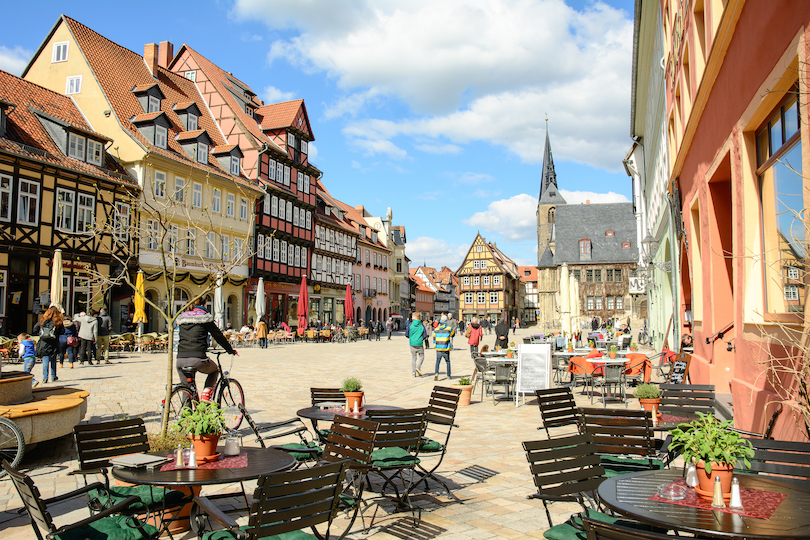
North of the Harz Mountains National Park is the charming, picturesque town of Quedlinburg. As visitors walk along the cobblestone streets, they will have the opportunity to view over 1,000 half-timbered houses.
Since the town suffered minimal damage during the World Wars, it is one of the few destinations in Germany that retain its quaint, historic style.
It also has an impressive castle ruin, while its main landmark is the St. Servatius Church. Dating back to the 11th century, it is one of the oldest churches in Germany. It is notable for possessing several valuable works of art and the tomb of King Henry I – the first German monarch.
Quedlinburg was declared a UNESCO World Heritage Site in 1994. It also boasts a rich cultural heritage that incorporates several traditional festivals and events. These include the Quedlinburg Festival of Music and the Quedlinburg Christmas Market.
Visitors can also check out the Münzenbergmuseum and sample the local cuisine. Traditional dishes such as ‘Harzer Roller’ and ‘Harzer Käse’ are well worth trying.
26. Speicherstadt in Hamburg
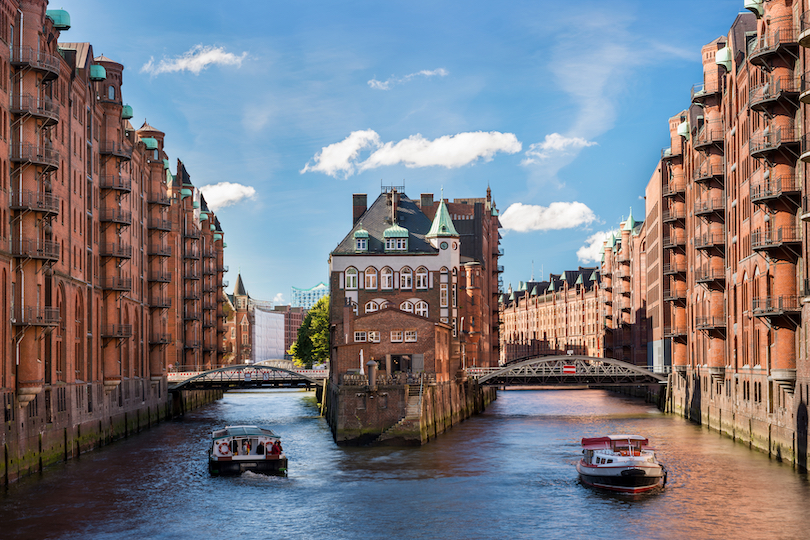
Speicherstadt is a historic warehouse district in Hamburg . It possesses one of the largest collections of brick buildings in the world. It is also defined by an intricate network of canals and its distinctive red brick architecture.
Built-in the late 19th and early 20th centuries, these warehouses stored goods such as coffee, spices, and textiles.
In 2015, the Speicherstadt and the nearby Kontorhausviertel became UNESCO World Heritage Sites. This was in recognition of their exceptional representation of early modern architecture and urban planning. It was also a result of their historical significance as a centre of international trade.
Today, Speicherstadt is a vibrant neighbourhood full of museums, restaurants, cafes, and shops. It attracts tourists with its unique architectural style and colourful history. Visitors can take a guided tour of the warehouses and learn about their history and use.
As well as the warehouses, the Miniatur Wunderland resides here. It is the largest model railway in the world and is another popular tourist attraction.
25. Römer in Frankfurt
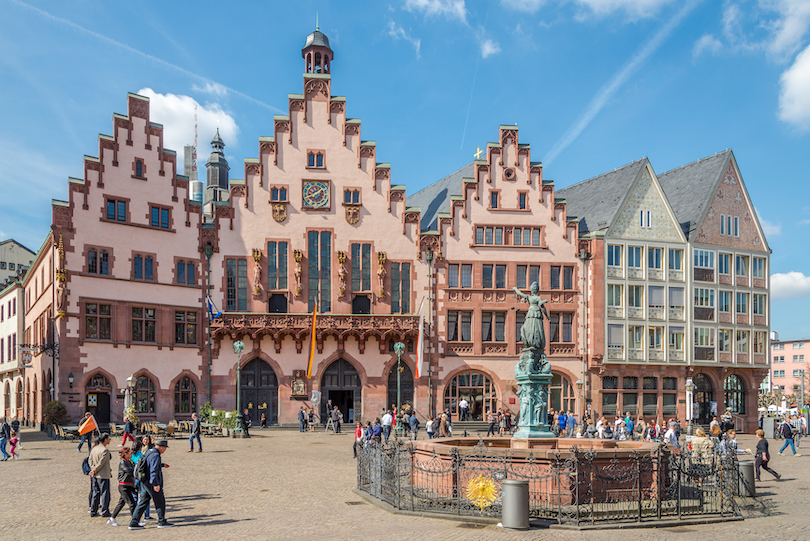
The Römer is a historic building complex in the city center of Frankfurt. It comprises a row of half-timbered buildings that date back to the 15th and 16th centuries.
One of the most famous landmarks in the city, The Römer was originally built as a town hall. It was also a residence for Frankfurt’s wealthy merchants. Today, the buildings are used for various purposes. These include a venue for city council meetings, offices for the city administration, and a cultural center.
You can admire the beautiful half-timbered architecture and the intricate carvings and sculptures on their facades. The Römerberg – the square in front of the Römer – is a popular gathering place. It is also the site of many cultural events, such as the annual Christmas market.
As a symbol of Frankfurt’s rich history, The Römer offers a unique and fascinating glimpse into the city’s past. Providing a stunning contrast to the modern skyscrapers and financial institutions for which Frankfurt is also famous.
24. Volkerschlachtdenkmal in Leipzig
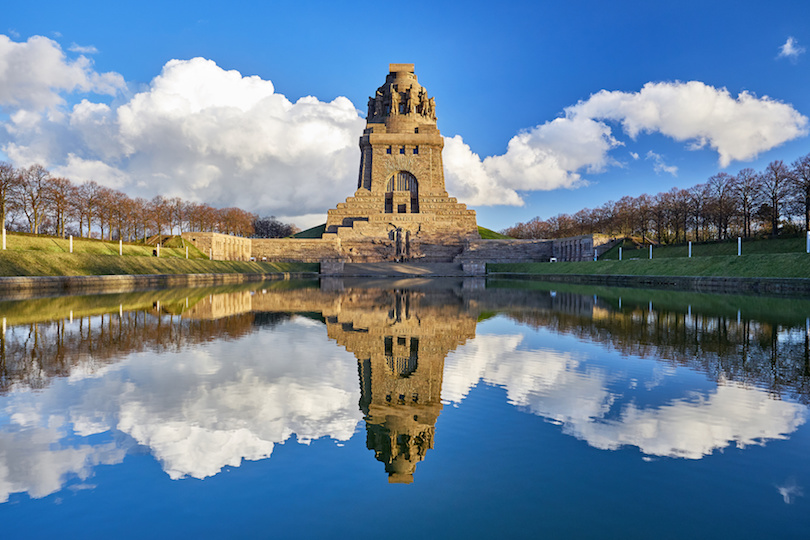
Leipzig is a major city in Saxony, and it is also home to one of the largest monument in Europe. The Volkerschlachtdenkmal, or Monument of the Battle of the Nations, was built to remember the Battle of Leipzig in the Napoleonic Wars.
During the battle, more than 100,000 soldiers perished. Although the battle took place in 1813, the monument wasn’t unveiled until 1913. Today, the monument is accompanied by a museum exhibit explaining more about the battle and the Napoleonic wars of the 19th century.
23. Old Town Hall in Bamberg
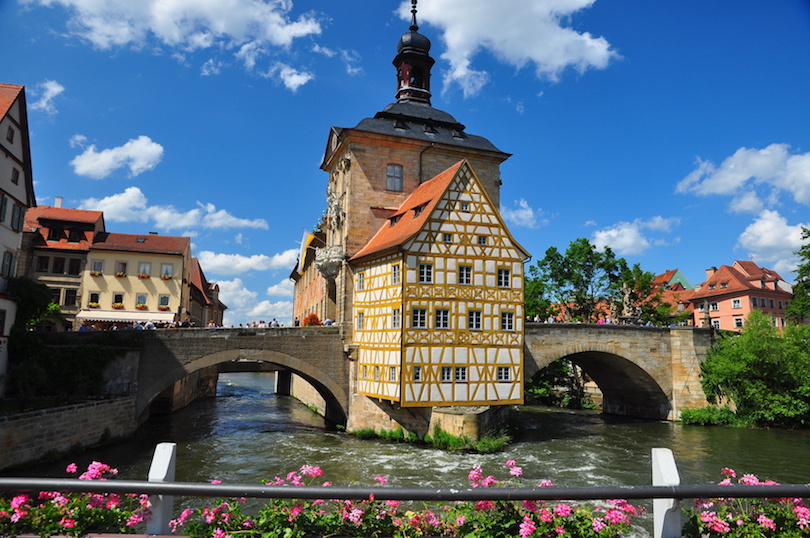
Bamberg is a historic city in Bavaria , and it is home to a number of fascinating architectural landmarks. None is so interesting or important as the Old Town Hall, or the Altes Rathaus.
Legend says that the city’s bishop wouldn’t allow the residents to build a town hall on existing land, so they decide to construct the building in an unexpected spot. The Altes Rathaus is perched on the middle of a bridge spanning the Regnitz River, and the interior is decorated with remarkable frescoes.
The building was constructed in the late 13th and early 14th centuries with a Gothic façade. It also has a large hall and a striking tower.
Considered to be one of the most beautiful town halls in Germany, tourists can go on a guided tour of the building. During this, you will learn about its architectural and historical significance.
You will also be told some incredible tales, legends, and stories about it. One of which relates to the Bamberg Rider. This is the ghost of a knight who died in a duel and who allegedly still haunts the building.
22. Harz Mountains
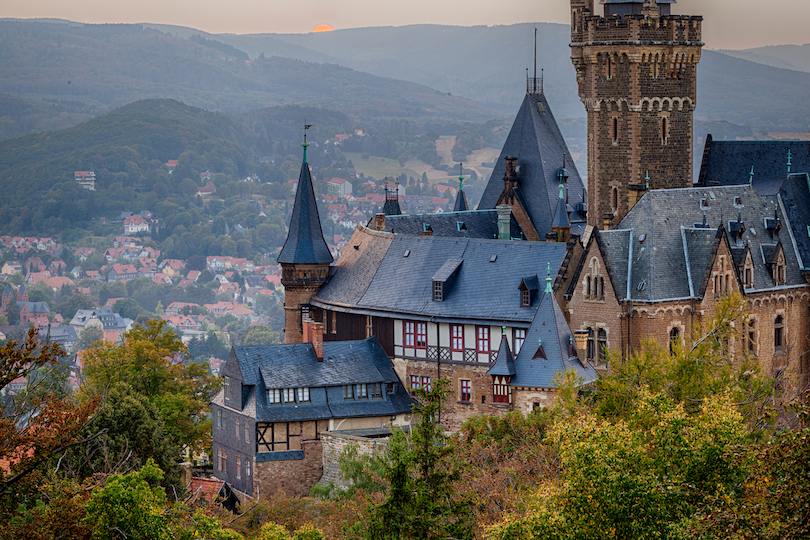
One of the highest mountain ranges in Germany is the Harz Range, a region populated by picturesque, traditional homes, snow-covered peaks and peaceful rivers.
The Grimm Brothers, who famously wrote many of the world’s most popular fairy tales, based some of their stories in the Harz Mountains.
With a limited number of tourists, the Harz Mountains are slightly off the beaten track, offering activities like hiking to the summit of Brocken, the tallest peak, or riding an authentic steam train through the mountains and valleys.
21. Aachen Cathedral
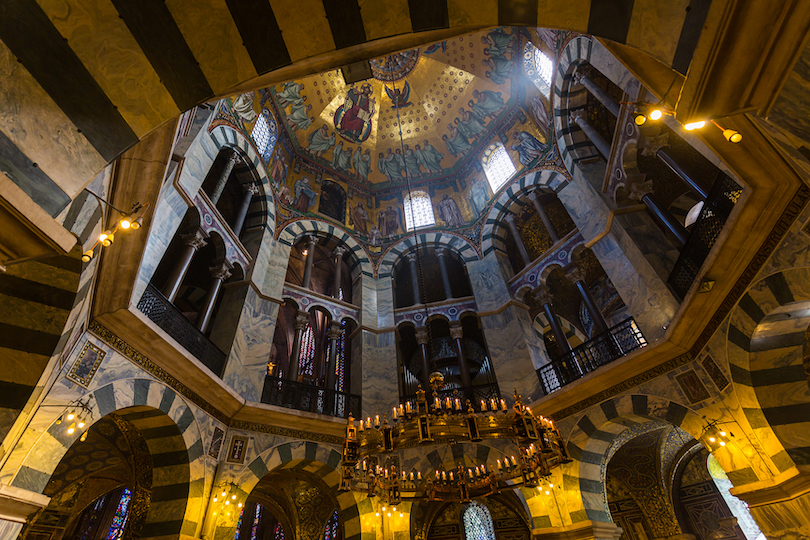
Located near the border with Belgium and the Netherlands , the Aachen Cathedral is the oldest cathedral in northern Europe.
Construction on the cathedral began in the eighth century, and the design is a combination of Carolingian and Gothic styles. The cathedral was built by the king Charlemagne, and countless coronations were held there in centuries past.
Visiting today, some of the most fascinating things to see are the incredible bronze Wolf Doors from the ninth century and the golden mosaics in the Palatine Chapel.
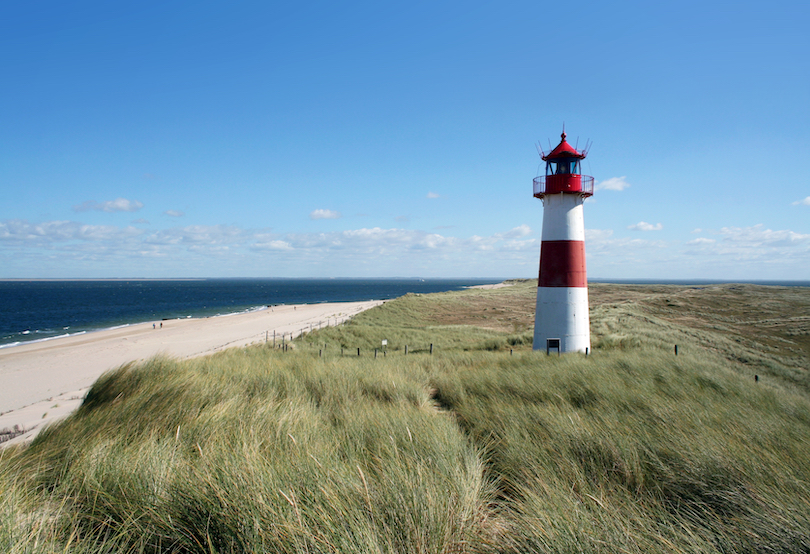
Sylt is a stunning North Frisian island located in the North Sea. The largest of the North Frisian Islands, it’s known for its beautiful sandy beaches and wild dunes. However, its main attraction is the Wadden Sea National Park. Sylt is one of the most popular islands, although its northern location means it is not as accessible for travelers as other German tourist attractions.
Sylt boasts endless beaches, not to mention gorgeous sand dunes and traditional lighthouses. A short walk from thatched roof cottages and open fields, you can make a splash at the beach and stay in a contemporary hotel suite. Renting bicycles and tour the island that way is also a popular thing to do in SyIt.
In addition to its natural attractions, Sylt is also known for its traditional architecture. This includes its characteristic red-roofed houses. It also incorporates the ‘Kampen House’ style, found in the village of Kampen.
19. Saxon Switzerland National Park
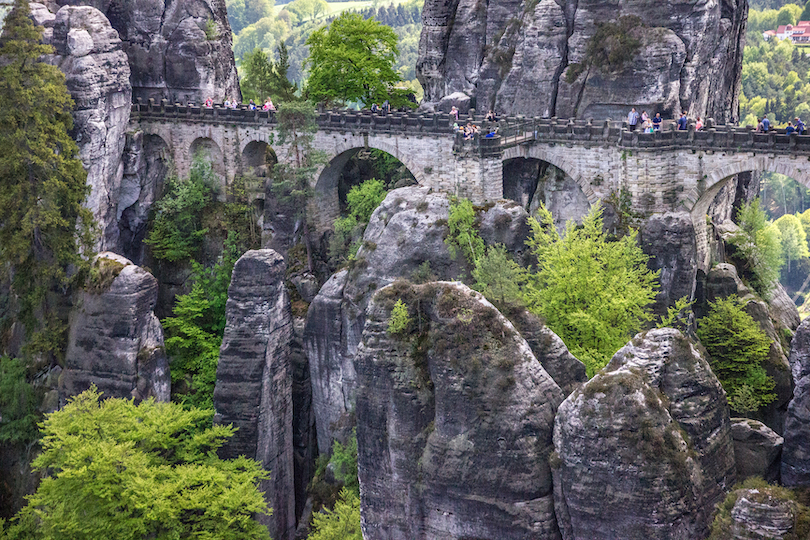
Not far from the city of Dresden is the Saxon Switzerland National Park, a sprawling park near the scenic Elbe Sandstone Mountains. The park crosses over into the Czech Republic, but the Czech side is known as the Bohemian Switzerland National Park.
The national park is known for its unique sandstone formations, rock towers, and deep valleys. It is a popular destination for outdoor enthusiasts and nature lovers, offering opportunities for hiking, climbing, and sightseeing.
The park is named after the country of Switzerland because of its similarities to the Swiss Alps. The sandstone formations in the park developed over millions of years through erosion and weathering. They are now a source of inspiration for artists and photographers.
One of the most popular sights in the park is the Bastei Bridge, a sandstone bridge that offers panoramic views of the surrounding landscape. Visitors can also explore the park’s many trails, including the Malerweg. This scenic course leads through the park and is named after the painters who were inspired by the area’s beauty.
18. Schwerin Castle
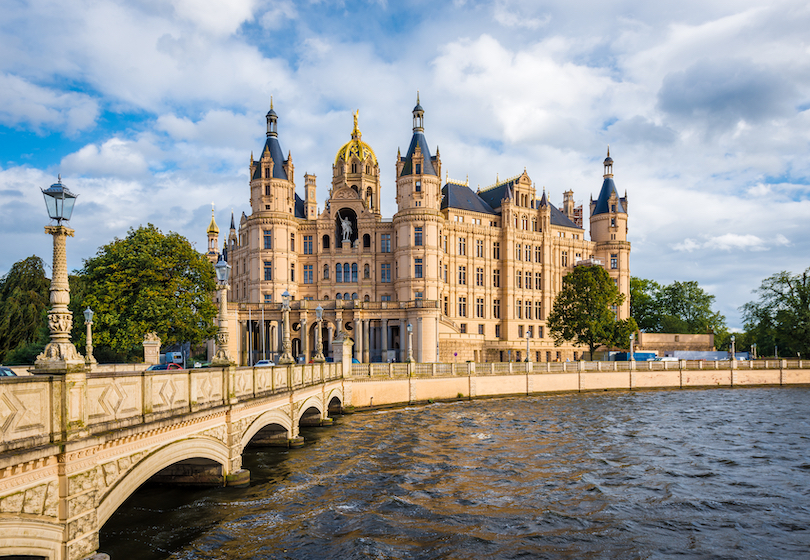
Schwerin Castle is a historic palace located in the city of Schwerin. It is one of the most important examples of 19th-century Romantic architecture remaining in Germany.
Located on an island in the city’s lake and surrounded by a beautiful park, it has a rich history that dates back to the 9th century. Over the years, it served as a residence for several dukes and grand dukes of Mecklenburg-Schwerin for many generations.
The present building was constructed in the 19th century and showcases a mix of Gothic and Renaissance styles. Its design incorporates towers, turrets, and decorative elements that give the castle its distinctive character.
Schwerin Castle is a symbol of the city’s rich cultural heritage. Visitors to the castle can admire its beautiful architecture. They can also explore its interior and learn about its rich history through exhibits and displays. The castle’s beautiful gardens and parks also provide a tranquil space for visitors to relax.
17. Rugen Cliffs
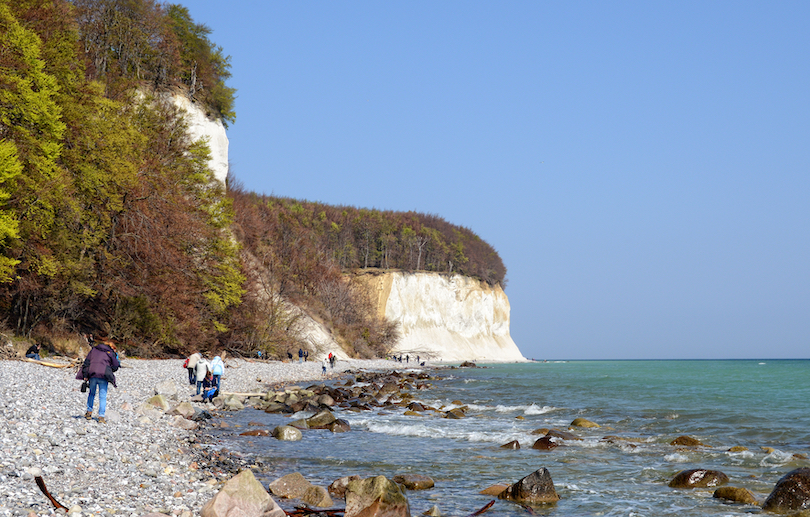
Located on the Pomeranian coast, within the Baltic Sea, the Rügen Cliffs are a feature of Germany’s largest island.
To get to them, you will have to head to Rügen island in northeast Germany. But once you are there, you should be wowed by its stunning coastal scenery.
It includes high chalk cliffs like The King’s Chair, which has a viewing platform and visitors center that showcases exhibits on Rügen nature.
The cliffs are a popular tourist destination which offers access to pristine sandy beaches, hiking trails, and birdwatching opportunities. It is a part of Jasmund National Park, which is renowned for its primeval beech forests and white-tailed eagles.
The nearby seaside resort Sassnitz features a fascinating museum within the former submarine HMS Otus.
16. Berchtesgaden
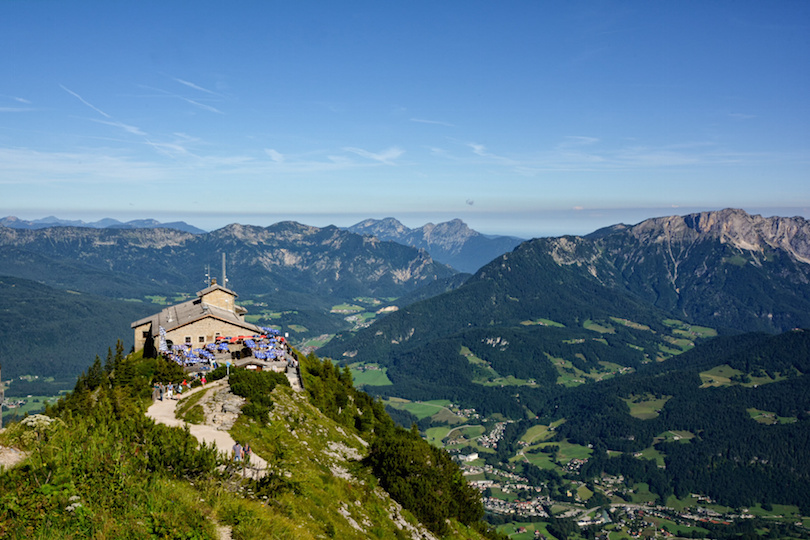
Nestled in the southeast part of the country, near the Austrian border, lies Berchtesgaden. Known as one of Bavaria’s most beautiful regions, it features stunning alpine scenery. It is also a haven for those who enjoy winter recreational activities like hiking, skiing, and snowboarding.
In addition to these activities, Berchtesgaden is also home to several historic sites. These include Konigsee lake and the Kehlsteinhaus on top of Berchtesgaden. Also known as the ‘Eagle’s Nest’, it was a former mountain the retreat of Hitler. Even after the end of World War II, the structure was saved and now operates as a museum.
Berchtesgaden is also famous for its salt mines. Should you book a tour of them, you will be able to view an operation that has been going on for thousands of years.
15. Reichstag in Berlin
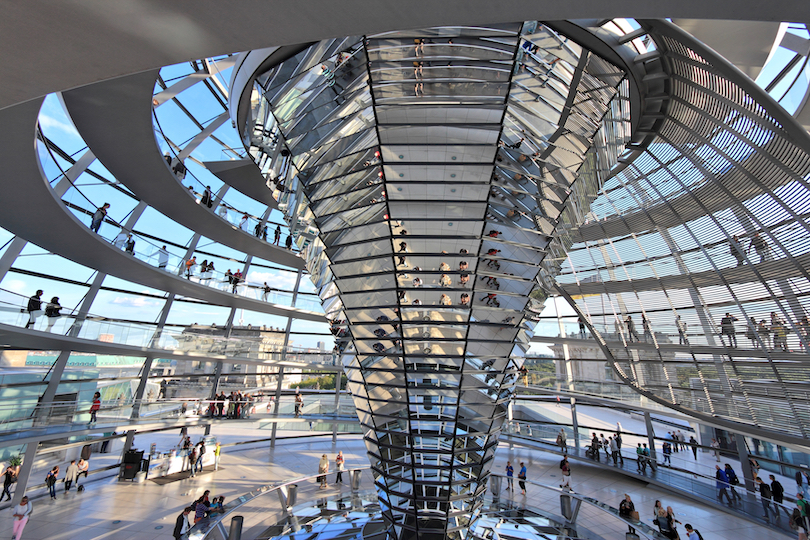
The capital city of Berlin is filled with historic buildings, but one of the most important is the Reichstag.
Although originally dating back to the 19th century, the Reichstag got a major renovation in the 1990s after being severely damaged in WW2. Following the end of the Cold War, Berlin was chosen as the overall capital, and the Reichstag became the official seat of government in Germany.
It now boasts an incredible glass dome that offers views over the city and looks stunning when illuminated at night.
14. Hohenzollern Castle
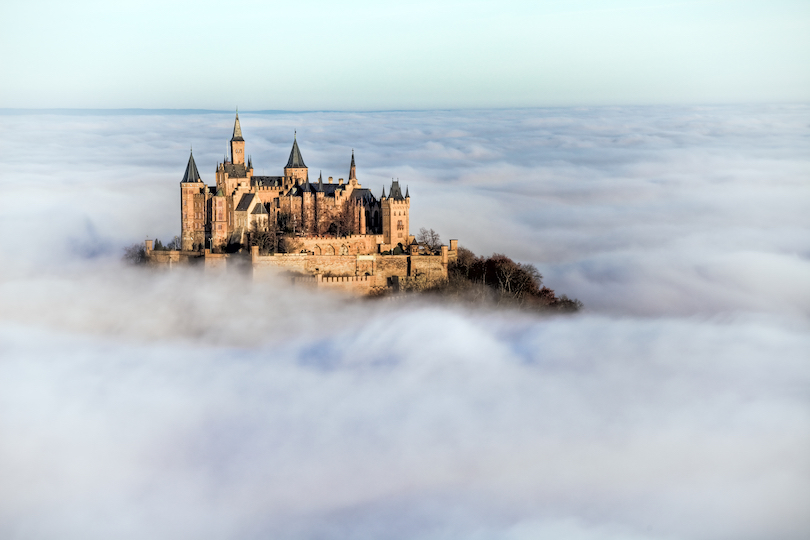
The neo-Gothic Hohenzollern Castle is perched on a bluff overlooking two small towns at the foothills of the Swabian Alps.
Not far from the town of Hechingen in central Germany, this popular tourist destination is known for its stunning architecture and historical significance. It also offers breathtaking views of the surrounding countryside.
The castle has a rich history. For many years it served as the ancestral seat of the Hohenzollern family, who played a significant role in German history.
It has undergone several renovations and reconstructions over the centuries, and today, visitors can explore its well-preserved interiors. This includes grand halls, bedrooms, and chapels – which will blow you away with their lavish decor and ornate detail.
13. Zugspitze
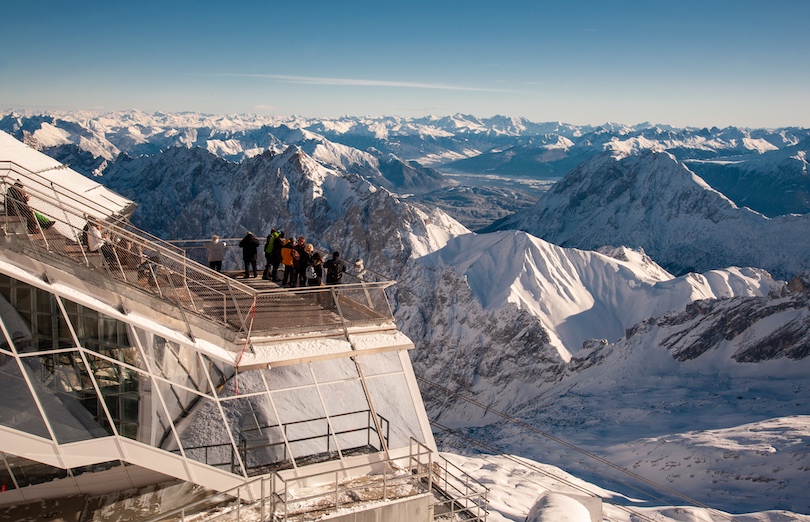
Zugspitze is the highest mountain in Germany. Located in the Bavarian Alps near the border with Austria, it soars to a height of 2,962 meters (9,718 feet). Its summit offers breathtaking panoramic views of the surrounding mountains and valleys.
Although the peak is a world-renowned spot for serious skiers, a trip to the top is worthwhile whatever the season. From a lake at the base of the mountain, hop aboard the Zahnradbahn, a cogwheel train that heads partway up the mountain. Then, it’s onward on the cable car called the Eibsee-Seilbahn. At the summit, it is possible to view the landscape of four countries at once.
In addition to its scenic beauty, Zugspitze is also home to a research station and several hotels and restaurants. They make it a convenient base to explore the surrounding mountain range.
12. Nuremberg Christmas Market
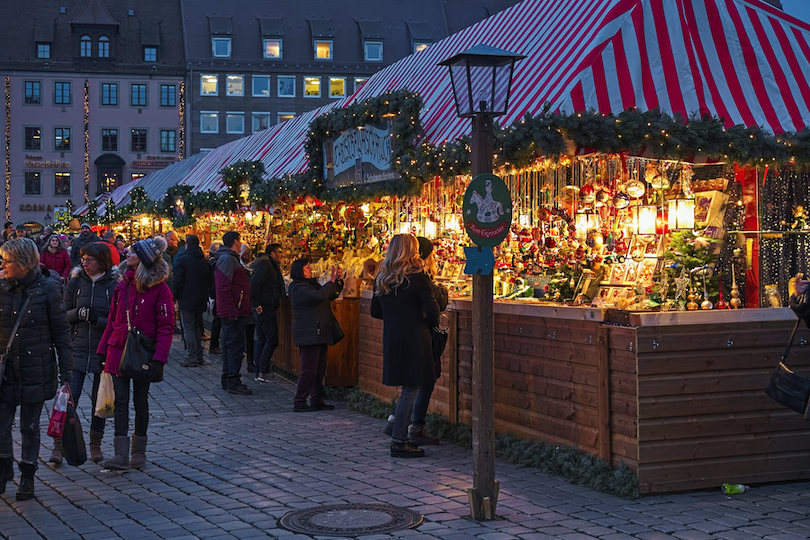
German Christmas markets are known the world over, and arguably the best of all is found in the Bavarian city of Nuremberg .
The Christkindlesmarkt is held annually in Nuremberg’s old town, and it has been in place since the 17th century.
The market is famous for its traditional atmosphere and festive decorations. It comprises elaborate wooden stalls, lights, and festive music.
Visitors can browse and purchase a wide range of seasonal holiday gifts, including handmade crafts, toys, and seasonal treats. Additionally, the market offers a range of food and drinks, including mulled wine and gingerbread.
The Nuremberg Christmas Market takes place in the weeks leading up to Christmas. It is one of the most popular things to do in Germany and a highlight of the city’s holiday festivities.
11. Rothenburg ob der Tauber
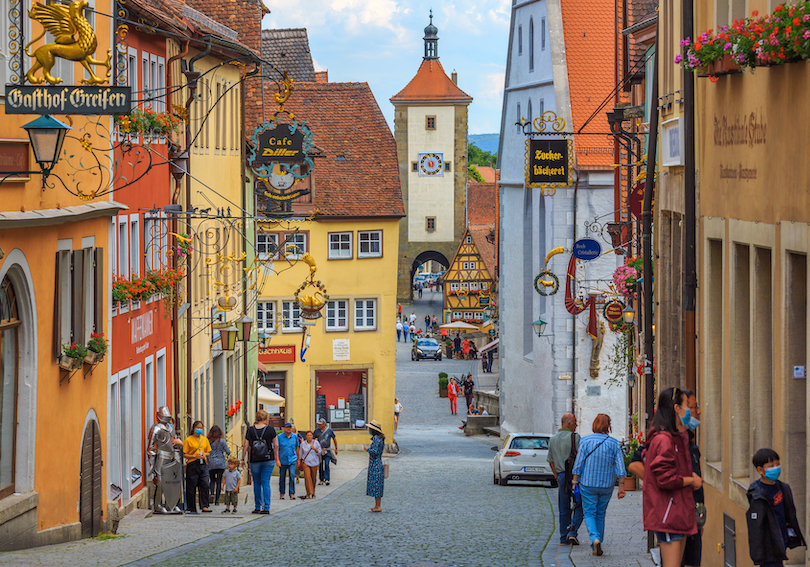
A true storybook village brought to life is Rothenburg ob der Tauber . Straight from the pages of a fairy tale, this Franconian town has a remarkably well preserved medieval center.
Overlooking the Tauber River, many of the churches and residences date back to the 15th and 16th centuries. A highlight of the town is the Market Square, which is flanked on one side by the 13th century Town Hall Tower.
It is also famous for its Christmas market, which is held annually and features traditional stalls selling gifts, food, and drinks.
Visitors can also take guided tours of the town’s impressive fortifications and ramparts. From them, you will also observe stunning views of the surrounding countryside.
10. Black Forest
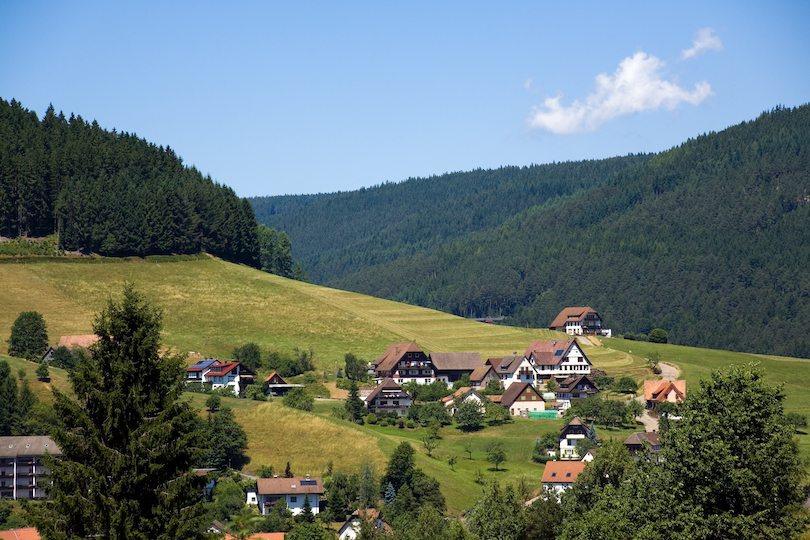
The Schwarzwald, or Black Forest, can be found in the southwestern corner of the country. The name comes from the thick tree canopy, and the forest is a mecca for those who love beautiful scenery and outdoor recreation.
Hiking, swimming in chilly Alpine lakes and mountain biking are popular things to do, but the Black Forest also has some urban alternatives. Within the forest are several towns and cities. Baden-Baden is a world-famous spa retreat perfect for relaxation, and Freiburg is a bustling university town with amazing cuisine and nightlife.
9. Romantic Rhine
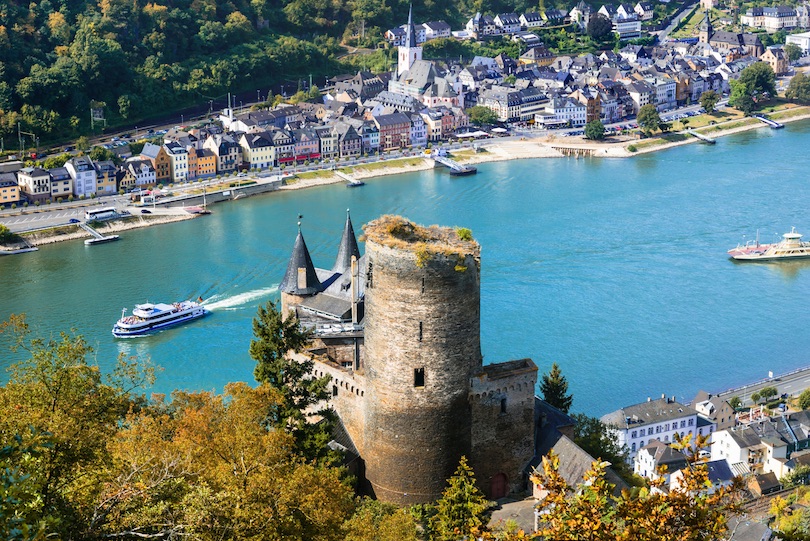
The Romantic Rhine is a picturesque stretch of the river Rhine in western Germany known for its incredible scenery and charming villages.
This section of the river extends from Bingen to Koblenz. It carves its way here through steep vineyard-covered hills topped with countless castles and ruins.
The river has been an important trade route into central Europe since ancient times and a string of small towns has grown up along the banks. Constrained in size, many of these old towns retain a historic feel today.
Additionally, the Romantic Rhine is famous for its scenic boat rides. These offer a fabulous way to immerse yourself in the region’s natural beauty.
8. Frauenkirche in Dresden
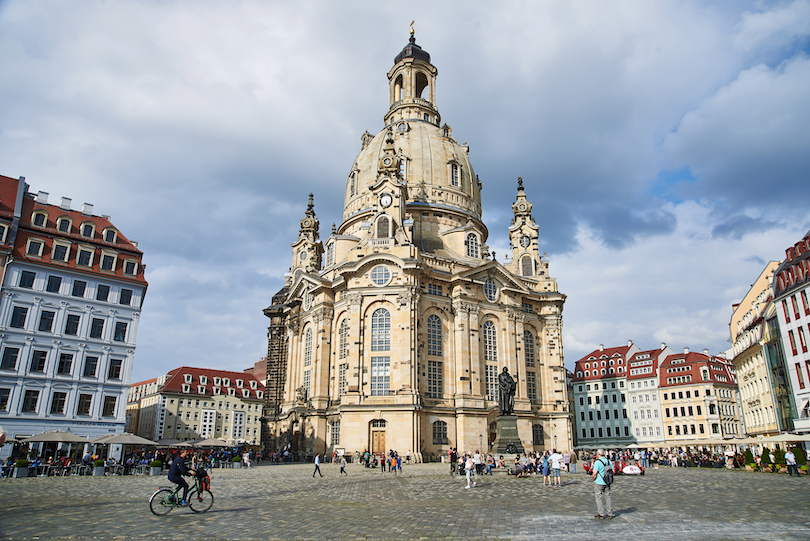
The Frauenkirche (Church of Our Lady) is a Lutheran church in Dresden. It is one of the city’s most famous landmarks and is known for its stunning baroque architecture. Notable features of it include its distinctive dome and towers.
The original church was constructed in the 18th century. On completion, it was heralded as one of Europe’s most impressive religious buildings. However, the church was destroyed during World War II and lay in ruins for decades.
In the 1990s, a major effort was launched to restore the church to its former glory. It was finally re-opened in 2005 after a meticulous rebuilding process.
Today, the Frauenkirche is a symbol of Dresden’s resilience. It is one of the city’s most popular tourist attractions , attracting visitors from all over the world.
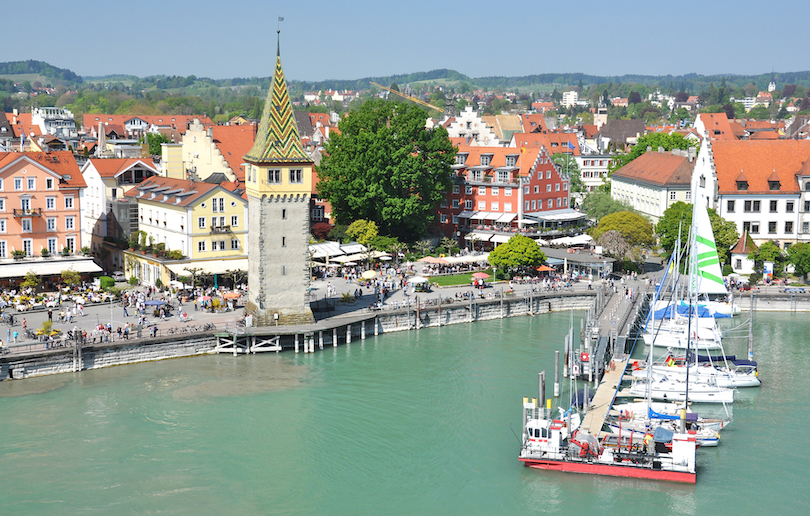
Lindau is a pretty town in southern Germany. It is situated on an island, on Lake Constance (Bodensee), near the Austrian border.
The city is connected with the mainland by bridge and railway and has about 3,000 inhabitants. Full of medieval and half-timbered buildings, Lindau is quite a popular tourist attraction.
One of its main focal points, its twee harbor features a Bavarian Lion statue, while its stone lighthouse showcases lake and mountain views.
The town is also noted for its Lindau Nobel Laureate Meetings. An annual event that brings Nobel Prize winners and young scientists together.
6. Oktoberfest
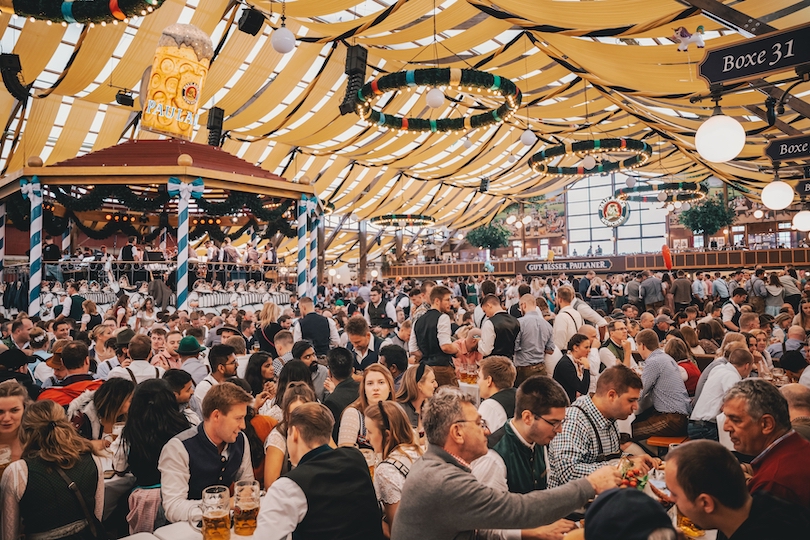
Oktoberfest is an iconic 16-day festival held annually in Munich from late September to the first weekend in October. It is the world’s largest beer festival and attracts millions of visitors from every continent.
The festival features beer tents, traditional German food, music, and rides. It also features other activities like parades and competitions.
Oktoberfest has its roots in the celebration of the marriage of King Ludwig I of Bavaria to Princess Therese von Sachsen-Hildburghausen in 1810. It has since evolved into a world-class international event.
Many visitors wear traditional German attire to enter into the spirit of things. For men, this involves dressing in lederhosen. For women, it requires putting on dirndls. All of which add to the festive atmosphere.
See also: Where to Stay in Munich
5. Cologne Cathedral
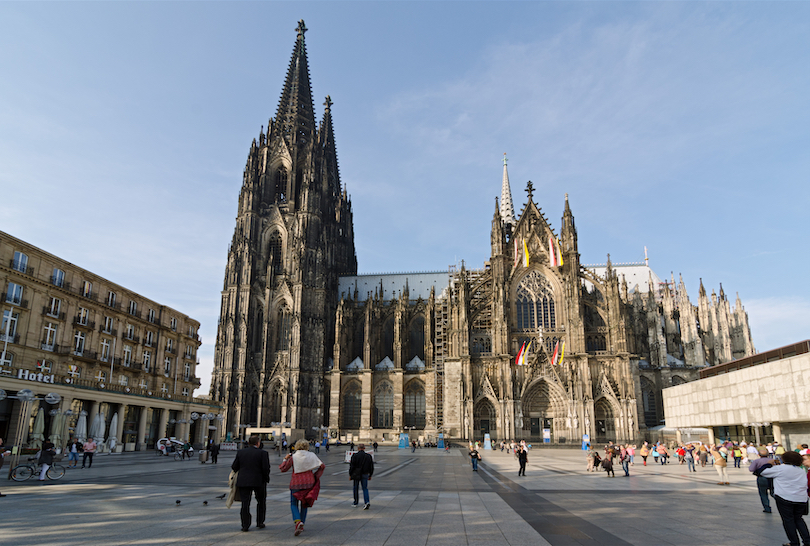
Easily the greatest Gothic cathedral in Germany, Cologne Cathedral (Kölner Dom) has been Cologne’s most famous landmark for centuries. It is one of the largest and most famous structures of its kind in Europe. The cathedral was built over the 12th and 13th centuries. But its construction was interrupted and not completed until the late 19th century.
It is known for its twin spires, visible from much of the city. It is also noted for its elaborate stained glass windows, which date from the 14th to the 20th century.
The cathedral houses many important works of art. One of which is the Shrine of the Three Kings. This is said to contain the bones of the Three Wise Men, which goes a long way to explaining why it is such a popular attraction.
4. Holstentor in Lübeck
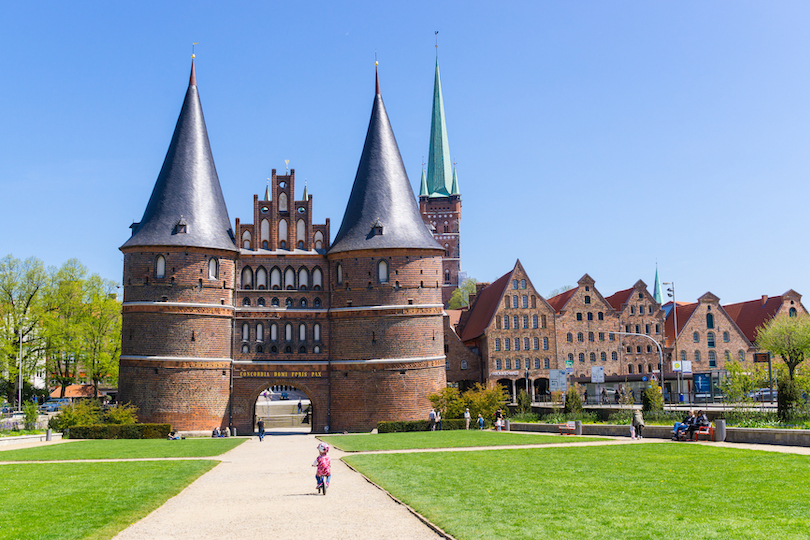
Holstentor is a historic city gate in Lübeck. It was built in the late 15th century and is one of the city’s most recognizable landmarks.
The gate is considered a masterpiece of brick Gothic architecture. It is now a museum showcasing the history of Lübeck and the Hanseatic League.
Completed in 1464, this stunning Gothic building is part of Lübeck’s medieval city fortifications. It is one of a couple of city gates you can visit – the other being the Citadel Gate.
Because of its two captivating round towers and arched entrance it is regarded as a symbol of Lübeck . Together with the old city center (Altstadt) of Lübeck it is one of the most visited tourist attractions in Germany.
3. Heidelberg Old City

Located in the Neckar river valley, Heidelberg is one Germany’s most popular tourist destinations. During WWII, the city was almost completely spared by allied bombings which destroyed most of Germany’s larger inner cities. As a result, Heidelberg has retained its baroque charm of narrow streets, picturesque houses and picturesque bridges.
The city’s most iconic landmark is the Heidelberg Castle, a Renaissance-style fortress perched atop a hill that overlooks it.
Other prominent attractions include the Philosophers’ Walk, a scenic path along the river, and the Church of the Holy Spirit. The latter is a Gothic-style church with a unique tower. You will want to take plenty of photos of it.
The old city is a beautiful area to walk around and offers a glimpse into Heidelberg’s rich and colorful history.
2. Brandenburg Gate in Berlin
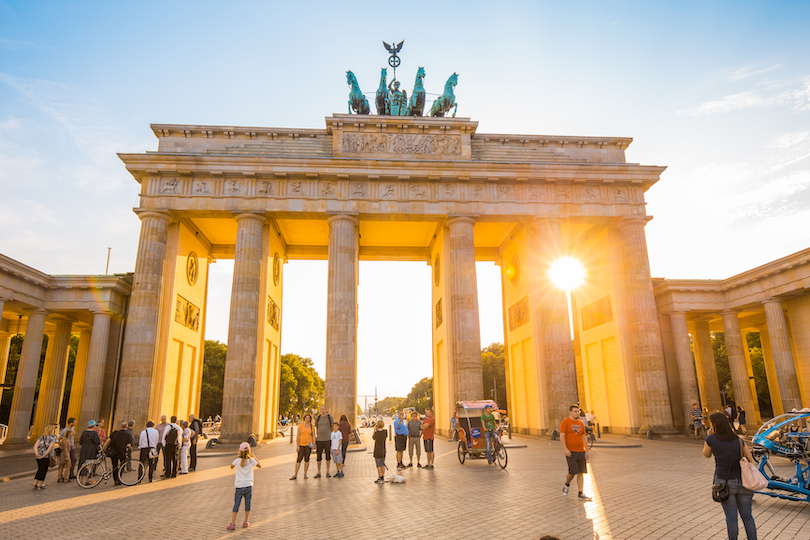
The Brandenburg Gate is a famous monument in Berlin.
It was built in the late 18th century and was originally intended as a symbol of peace. The gate is one of the most recognizable landmarks in Germany and represents the country’s reunification.
It stands 26 meters tall and is adorned with classical Greek-style sculptures. Over the years the Brandenburg Gate has been the site of many historic events. These include the fall of the Berlin Wall in 1989.
See also: Where to Stay in Berlin
Today, many people come here to see it , have their photograph taken by it, and recall where they were when that consequential moment in time happened.
1. Neuschwanstein
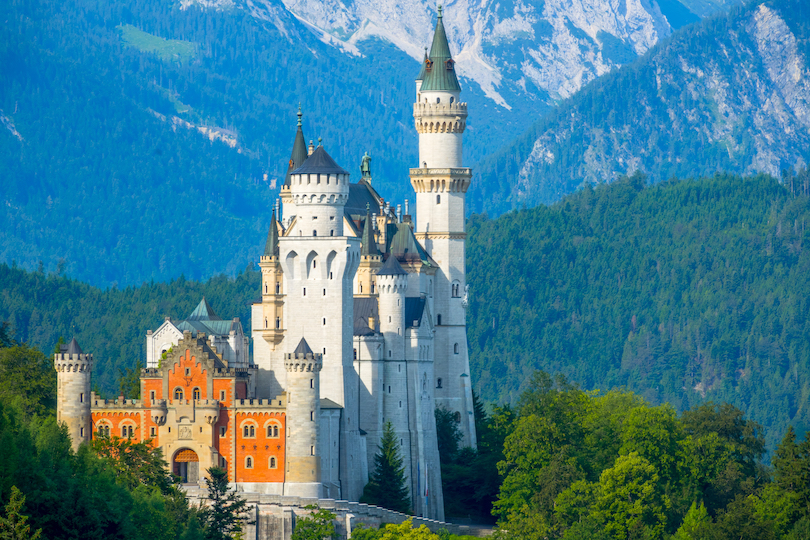
The ultimate fairytale castle, Neuschwanstein Castle is a 19th-century palace located on a craggy hill that overlooks the village of Hohenschwangau in Bavaria.
Built by the command of King Ludwig II to be a retreat, it was intended to evoke the romance of the Middle Ages. The king was declared insane when the castle was almost completed in 1886 and found dead a few days later.
Today, the castle is one of Europe’s most beautiful examples of Gothic Revival architecture. Its stunning design and scenic location in the Bavarian Alps have inspired countless works of fiction. Most notably, it is featured as the castle in Disney’s Sleeping Beauty.
Visitors to Neuschwanstein can only enter its interior by partaking in a guided tour of it. If you choose to do so, you will get to see its ornate decor, furnishings, and murals.
Map of Tourist Attractions in Germany
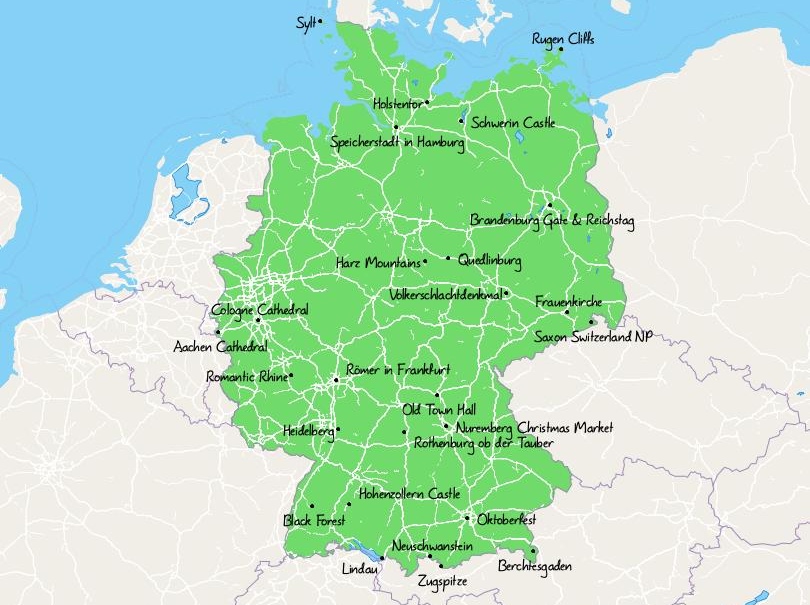
Share this post:
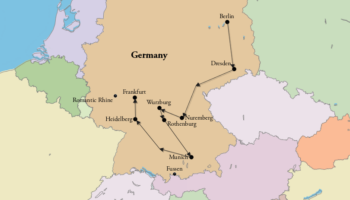
How to Spend 2 Weeks in Germany: DIY Itinerary
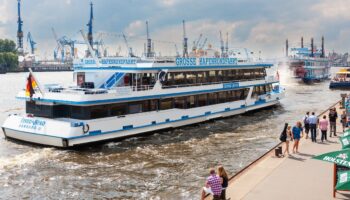
10 Most Underrated Destinations in Germany
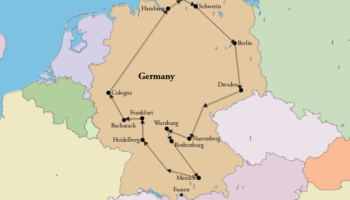
How To Spend 3 Weeks in Germany: DIY Itinerary
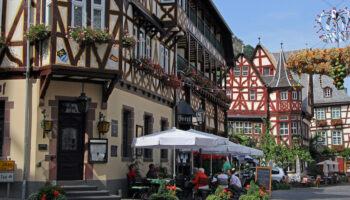
17 Best Places to Visit in Germany
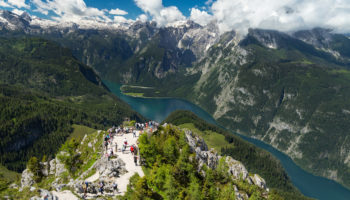
10 Most Beautiful National Parks in Germany
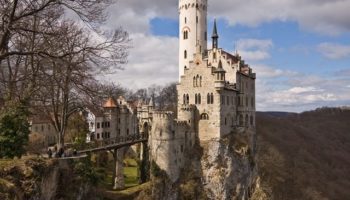
10 Most Beautiful Castles in Germany
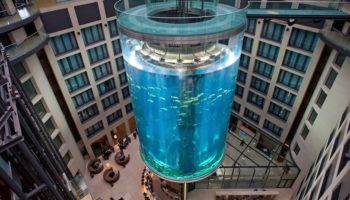
11 Most Amazing Hotels in Germany
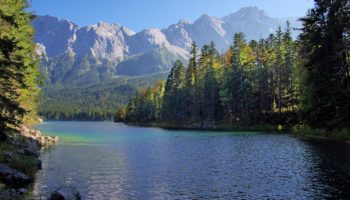
12 Most Beautiful Lakes in Germany
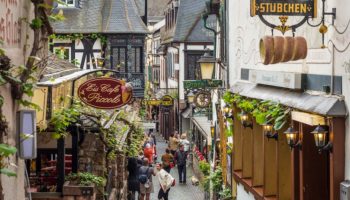
14 Most Scenic Small Towns in Germany
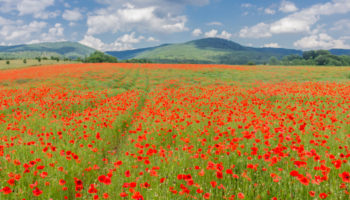
16 Most Beautiful Regions of Germany
Reader interactions.
October 28, 2019 at 4:46 am
My hometown Wuerzburg is lovely too
May 2, 2017 at 4:45 pm
I live in Germany, Dortmund and I love visiting the city and others around, each time I visit a new city I learn something new. God bless Germany and it’s people
April 28, 2017 at 2:38 pm
germany is amazing
March 15, 2017 at 11:27 pm
Last year I have visited Finsterwalde and I was so amazed. It’s also called Die Sängerstadt.
February 23, 2017 at 2:38 pm
15) It was called the Reichstag but after WW2 it was renamed to the Bundestag.
November 19, 2016 at 6:24 pm
I just visited Germany. Munich is an impressive city. But what I liked the most was visiting the Alps. Going up 10,000 feet in a cable car was awesome. The small towns are as amazing as the big cities. Everything is beautiful.
November 15, 2016 at 10:39 am
I obtained my PhD degree from Germany, and I visited many German cities when I was a student there. To my mind, Heidelberg is the most beautiful one, it is totally different from others.
March 23, 2015 at 3:20 pm
I would love to go to Germany one day
July 27, 2014 at 12:59 pm
Another highlight in Germany is the river the Mosel, beautiful villages and a wine growing area. Also the insane King Ludwig had more castles built in the south of Germany that are very much worth a visit.
July 18, 2014 at 1:42 am
I love Germany and hope to travel to there.thanks alot!
June 2, 2014 at 2:21 am
Visited five times now and always end up going back to cologne…beautiful city
March 12, 2014 at 9:48 am
one of the most enjoyable countries in the worl. love the food and the beer,my wife loves the wine. going back for my third time,speak English only but no problem getting around.i use the bahn to travel,rented an apt. in dusseldorf,hotels in Frankfurt berlin,so many places I have to see of my homeland.my grandparents came from Germany,near mainz and vienna
October 1, 2013 at 2:42 am
I have two year training in Footwears technology at permasan GERMANY.I found GERMANY a most beautifull country.German are very friendly and beautyfull by heart and soul,they are unforgetable for me.
August 6, 2013 at 4:52 am
I am really lucky to visit this beautiful country in 2012 September. The people, its places all are amazing and accommodative !!!!! I just cannot forget all about it.
June 25, 2013 at 9:46 am
Germany is a beautiful country,I would like to visit.
May 31, 2013 at 6:00 am
my fav. were the rugen hills they are beautiful. I want to visit germany
March 27, 2013 at 4:16 am
Another highlight in Germany is the river the Mosel, beautiful villages and a wine growing area.
Also the insane King Ludwig had more castles built in the south of Germany that are very much worth a visit.
November 1, 2012 at 9:00 pm
love germany i went there and it is awesome i just love it <3
October 16, 2012 at 8:09 pm
Woah! I like Rugen Cliffs!
October 5, 2012 at 1:58 am
German is a very interesting country.. so just want to visit it 0nce!!!
October 4, 2012 at 9:46 am
I LOVE LOVE LOVE the pics of germany…..i will hopefully visit Germany one day! 🙂
Leave a Reply Cancel reply
Your email address will not be published. Required fields are marked *
This site uses Akismet to reduce spam. Learn how your comment data is processed .

IMAGES
VIDEO
COMMENTS
Things to Do in Brandenburg, Germany: See Tripadvisor's 134,807 traveler reviews and photos of Brandenburg tourist attractions. Find what to do today or anytime in June. We have reviews of the best places to see in Brandenburg. Visit top-rated & must-see attractions.
Brandenburg an der Havel, Germany. Located in the state of the same name and often referred to simply as Brandenburg City, Brandenburg offers many things to do for those planning on visiting its many notable tourist attractions. The most popular of these fun places to visit include the famous Dominsel, or Cathedral Island, the city's many ...
Taking a break at Tropical Islands means swimming, diving or just relaxing by the Tropical Sea or Lagoon, exploring the world's largest indoor rainforest or getting your adrenalin pumping on Germany…. 9. Biosphere Potsdam. SUMMER FOR 365 DAYS A YEAR In the center of Potsdam is a place with a holiday-atmosphere 365 days a year - the ...
Marvel at the grandeur of Sanssouci Palace and Gardens. This Potsdam attraction deserves its own mention. Also known as Germany's Versailles, the palace was built as an opulent summer residence for the Prussian king Frederick the Great in 1745. It's smaller than its French cousin but lacks nothing in terms of beauty and grandeur.
By greenpandatracks. This little castle is always worth to visit, though it's not castle sanssouci. Catch a audioguide and stroll thru the... 21. Charlottenhof Castle. 119. Castles. By Abbykat. But it was the end of a long day seeing palaces in Potsdam and we were glad to see the inside of this small manor...
8. Tropical Islands. 1,980. Water Parks. Taking a break at Tropical Islands means swimming, diving or just relaxing by the Tropical Sea or Lagoon, exploring the world's largest indoor rainforest or getting your adrenalin pumping on Germany's highest water slide tower. Plus lots of other great attractions.
10. Cottbus. Cottbus is the second-largest city in Brandenburg and contains many interesting attractions that make it worth exploring. Located about 125 km southeast of Berlin, on the banks of the River Spree, Cottbus is a university city most famous for the stunning Branitzer Park and Branitz Castle.
Things to Do in Brandenburg, Germany: See Tripadvisor's 134,206 traveler reviews and photos of Brandenburg tourist attractions. Find what to do today, this weekend or in February. We have reviews of the best places to see in Brandenburg. Visit top-rated & must-see attractions.
8. Tropical Islands. 1,973. Water Parks. Taking a break at Tropical Islands means swimming, diving or just relaxing by the Tropical Sea or Lagoon, exploring the world's largest indoor rainforest or getting your adrenalin pumping on Germany's highest water slide tower. Plus lots of other great attractions.
per adult. Memorial and Museum Sachsenhausen Camp by Private Car. Historical Tours. from. R 7 309. per adult. Things to Do in Brandenburg, Germany: See Tripadvisor's 134 231 traveller reviews and photos of Brandenburg tourist attractions. Find what to do today, this weekend or in March.
The top 20 Attractions in Brandenburg. 1. Glienicker Brücke. Bike Touring Highlight. The Glienicker Bridge was built in 1907 as a connection between Berlin and Potsdam. ... From the end of April to the beginning of May, a special gift from the Japanese to the reunified Germany blooms here.
Brandenburg is the region around the vibrant metropolis of Berlin. Discover the state capital Potsdam - with its palaces and gardens, which are a UNESCO World Heritage Site, as well as Europe's largest river and lake landscape with more than 3,000 lakes and 33,000 kilometres of waterways. Here you will find information and services for your ...
Berlin-Brandenburg tourist information ... Cultural attractions in Brandenburg From museums and palaces to industrial culture. ... Brandenburg's historical places of remembrances dating back to the periods of national socialism, the GDR and a divided Germany between 1933-1990.
1. Visit the Historic Home of Germany's Royals: Sanssouci Palace Sanssouci Palace and the New Rooms. Widely considered one of the top tourist attractions in Germany, Sanssouci Palace (Schloss Sanssouci) was built in 1745 based on sketches by Frederick the Great.The result, a splendid single-story Rococo building with an elliptical dome in the center and circular rooms at each end, is simply ...
Here is the list of things to do in Brandenburg and tourist attractions in city. ... The B. Kuhlmann Museum in Brandenburg, Germany was started in 1992 by Bernd Kuhlmann, a local historian and collector. Kuhlmann had been collecting historical artifacts and documents related to the city of Brandenburg for many years and wanted to share his ...
Most Popular Tourist Attractions in Brandenburg - Places to be. Tourist Attractions ; Weather ; Webcams ; Tourist Attractions. Europe. ... Lower Oder Valley National Park is Germany's only wetland national park as well as the first... Tourist Attraction . Museum of Aviation Finowfurt . 19 °C. User Rating. 1 Tag (Ad.)
In addition to its outdoor attractions, Potsdam has several museums and historical sites worth visiting. The Museum of Natural History is a great place to learn about the area's flora and fauna, and the Brandenburg Gate symbolizes the city's history. Things to Do in Potsdam, Germany 1. The Neues Palais
Information about Brandenburg (Germany) Brandenburg is located in eastern Germany, and it also shares a border with Poland. It is considered one of the prominent tourist destinations in Germany because it has a charming nature, as many rivers pass through the state, including the Spree and Oder, and it also includes a large group of lakes estimated at about 3,500 lakes, in addition to about ...
The train sets off from the Sandower Dreieck station by the Stadion der Freundschaft and makes a 3.2-kilometre trip to the Branitzer Park via the zoo and the Spreeauenpark. Since the Federal Garden Show in 1995 the trains have been pulled by bright green electric-powered locomotives. 9. Staatstheater Cottbus.
New Garden. The New Garden (Neuer Garten) is a park, roughly 100 ha in area, that lies in the north of Potsdam and borders on the lakes of Heiliger See and the Jungfernsee.In 1787 Frederick William II had a new garden laid out on this site, hence the name. The park was intended to reflect the prevailing fashion for the English garden, in contrast to the outmoded style of the Baroque ornamental ...
And for nature lovers, there's a whole world of possibilities in Germany's great outdoors. For ideas and recommendations to help plan your travels, be sure to read our list of the top tourist attractions in Germany. On This Page: 1. Berlin's Brandenburg Gate. 2. Cologne Cathedral (Kölner Dom) 3.
Whatever your interests, to help you get the most out of your sightseeing adventures, be sure to refer often to our list of the top tourist attractions in Berlin, Germany. On This Page: 1. The Brandenburg Gate. 2. The Rebuilt Reichstag. 3.
14. Hohenzollern Castle. The neo-Gothic Hohenzollern Castle is perched on a bluff overlooking two small towns at the foothills of the Swabian Alps. Not far from the town of Hechingen in central Germany, this popular tourist destination is known for its stunning architecture and historical significance.